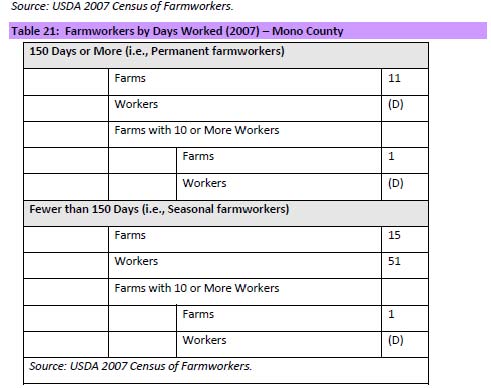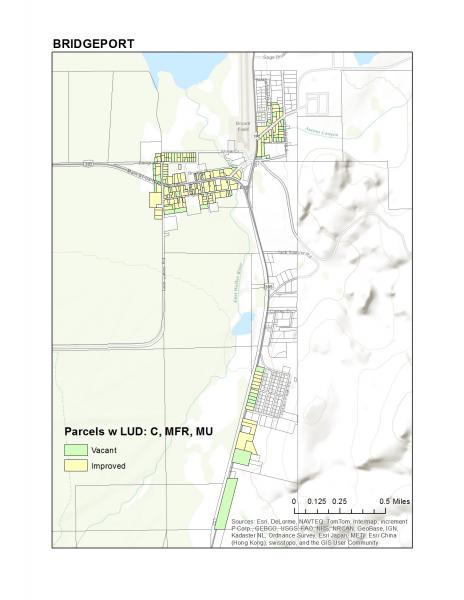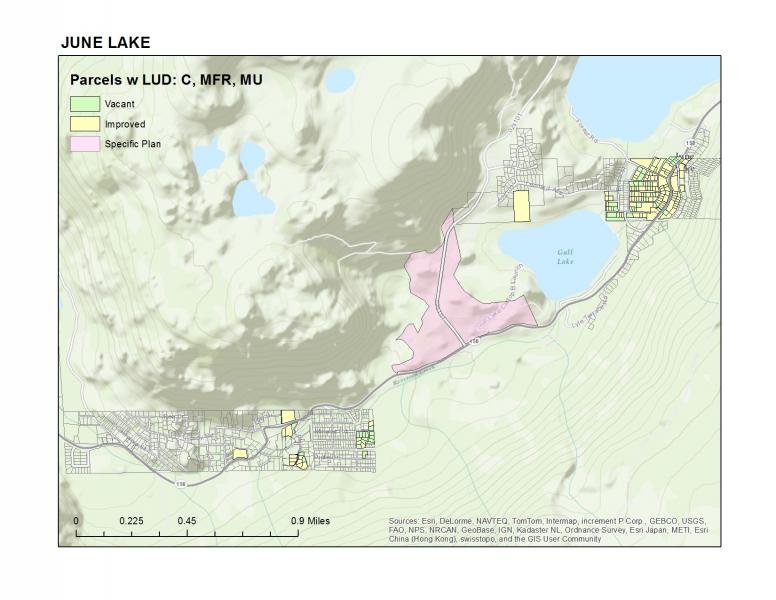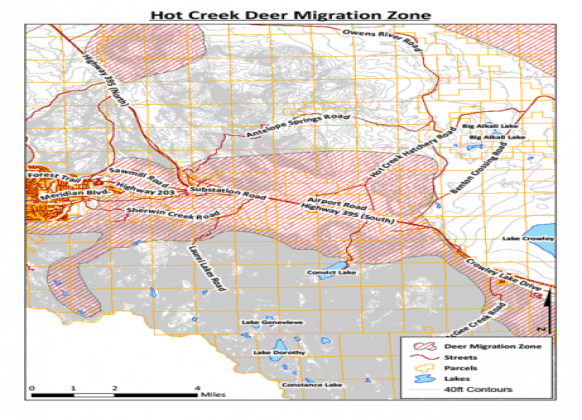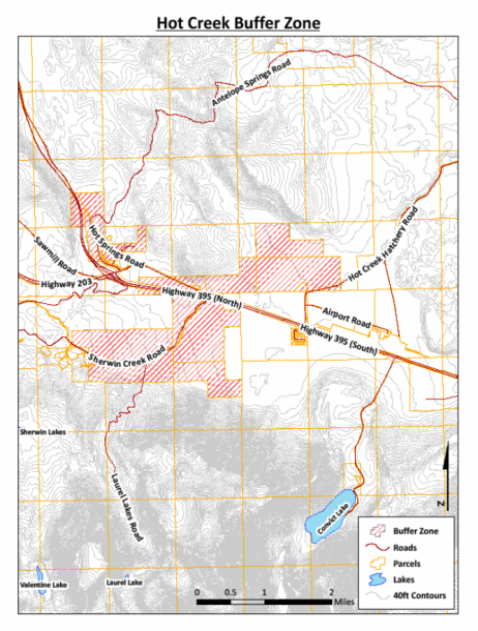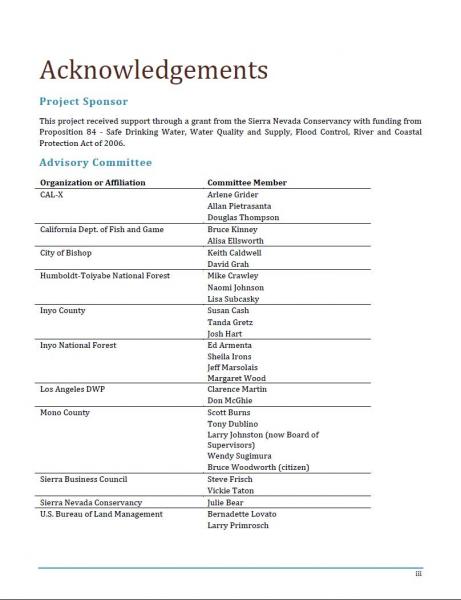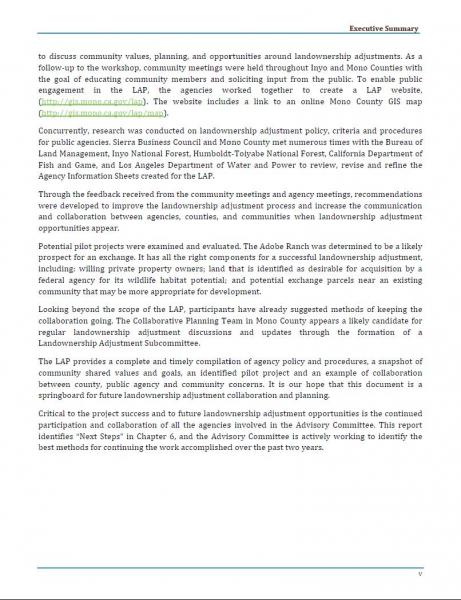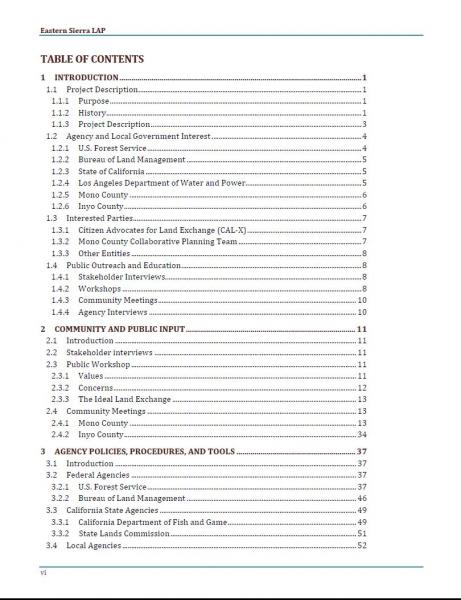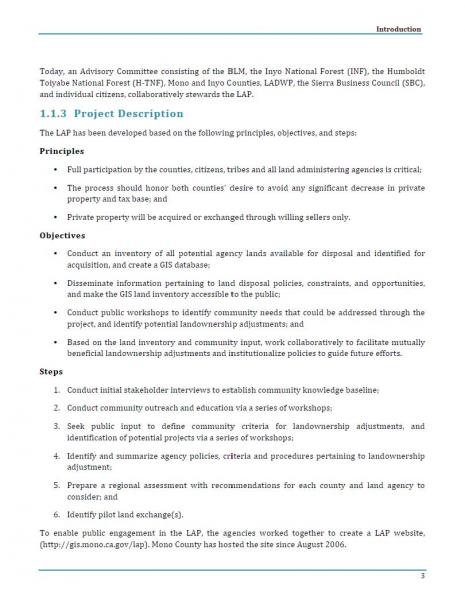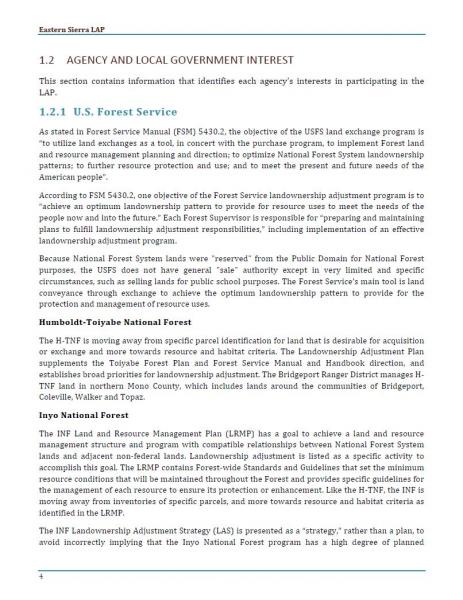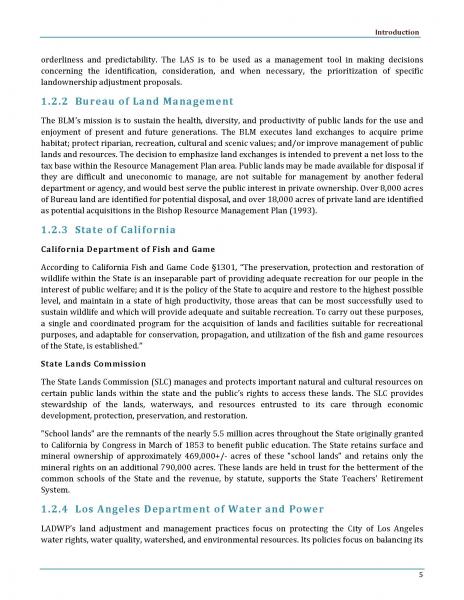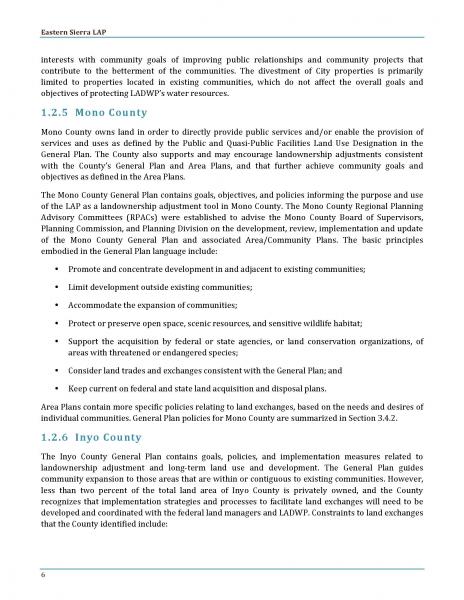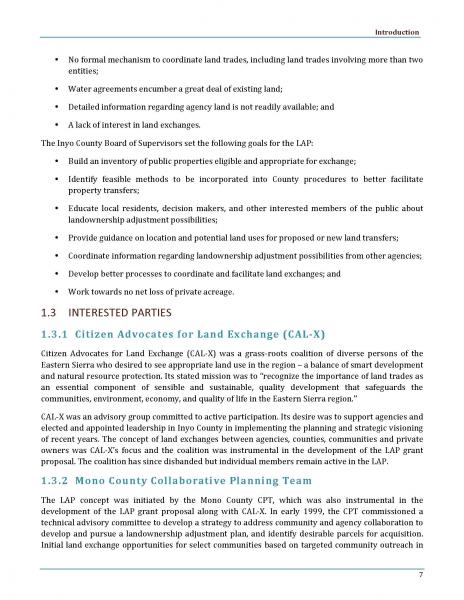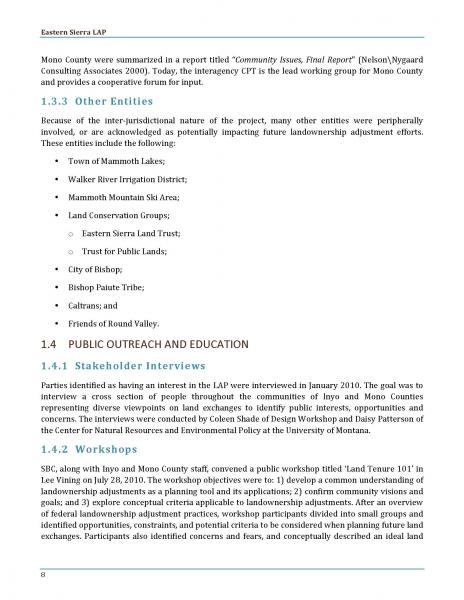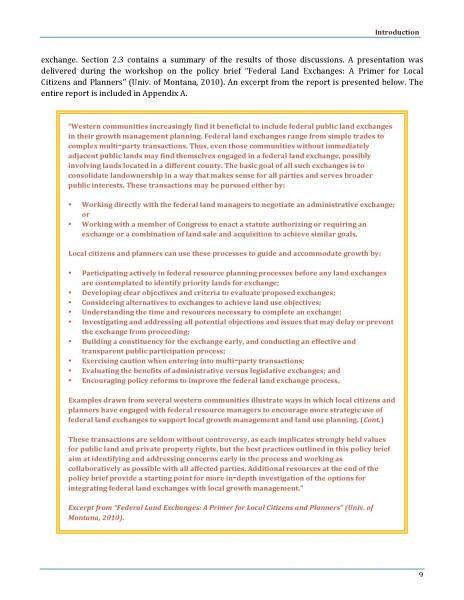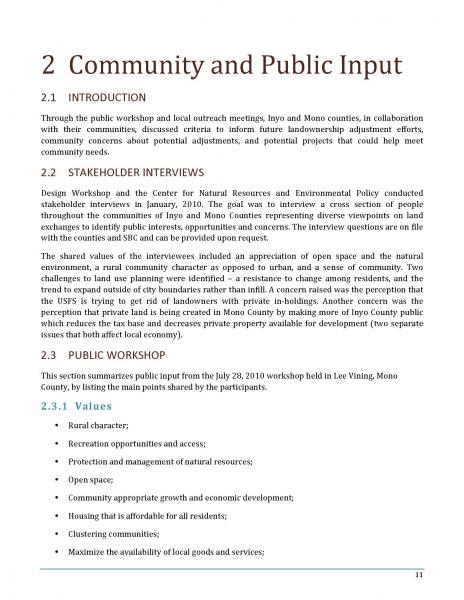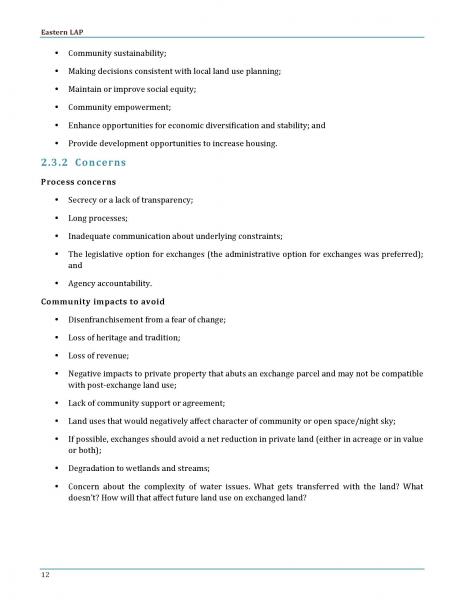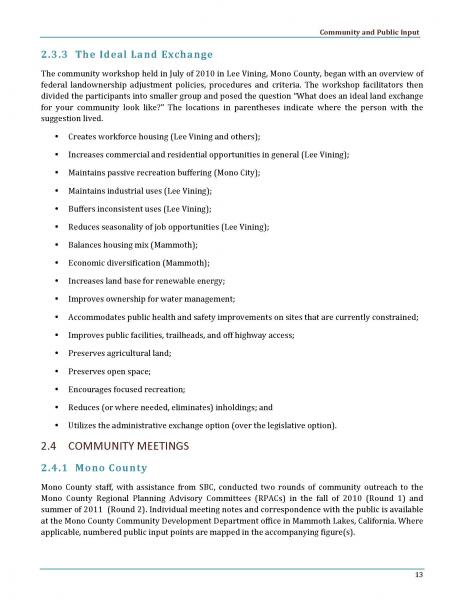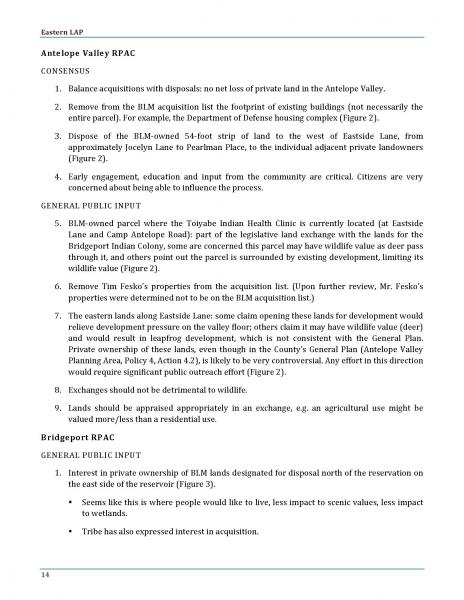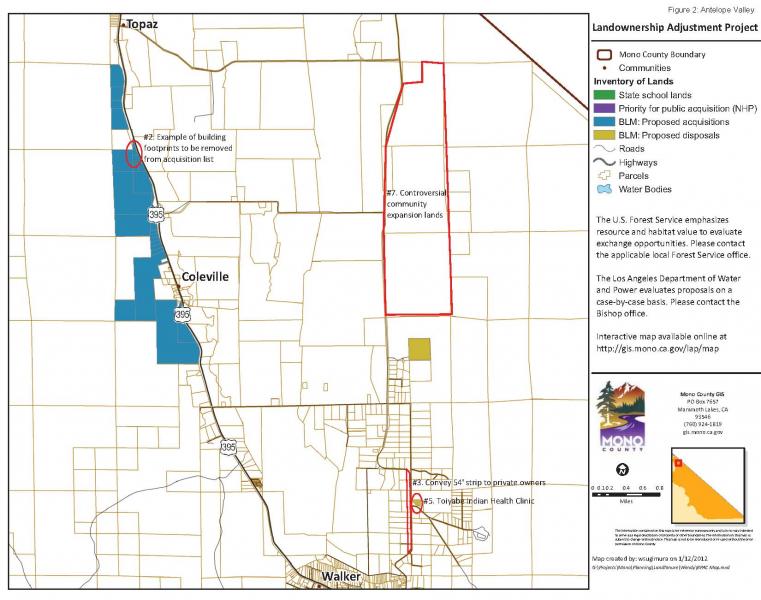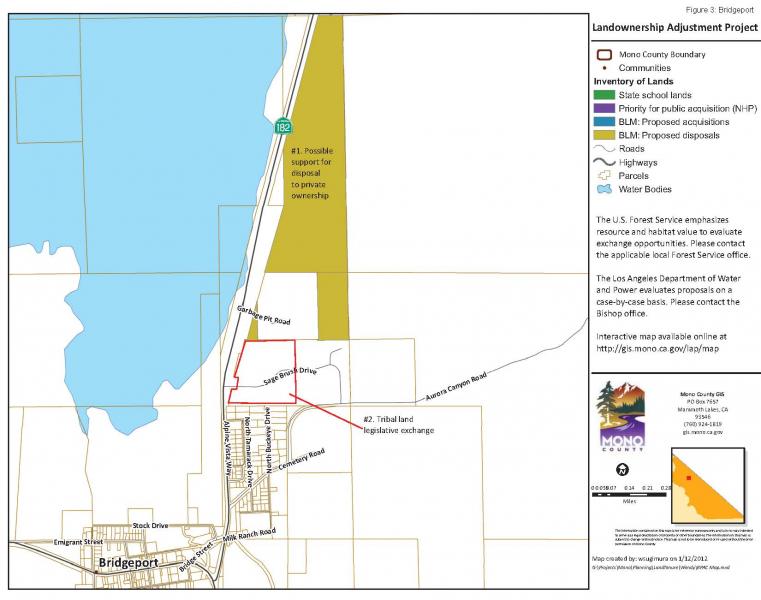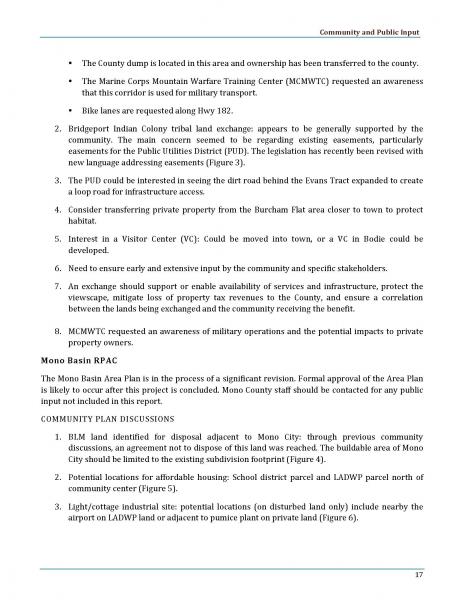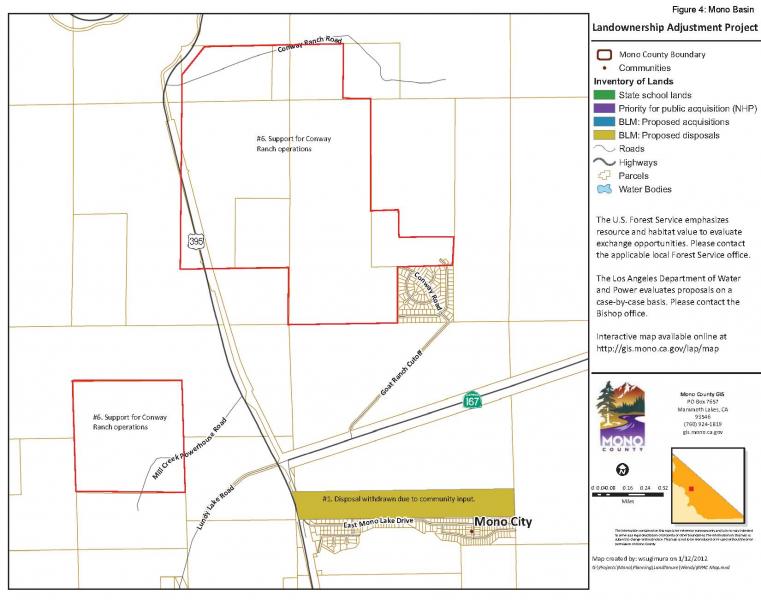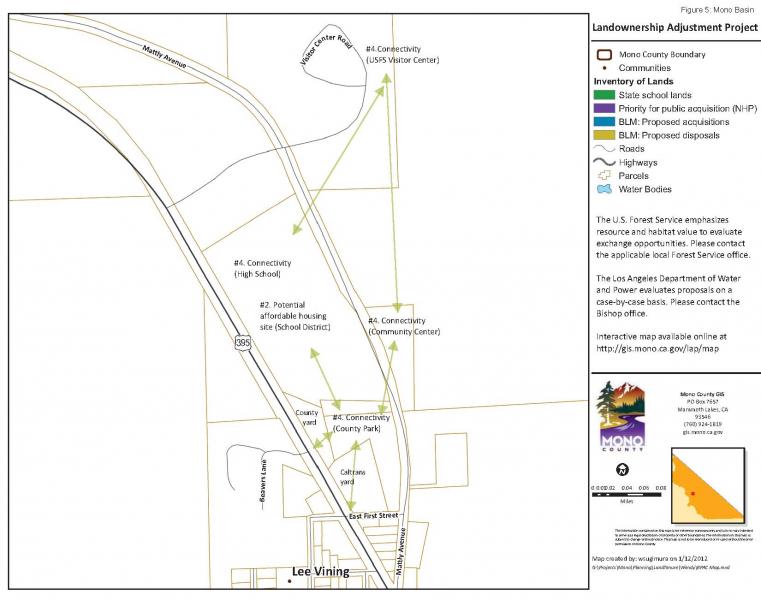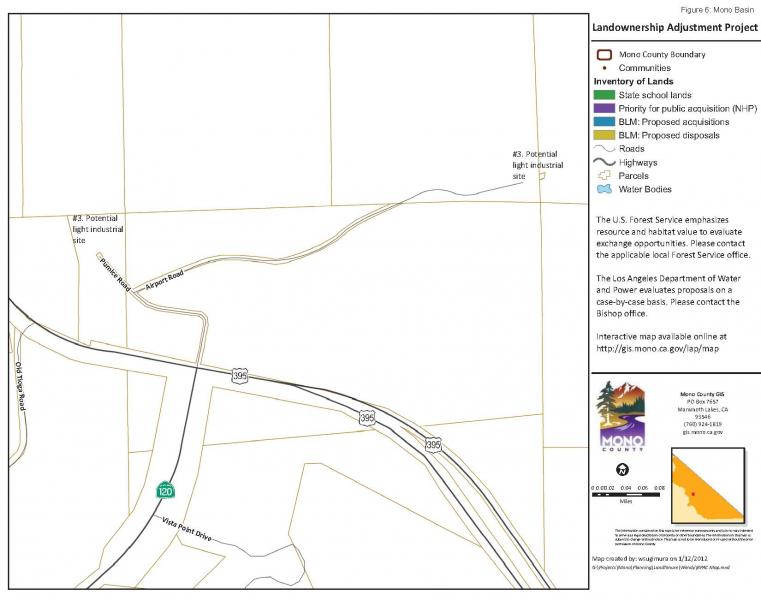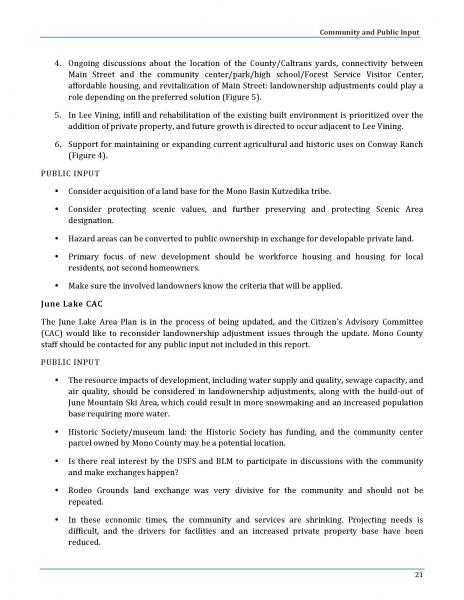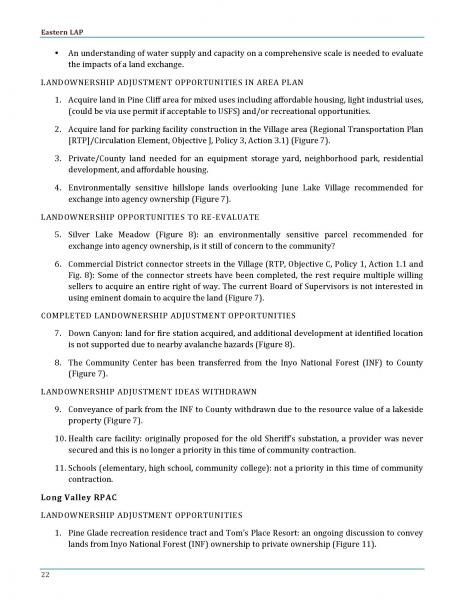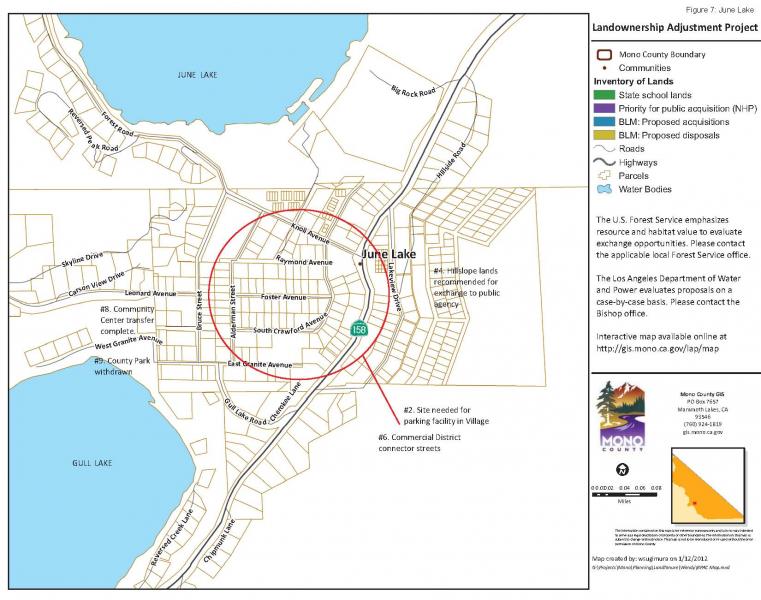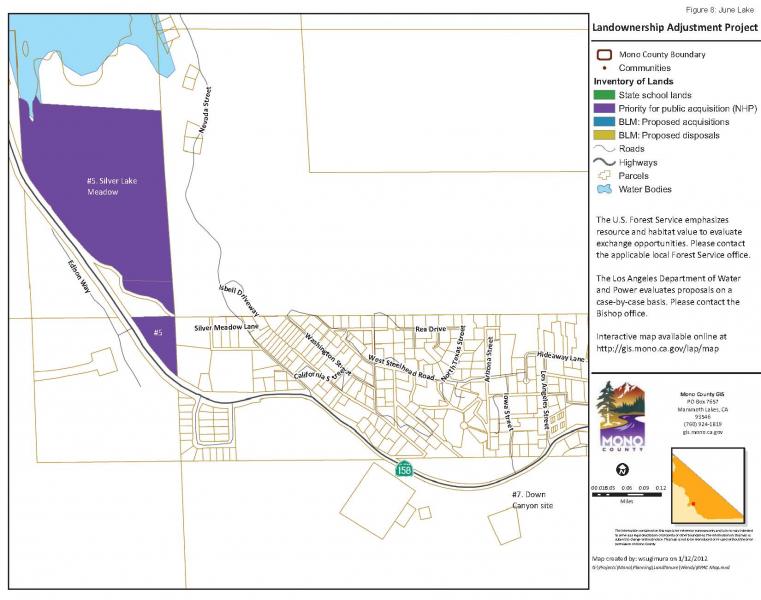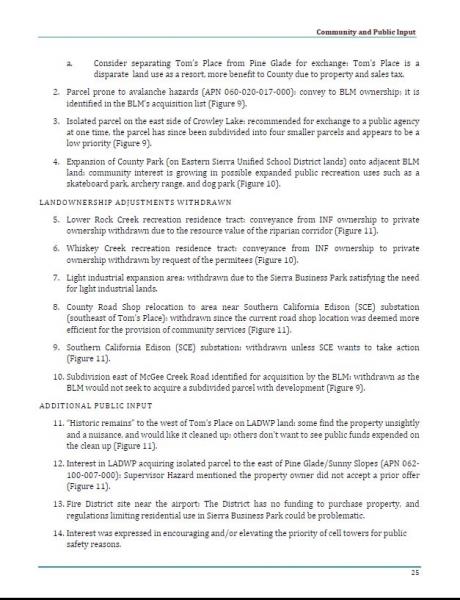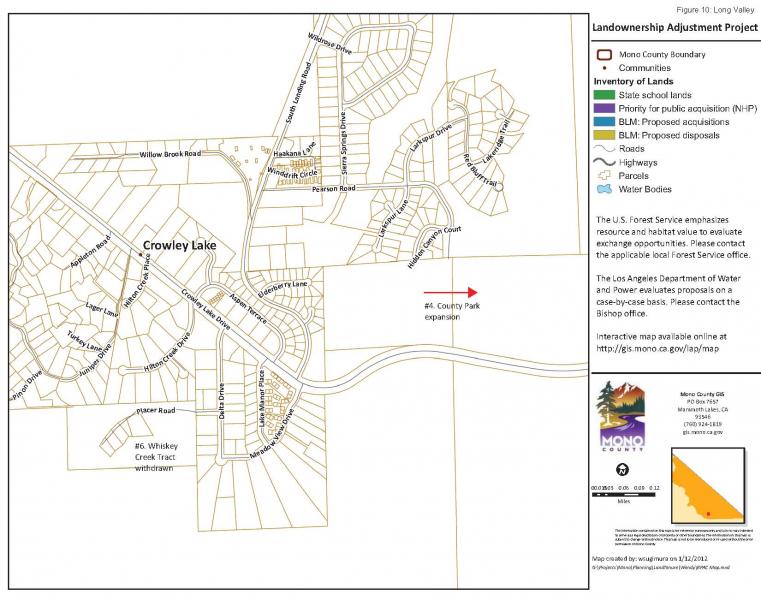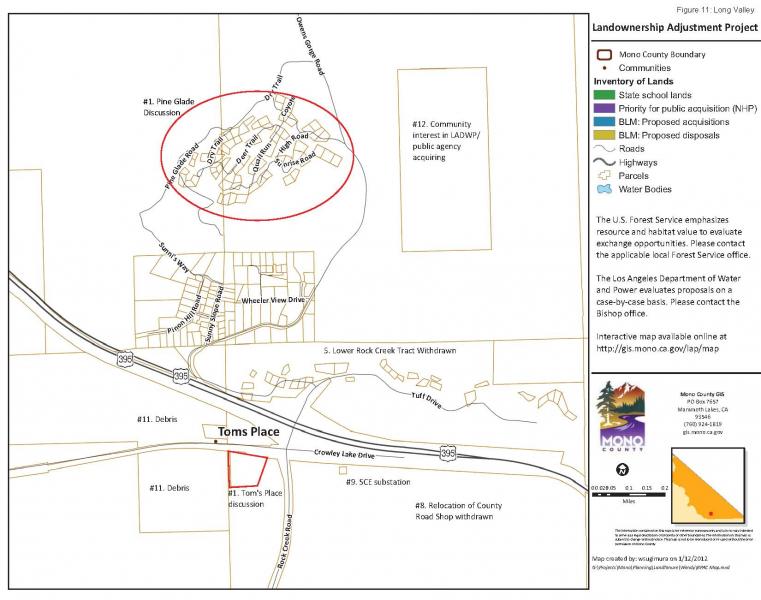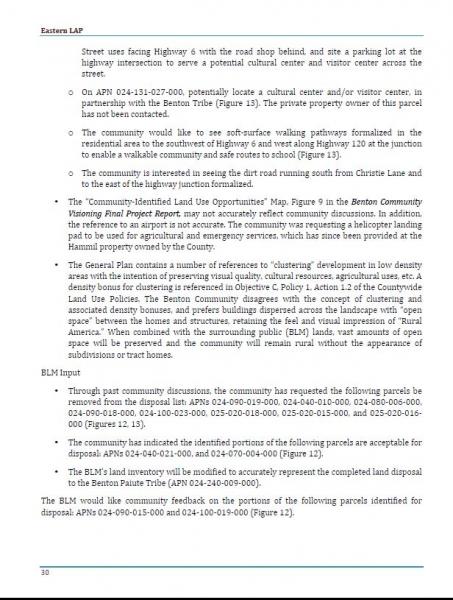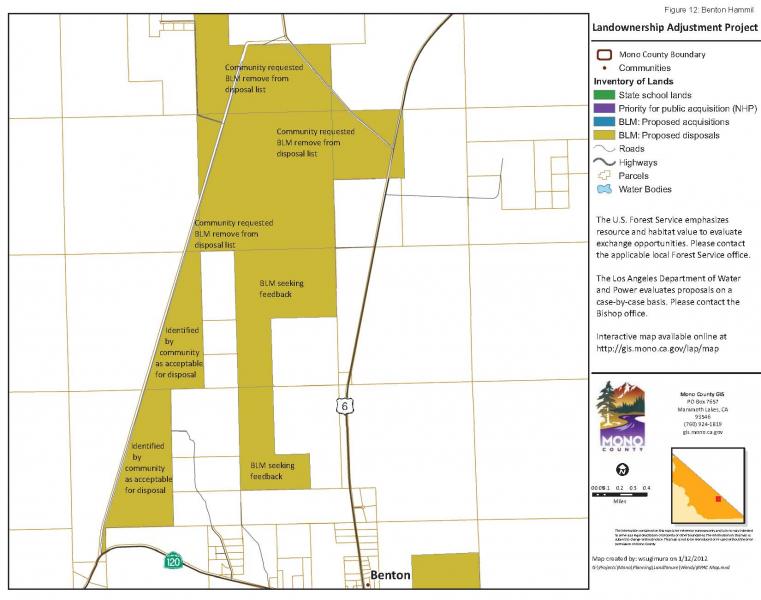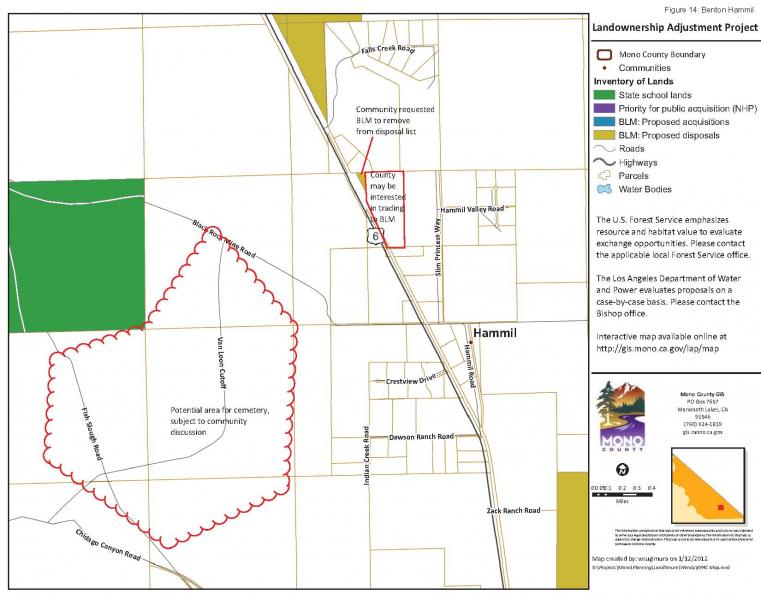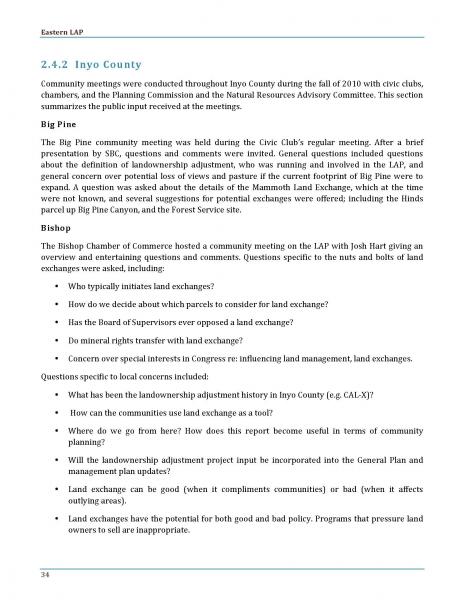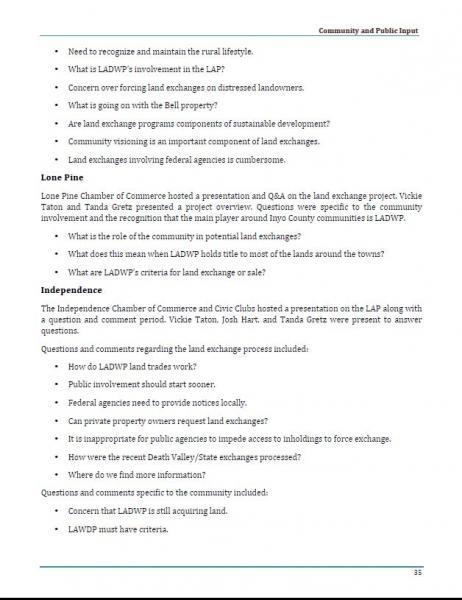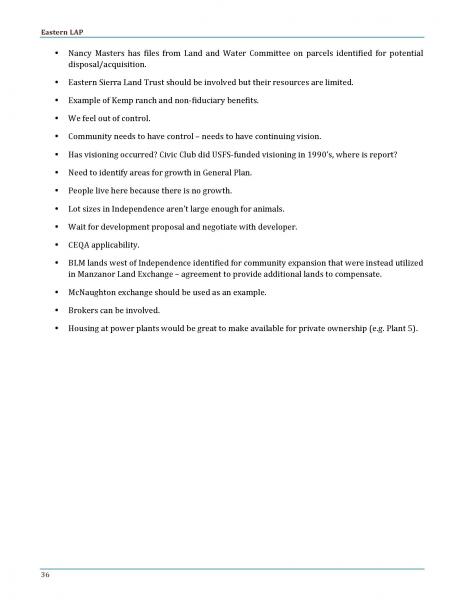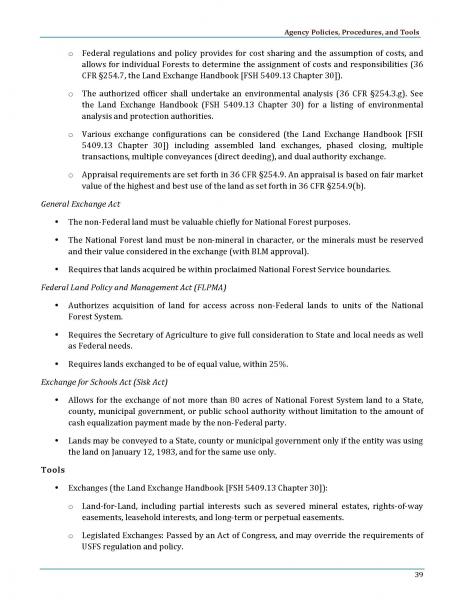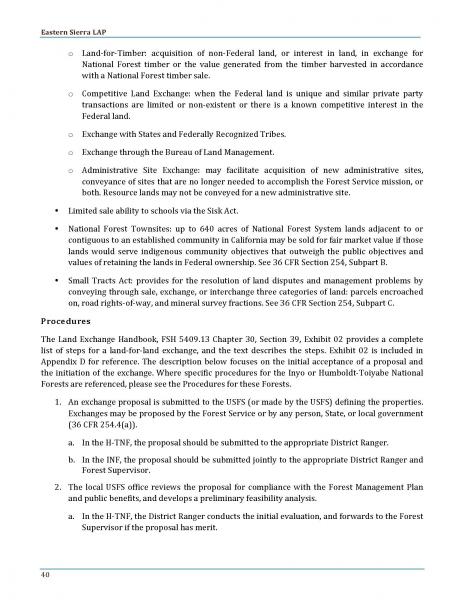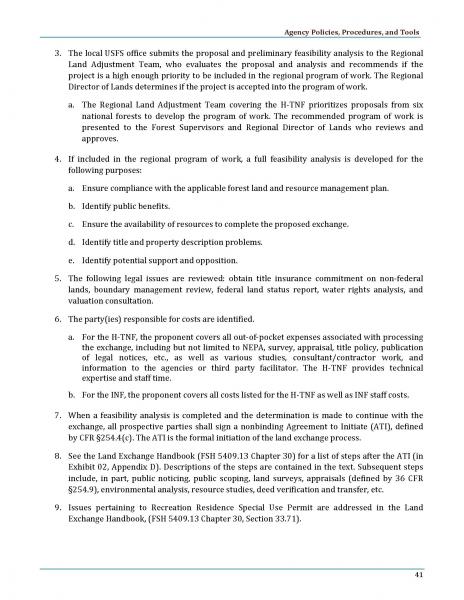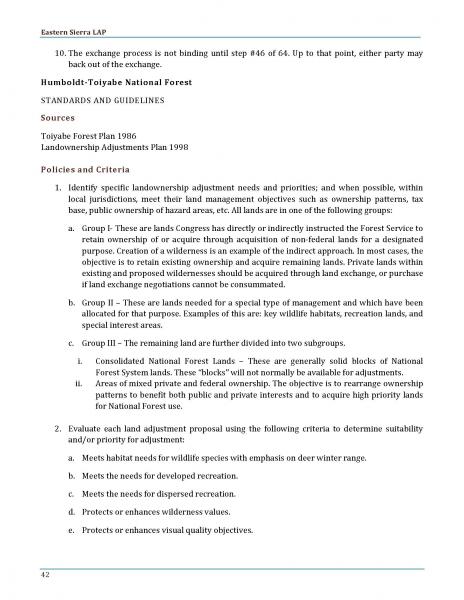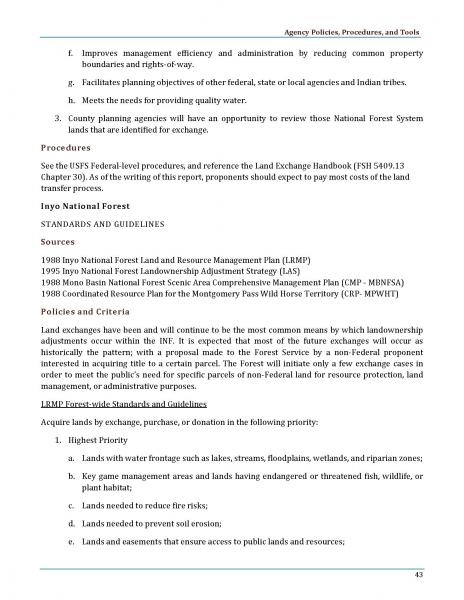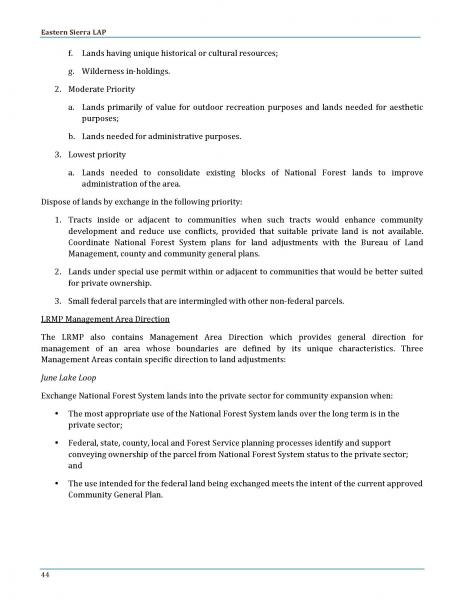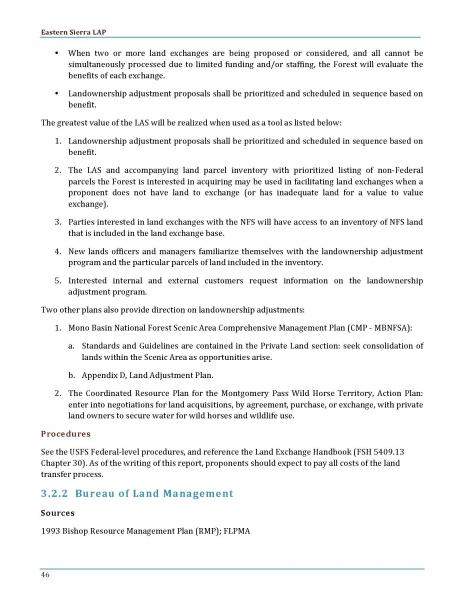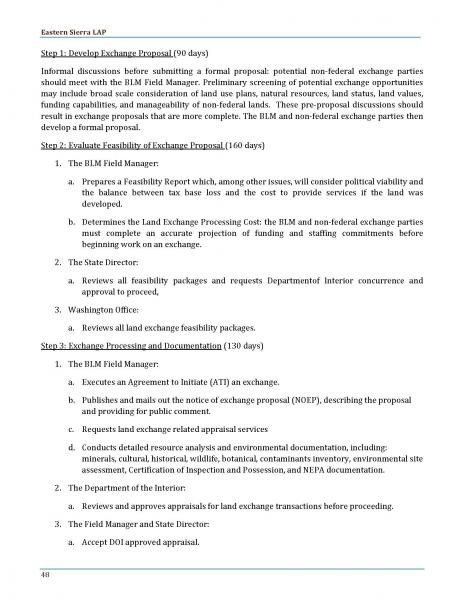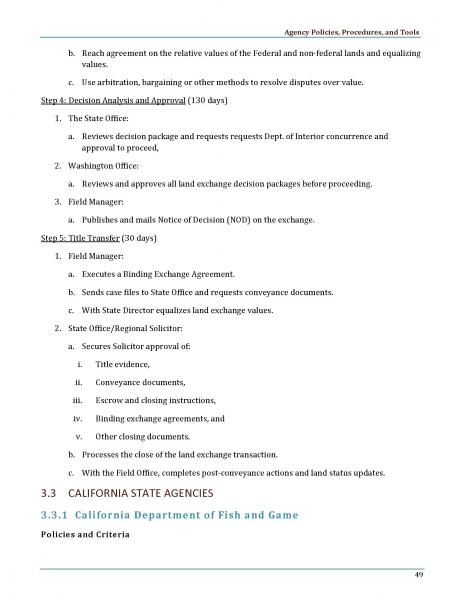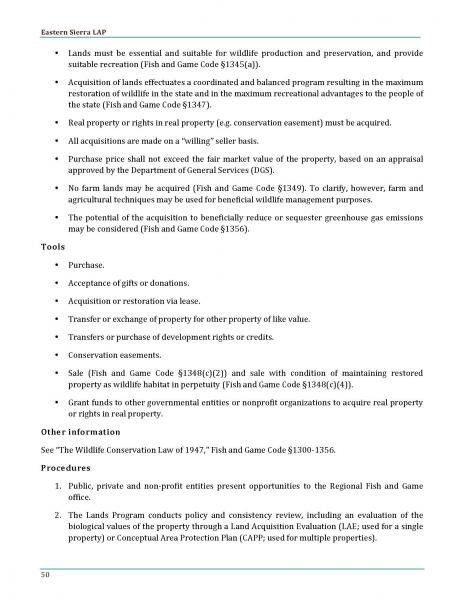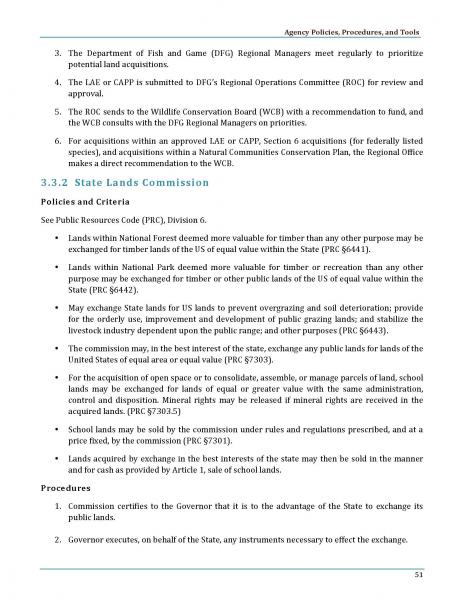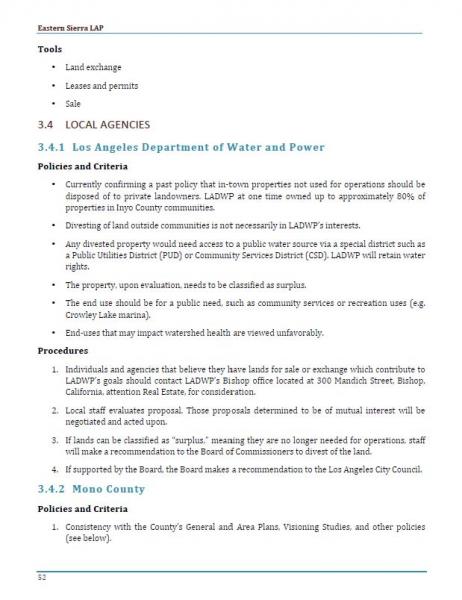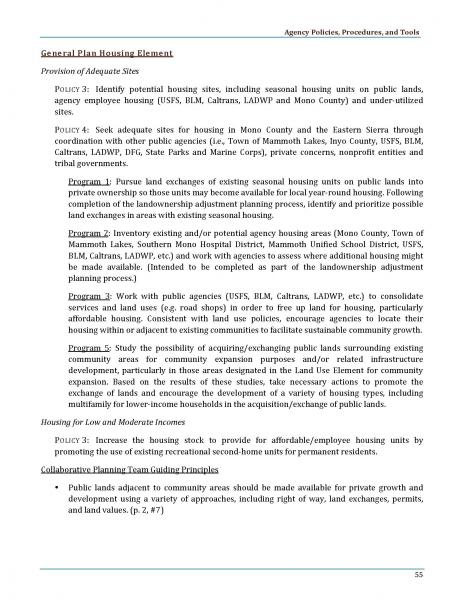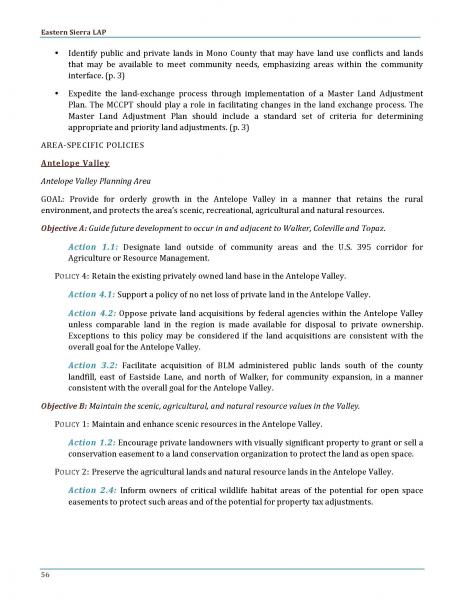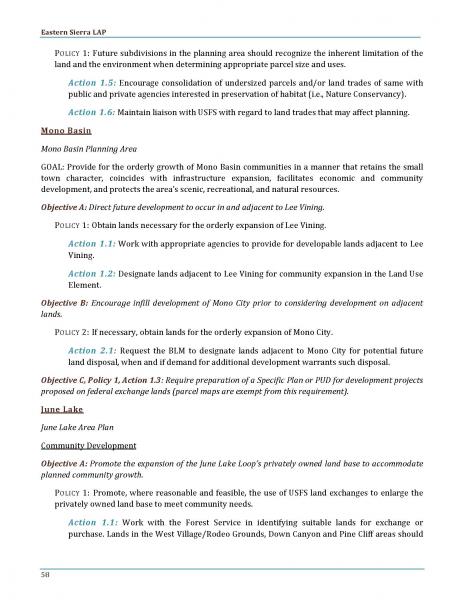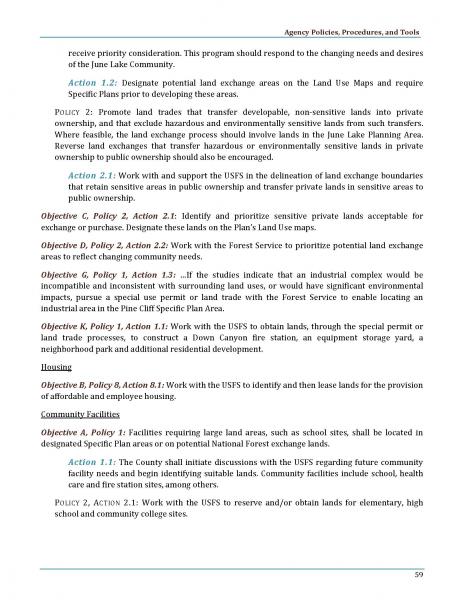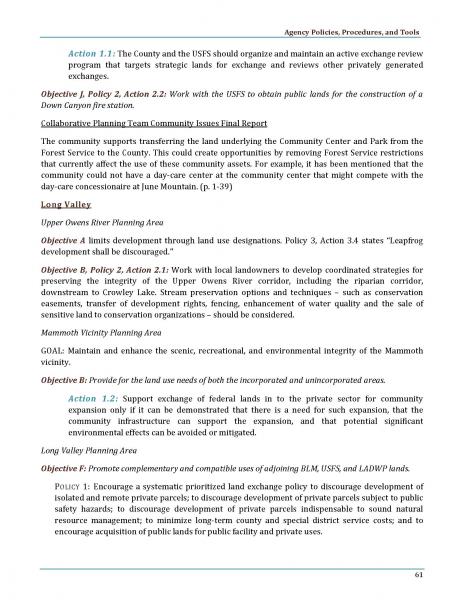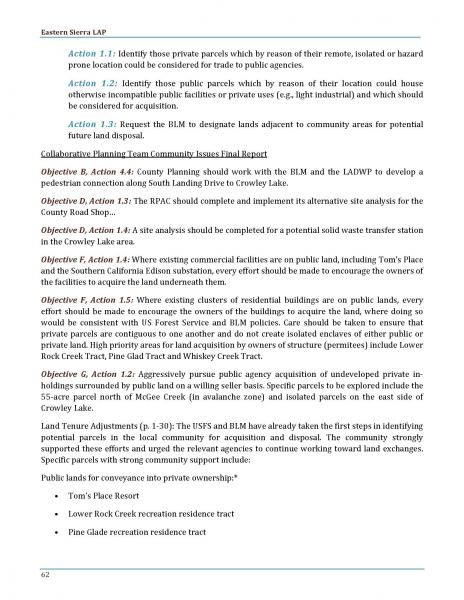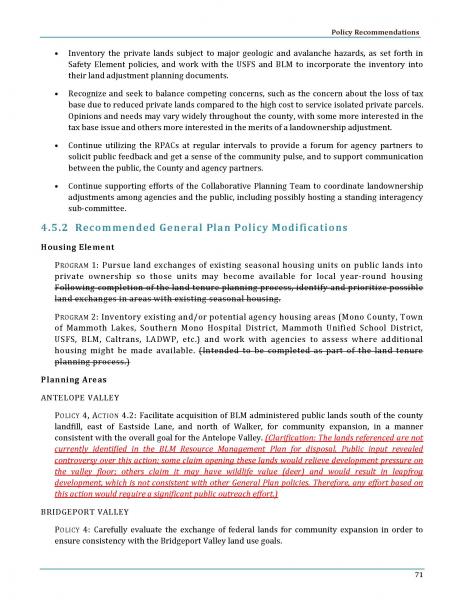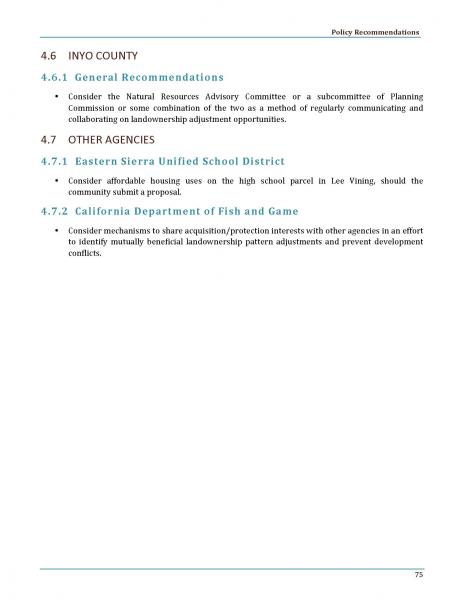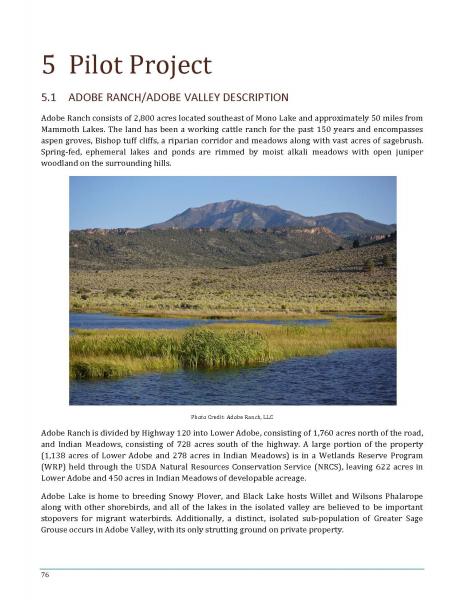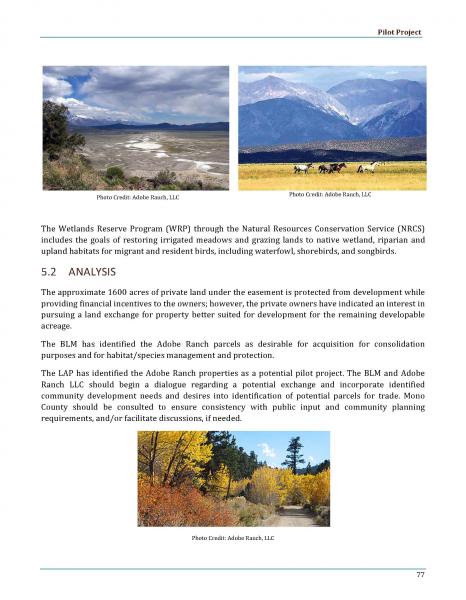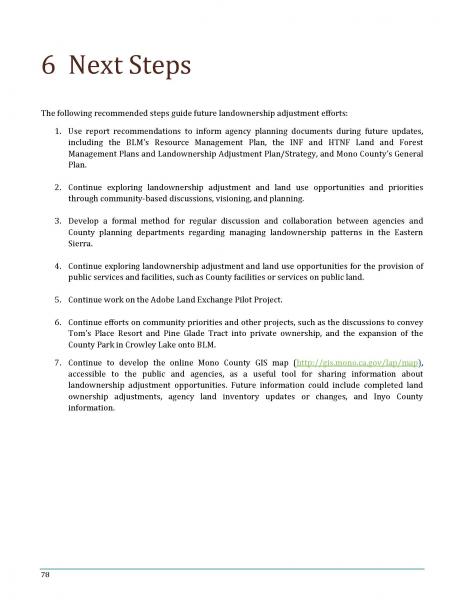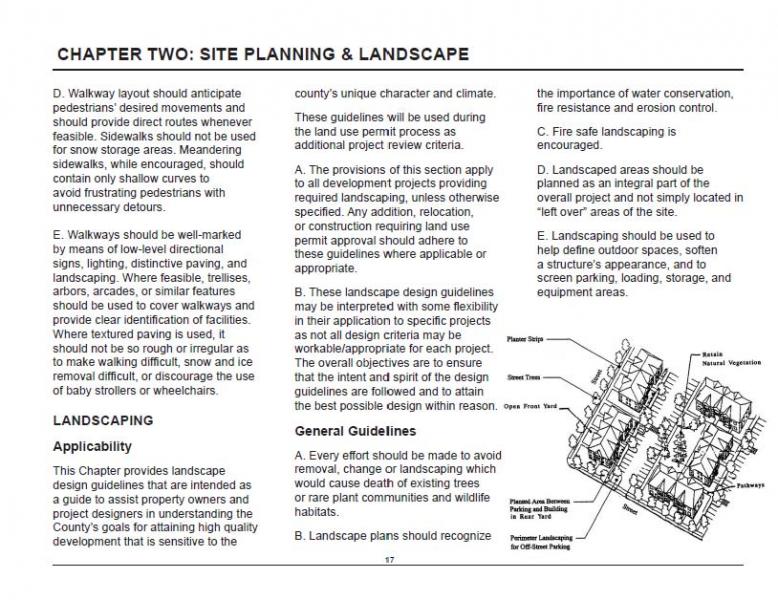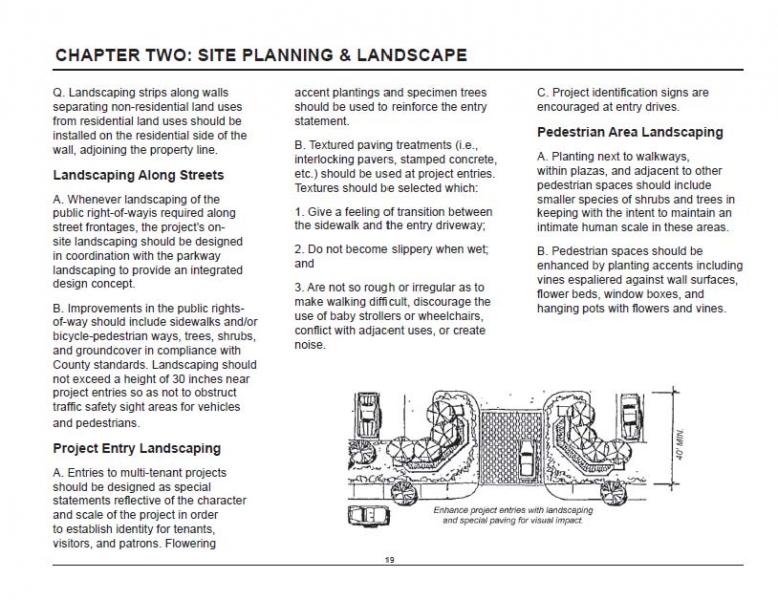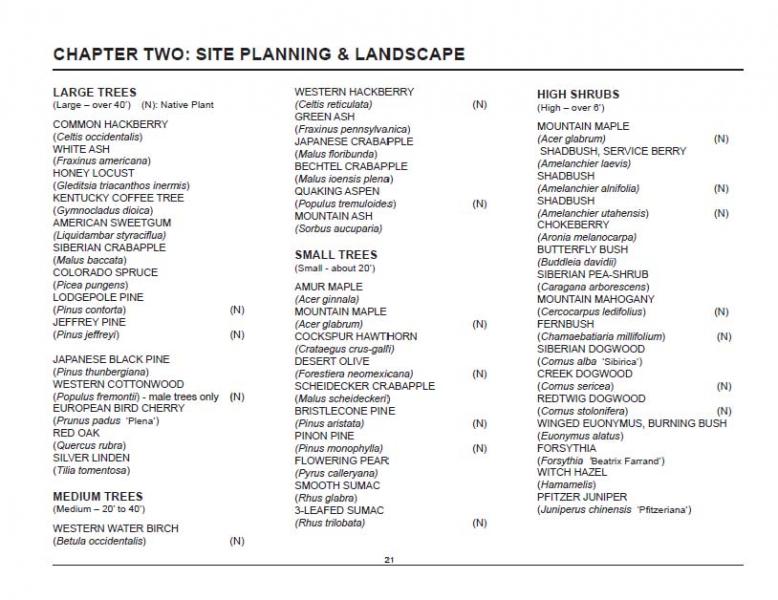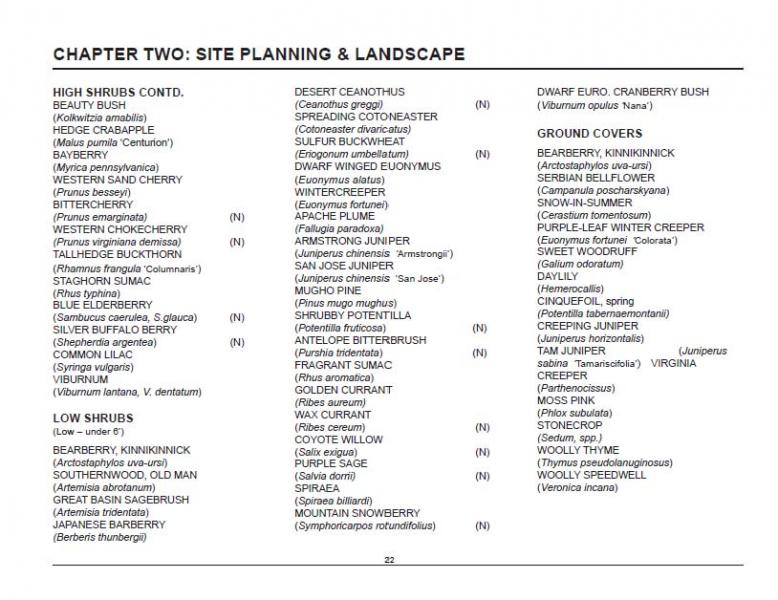Overview
This chapter addresses the following topics:
- An analysis of the assumptions concerning population growth, land use and development, economic factors, environmental issues, and required consistency with other transportation-related planning documents that have been used to determine future transportation issues and needs in the planning area.
- A description of the existing transportation systems in the unincorporated areas of Mono County and in the town of Mammoth Lakes.
- An assessment of existing and projected transportation needs in the county and the town.
Assumptions Used to Determine Transportation Needs
This section identifies and analyzes assumptions about population growth, land use and development, economic factors, environmental issues, and consistency with other transportation planning documents used to determine future transportation issues and needs in the planning area. The issues and needs developed in this chapter, along with their underlying assumptions, guide the development of the goals, policies, and objectives in Chapter 3 of this RTP. Since the adoption of the last RTP in 2008 and update in 2015 the assumptions governing the development of Mono County’s transportation systems have not changed appreciably. Socioeconomic figures have been updated as necessary to reflect the most up-to-date demographic and economic projections for the county.
Demographic Projections
Mono County’s population in 2013 was estimated to be 14,493 persons; 8,307 persons (57%) in Mammoth Lakes and 6,186 persons (43%) in the unincorporated portion of the county (see Table 1). The percentage of the overall population that lives in Mammoth Lakes continues to grow slowly.

Table 2 shows population projections for the county for the next 25 years. It includes the percentage of the population 18 and older as an indicator of the number of people who may be able to drive and the percentage of the population aged 18-74 as an indicator of the number of people most likely to be driving. Over the next 25 years, the percentage of the population 18 and older is expected to increase slightly as the school age group becomes older, and the percentage of the population aged 18-74 is expected to decrease slightly as the population ages.

Table 3 shows population projections by community areas through the year 2040. The community projections are based on the following assumptions: that the unincorporated area will continue to house approximately 43% of the total countywide population and that the population distribution in the unincorporated community areas will remain similar to the population distribution in 2010. Antelope Valley is experiencing increasing development pressures from the Gardnerville/Carson City area; Chalfant is experiencing a similar pressure for expansion from the Bishop area; and Benton, Chalfant, and the Long Valley communities are experiencing continuing pressure from residents who work in Mammoth. As housing prices continue to rise in Mammoth Lakes, other areas of the county may experience increasing development pressure.
It is important to note that the population projections shown in Table 3 are for permanent year-round residents. Mono County, and particularly community areas such as Mammoth Lakes and June Lake, experiences much higher peak populations during periods of heavy recreational use, a factor that has a direct impact on the transportation system. Projected peak populations are utilized to determine transportation/travel demand in Mammoth Lakes and June Lake.
Assumptions:
Population distribution in the county will remain as it is, with approximately 57% of the population in Mammoth Lakes, and 43% of the population in the unincorporated community areas. Population distribution in the unincorporated communities will remain as shown in Table 3. Mammoth Lakes, June Lake, Lee Vining, and Bridgeport will continue to experience much higher peak populations during periods of heavy recreational use.
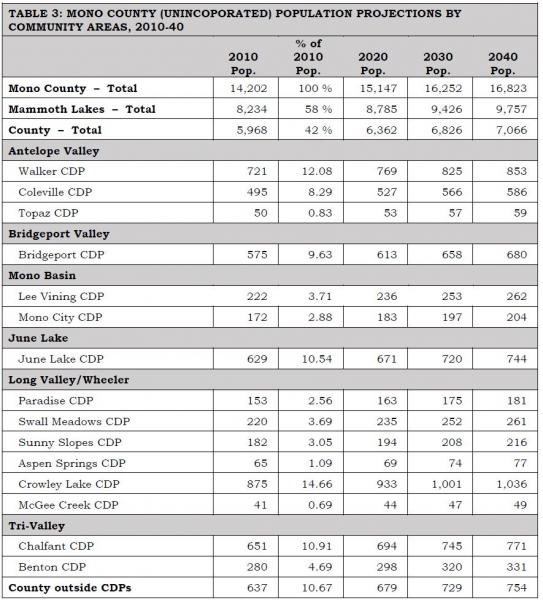
Notes: CDP is a Census designation meaning Census Designated Place. These are populated areas that lack separate municipal government but physically resemble incorporated places. In the 2010 Census, CDP boundaries were mapped based on the geographic area associated with residents’ use of the name.
Percentage of population for Mammoth Lakes and the Unincorporated Area are a percentage of the total county population. Percentagc of population for the county communities is a percentage of the total county population. Percentages for the county communities are from the 2010 U.S. Population Census and are assumed to remain similar in the future. Numbers may not equal 100% due to rounding.
Sources: www.dof.ca.gov . U.S. Census Bureau, 2010 Census, American FactFinder.
Land Use Forecasts
Unincorporated Area Development Trends
Development in Mono County communities is primarily residential with limited small-scale commercial uses serving local and tourist/recreational needs. Limited small-scale light industrial uses, such as heavy equipment storage and road yards, also occur in some county communities. Most communities also have public facilities such as schools, libraries, community centers, parks, ballfields, and government offices. County offices are located primarily in Mammoth Lakes and Bridgeport. This development pattern is not anticipated to change, due to the small scale of communities in Mono County and the lack of employment opportunities in most communities.
The Land Use Element of the county General Plan contains policies that focus future growth in and adjacent to existing communities. Substantial additional development outside existing communities is limited by environmental constraints, protected agricultural lands, a lack of large parcels of privately owned land (and lack of private land in general), and the cost of providing infrastructure and services in isolated areas. Land use policies for community areas in the county (developed by the county Regional Planning Advisory Committees) focus on sustaining the livability and economic vitality of community areas. The General Plan anticipates that growth in the unincorporated area will occur primarily in the Antelope Valley, Bridgeport Valley, June Lake, Wheeler Crest/Paradise, the Tri-Valley, and Long Valley. Traffic impacts will be most noticeable on Highways 395 and 6.
Assumptions:
Development will occur in and adjacent to existing community areas that are served by existing highway systems. Traffic impacts from future development will be most noticeable on Highways 395 and 6.
Town of Mammoth Lakes Development Trends
The town of Mammoth Lakes is the county’s only incorporated community. The town is a four-season resort community with a permanent population of approximately 8,200 residents (over half of the county’s entire resident population). Vacation residences and lodging facilities accommodate a substantially larger population of second homeowners and visitors. The local economy is based primarily on tourism, especially during summer and winter months when visitation rates are highest.
The Town’s General Plan provides for extensive resort and residential development to meet recreational demand. Resort development includes lodging, commercial development, recreational facilities, and public services. The town also includes schools, a community college, a hospital, and government offices. Development in the town has been designed to accommodate peak populations that occur during high-use periods. As noted in the introduction to the Town’s General Plan:
“The ratio of permanent residents to visitors is an important element in understanding demographics in Mammoth Lakes and associated impacts. Overall, the town is prone to large fluctuations in the total non-resident population because of the seasonal nature of its tourism-dependent economy. During the winter tourist season the community and ski area require a large number of seasonal employees (more than can be filled by the full-time resident community) to meet peak service demands. As a result, the resident population increases by approximately 3,000 during the peak tourism season. The town must accommodate a much larger population when tourist populations are present. During peak tourism periods, the total number of people in town at one time exceeds 35,000 people.”
The Town of Mammoth Lakes has a defined area in which growth can occur. The Town’s General Plan provides the following information concerning the Town’s planning area and municipal boundaries:
“The Planning Area for the Town includes areas where existing or proposed facilities have a direct relationship to the current Town boundaries and services. It encompasses land in the unincorporated portions of Mono County in which the Town provides municipal services and extends from the Whitmore Recreation area on the east to the Mammoth Scenic Loop on the north. The Planning Area also includes Inyo National Forest lands located within Madera County that have their sole vehicular access through the Town of Mammoth Lakes and for which the Town provides public safety and building inspection services. The Municipal Boundary [for Mammoth Lakes] is the land contained within the incorporated limits of the Town of Mammoth Lakes. The boundary encompasses a total area of approximately 25 square miles. The Mammoth Lakes Sphere of Influence is coterminous with the municipal boundary, indicating that no additional lands are anticipated to be annexed into the municipal boundary. The Town of Mammoth Lakes adopted an urban limit policy in 1993 in order to maintain a clear delineation between the developed portions of the community and the surrounding National Forest lands. The Urban Growth Boundary policies in this plan limit residential, industrial and commercial development to those areas already designated for such uses. The ultimate size and intensity of the community would be limited to those areas not now designated for open space. The Urban Development Boundary encompasses an area of about four square miles.”
Assumptions:
Development will occur within the Town’s Urban Growth Boundaries as currently designated in the Town’s General Plan. Development will occur to the buildout levels specified in the General Plan. Traffic impacts from future development will be most noticeable on Highways 395 and 203.
Commuters
Information on place of work is not available from the most current U.S. Census. Historically, many county residents have not worked in the community in which they live. Residents in the Antelope Valley have commuted to work in Bridgeport and in Gardnerville, Minden, and Carson City in Nevada; residents of the Tri-Valley area have commuted to work in Bishop and Mammoth Lakes; and residents of Long Valley and June Lake have commuted to work in Mammoth Lakes and Bishop. Development in Mammoth Lakes, and rising housing prices there, have forced many residents of Mammoth to move elsewhere (Crowley Lake, June Lake, Tri-Valley, Bishop) and to commute to jobs in Mammoth Lakes.
The 2009-13 American Community Survey five-year Estimate[1] indicated 99% of workers 16 years and older residing in unincorporated Mono County worked within the state and 91% worked within Mono County. These numbers indicate a significant increase in the jobs/housing balance over 2000, when only 75% worked in the state and county (US Census 2000, Summary File 3, Tables P 31 and P32). The mean travel time to work also decreased from less than 30 minutes in 2000 to just over 16 minutes in the 2009-13 estimate. The primary means of transportation to work was a car, truck or van (67%). Of these, 54% were single-occupancy vehicles and 13% were carpools with two or more persons. Walking accounted for 14% of commuters, followed by public transportation (5%), bicycling (2.5%), and taxicab/motorcycle/other (2%). Workers from home constituted 10%.
Mono County's economy is dominated by services, retail trade, and government. Industry projections from the California Employment Development Department estimate that 85% of the job growth in Mono County between 2010 and 2020 will continue to be in services, retail trade and government (Labor Market Information, Industry Projections 2010-2020, November 2013). Major job centers are located in Mammoth Lakes (services, retail trade, government), June Lake (seasonal services and retail trade), and Bridgeport (government). Despite the availability of Commercial (C) and Mixed Use (MU) designations throughout communities in the unincorporated area, it is unlikely that sufficient jobs will develop to eliminate the need for workers to commute to jobs outside their communities.
Assumptions:
The separation between jobs and housing will continue in the future due to the nature of the county's tourist-based economy. Traffic volumes will increase as this trend continues, particularly on US 395 in the southern portion of the county (June Lake, Mammoth Lakes, Crowley Lake, and Swall Meadows).
Recreational/Tourist Traffic – Seasonal Use Development
Mono County experiences a great deal of recreational travel, both to and through the county. Most of that traffic occurs on US 395, and in the summer months on Highways 120, 108, and 89, which provide access to the area from the west side of the Sierra. Recreational traffic creates specific problems for the interregional and local transportation and circulation system, due both to the volume and type of that traffic. Winter ski weekends, particularly during peak holiday periods, result in a traffic pattern, both in communities and on highways, that simulates recurrent congestion patterns found in more urban areas. Recreational events during the summer may also create congested traffic patterns, particularly in community areas, and safety concerns with slow-moving recreational vehicles, particularly on two-lane sections of roadways. County communities are concerned about maintaining the livability of communities while providing for smoothly flowing traffic and safe traffic speeds through their communities. Recreational and tourist traffic is discussed in greater detail in the Issues and Needs section of this chapter, under the heading "Specialized Needs/Recreational Traffic."
Assumption:
As recreational use continues to expand in the Resort Corridor along US 395, visitation and travel to points of historic, cultural, and scenic beauty in other parts of the county will increase proportionately, creating a need for additional specialized transportation facilities throughout the county, including pedestrian and bicycle facilities, turnouts/vista points, rest areas, information kiosks, and parking for recreational vehicles. Safety issues associated with recreational traffic, both in communities and along highways, will remain a high priority.
Air Quality Attainment Status
Attainment Status
Mono County and the Town of Mammoth Lakes meet all state and national air quality standards except for particulate matter (PM10 ) and ozone. PM10 emissions are measured at Mammoth Gateway and in the Mono Basin; ozone emissions are measured at Mammoth Gateway.
Particulate Matter (PM10)
As of 2012, the county was designated as a non-attainment area for the state particulate matter (PM10) standard. Mono Basin and Mammoth Lakes are also designated as non-attainment areas for the national particulate matter (PM10) standard. Particulate matter (PM10) in the Mono Basin results primarily from dust from the exposed lakebed of Mono Lake; levels are higher on the north shore of Mono Lake than in Lee Vining due to the prevailing wind conditions. PM10 in Mammoth Lakes is a result primarily of wood burning and re-suspended road cinders during the winter.
PM10 concentrations in the Mono Basin have remained relatively stable between 2000 and 2012 with much lower concentrations in Lee Vining and higher concentrations on the north shore (see www.arb.ca.gov , PM10 Trends Summary). PM10 concentrations in Mammoth Lakes have declined significantly since the early- to mid-1990s (see www.arb.ca.gov , PM10 Trends Summary). Based on available data, Mammoth Lakes has not exceeded the national standard for PM10 since 1993, except for two times in 2013-14 due to wildfire, and has sharply reduced the number of days it exceeds the state standard (from 62.4 days in 1993 to 15 days in the 2013-14 winter season to three days in 2014-15 winter season). In 2013-14, 10 of the 15 exceedances were due to wildfire events, and in 2014-15 all were due to wildfire events.[2]
Ozone
In 1991, Mono County was designated as a non-attainment area for the state ozone standard. Ozone data collected by the State Air Resources Board in Mammoth Lakes indicate that ozone concentrations have decreased in Mammoth in recent years; the area has exceeded the one-hour State Standard only a few times during the most-recent period for which data are available, but it has exceeded the eight-hour State and Federal Standard more often [see www.arb.ca.gov , Ozone Data Summary (1988-2004)]. In the past, the State Air Resources Board concluded that ozone exceedance in the Great Basin Air Basin (Alpine, Inyo and Mono counties) was caused by transport from the San Joaquin Valley Air Basin; the Great Basin Unified Air Pollution Control District adopted an Ozone Attainment Plan for Mono County that identified the county as an ozone transport area, and required the adoption of a New Source Review Rule requiring Best Available Control Technology for emissions over 25 tons per year.
Compliance with State Implementation Plan (SIP)
Regional transportation plans must conform to the requirements of the State Implementation Plan (SIP) for air quality control. The requirements for conformity apply "…in all nonattainment and maintenance areas for transportation-related criteria pollutants for which the area is designated nonattainment or has a maintenance plan" [Title 12, Section 1203 (b)(1)]. In Mono County, transportation-related criteria pollutants occur only in Mammoth Lakes (PM10 emissions resulting primarily from re-suspended road cinders and auto emissions). As a result, the Air Quality Management Plan for the Great Basin Unified Air Pollution Control District (GBUAPCD) and the State Implementation Plan (SIP) for Mono County do not include any transportation-related requirements other than for the town of Mammoth Lakes. The following section addresses plans and policies adopted by the Town of Mammoth Lakes to address air quality mitigation. Those plans and policies (including the 1990 Air Quality Management Plan, Air Quality Maintenance Plan and Redesignation Request (2014), and Municipal Code Chapter 8.30 Particulate Emissions Regulations, the Mammoth Lakes Revised Transportation and Circulation Element, and the Mammoth Lakes Transit Plan) are incorporated by reference in this RTP (see Chapter 1, Documents Incorporated by Reference).
Transportation Related Air Quality Mitigation
In compliance with GBUAPCD requirements, and in consultation with the GBUAPCD and other agencies, the Town adopted an Air Quality Management Plan (AQMP) prepared by the GBUAPCD, including Particulate Emissions Regulations (Chapter 8.30 of the Municipal Code) in 1990.
Prior to 1990, the Town recorded 10 violations of the federal 24-hour PM10 standard. Following implementation of the plan in 1990, there was an immediate decline in PM10 emission; since 1994, despite continued growth, no further violations of the national standard have occurred. As a result, in 2014, an Air Quality Maintenance Plan and PM10 Redesignation Request was adopted to update the 1990 Air Quality Management Plan for the Town of Mammoth Lakes. The 2014 Plan reviews the background of the 1990 plan, the measures implemented as a result of that plan and their effectiveness, and changes to clean air regulations since the adoption of the 1990 plan. The 2014 Plan then recommends maintenance measures and requests that the Town of Mammoth Lakes be redesignated as in attainment for the federal PM10 standard.
The 2014 plan updated Section 8.30.100B of the town Municipal Code that sets a peak level of VMTs (vehicle miles traveled) at 179,708 per day within the Town, and directs that the Town review development projects in order to reduce potential VMTs. A second budget of 66,452 VMT was established for a peak winter day in the area outside of the town boundaries (unincorporated county), but inside the boundaries of the Mammoth Lakes PM10 planning area (Mammoth Air Basin). Methods to reduce VMTs include circulation improvements, pedestrian system improvements, and transit improvements. The 2014 Plan also requires the Public Works director to undertake a street-sweeping program to reduce particulate emissions caused by road dust and cinders on Town roadways.
The success of the existing control measures demonstrates that PM10 levels have been reduced and will be reduced to a sufficient degree that contingency measures are not required. Nonetheless, additional measures have been incorporated into the AQMP to assist in further reductions of PM10 levels with the goal of improved compliance with the California Ambient Air Quality Standard for PM10. These measures include amending the Town of Mammoth Lakes Particulate Emissions Regulations to match GBUAPCD Rule 431, requiring all wood-burning fireplaces and stoves, whether certified or not, to comply with no-burn days.
The Town’s Transit Plan and the Draft Mobility Element of the Town’s General Plan contain policies that are intended to increase transit ridership and reduce automobile usage. Recommended service improvements include expansion of winter transit services (peak period) for skiers and commuters, airport shuttle service, increased community transit services, year-round fixed-route services, and Dial-A-Ride services in Mammoth. Policies in the Transit Plan and Draft Mobility Element also emphasize restricting automobile parking spaces in favor of expanding the existing transit system and direct ski lift-access facilities, and incorporating transit and pedestrian facilities into existing and future developments, in order to reduce vehicle trips and improve air quality.
Assumptions:
Increased traffic volumes will result in increases in pollutant emissions, particularly PM10. This will continue to be a problem in Mammoth Lakes, especially during congested periods in the winter when inversion layers trap the pollutants close to the ground. Improved transit and pedestrian services, including the incorporation of transit and pedestrian facilities into existing and future development, will help address air quality issues in Mammoth Lakes. Transportation-related air emissions will not impact other community areas in the county.
Performance Conditions (LOS)
Performance conditions, or Levels of Service (LOS—see Glossary), on state and federal highways are set by Caltrans systems planning. The emphasis in District 9, which includes Inyo and Mono counties and eastern Kern County, is on maintaining and improving the interregional transportation network. Higher priorities are given to major improvements on principal arterial routes than to minor arterials or major collectors. Table 4 shows Caltrans’ planned LOS for state and federal highways in Mono County. Caltrans has been working to improve mobility on US 395, the route on which performance conditions are affected the most by traffic levels.
Performance conditions on local streets are generally not a concern since local streets typically carry only local traffic; state and federal highways serve as the main access to each community in the county and carry the greatest amount of traffic.
Assumptions:
Performance conditions, or LOS, on the County’s highway system will remain as shown in Table 4, but will be re-evaluated following issuance of new guidance regarding performance measures and LOS alternatives under the California Environmental Quality Act.

Capital Operations and Maintenance Costs
Operation and maintenance costs are addressed in Chapter 6: Financial Element.
Cost of Alternatives
The existing transportation system in Mono County includes the highway and roadway system, transit services, aviation facilities, and non-motorized facilities (generally used by locals and visitors to reduce short trips). Alternatives to the existing transportation system in the county are limited by the county’s isolation, topography, extreme weather conditions, small population, large distances between communities, large amounts of publicly owned land, and environmental constraints to developing additional facilities outside existing developed areas. Due to these factors, the existing highway and roadway system will continue to be the major component of the transportation system in the county. Development of alternative routes for highways and roadways during the 20-year time frame of this RTP is unlikely due to lack of demand for additional roads, topography, large amounts of publicly owned land, and environmental constraints to developing additional facilities outside developed areas.
The existing transportation system in the county (highway/roadway system, transit services, aviation facilities, non-motorized facilities) has been designed to accommodate increasing demand for those facilities and services over the 20-year time frame of this RTP. Demand for additional alternative methods of transportation, other than expanding and improving those currently existing in the county, is not anticipated to occur over the 20-year time frame of this RTP, given the constraints noted above.
Assumptions:
It is assumed that alternatives to the existing transportation system in Mono County will not be developed during the 20-year time frame of this RTP. The Cost of Alternatives is not a relevant issue for this RTP.
Time Frames
Assumptions:
The short-term time frame for planning purposes for the Mono County RTP is 10 years. The long-term time frame for the Mono County RTP is 20 years.
Environmental Resources of Concern
Mono County’s economy is dependent on natural resource-based recreation and tourism. Projects that detract from or degrade those natural resources are a concern. Environmental resources of special concern in relation to transportation planning and projects include scenic resources, air quality, noise, and wildlife and wildlife habitat, particularly Bi-State sage-grouse which was proposed for designation as threatened under the Endangered Species Act at one time, with critical habitat potentially covering more than 80% of private property in Mono County.
Assumptions:
Mono County, the Town of Mammoth Lakes, Caltrans, and the USFS are proactive in designing and implementing projects and programs that avoid or minimize impacts to environmental resources in the county. This will continue to be a focus of project development, implementation, and management.
Complete Streets
State Law (AB 1358) requires local governments to include provisions for Complete Streets in their general plans. The Act states: “In order to fulfill the commitment to reduce greenhouse gas emissions, make the most efficient use of urban land and transportation infrastructure, and improve public health by encouraging physical activity, transportation planners must find innovative ways to reduce vehicle miles traveled (VMT) and to shift from short trips in the automobile to biking, walking and use of public transit.”
The Circulation Element must “plan for a balanced, multi-modal transportation network that meets the needs of all users of the streets, roads, and highways for safe and convenient travel in a manner that is suitable to the rural, suburban, or urban context of the general plan.” Caltrans defines complete streets as “a transportation facility that is planned, designed, operated and maintained to provided safe mobility for all users, including bicyclists, pedestrians, transit vehicles, truckers, and motorists, appropriate to the function and context of the facility.”
Assumptions:
Mono County communities and the Local Transportation Commission (LTC) have been proactive in seeking transportation improvements that add to the livability of local communities. Within communities, including the town of Mammoth Lakes, Mono County's tourist-based economy can be enhanced by flexible highway designs, better facilities for pedestrians and cyclists, adequate parking facilities, reduced travel speeds, reduction of vehicle trips, and creating an environment that does not favor the automobile over other transportation modes. This will continue to be a focus of project development, implementation, and management.
Issues and Needs
Operational Issues, Including Emergency Preparedness
Emergency Response
The Mono County Emergency Operations Plan (EOP) and the Town of Mammoth Lakes Emergency Operations Plan (EOP), developed by the county and town Offices of Emergency Services, outline how emergency workers should respond to major emergencies within the county and the town. They are links in the chain connecting the detailed standard operating procedures (SOPs) of local public safety agencies to broader state and federal disaster plans. They address potential transportation-related hazards, including potential hazards from earthquakes, volcanic eruptions, floods, and hazardous materials transport. They also address emergency preparedness and emergency response for the regional transportation system, including the identification of emergency routes. Alternative access routes in Mono County are limited primarily to the existing street and highway system due to the terrain and the large amount of publicly owned land. However, the County has developed alternative access routes for community areas that had limited access (i.e., North Shore Drive in June Lake, the Mammoth Scenic Loop north of Mammoth Lakes). The County also consults with Cal Fire for emergency access requirements for new development in the State Responsibility Areas that cover most of the private property in Mono County. GIS mapping of the county and the town will enhance and support alternative route awareness for emergency responders and incident locations.
Aviation Safety
In past years, a number of airplanes have crashed in the high elevations of the Sierra. As air traffic increases, the likelihood of further aircraft accidents in the more inaccessible areas of the high country also increases. The FAA recently installed an instrumentation system at the Mammoth Yosemite Airport intended to help reduce the numbers of accidents in that area. Planned improvements at all airports in the county (e.g., lighting, fencing, taxiways, runway overruns) will increase safety at all airports.
RoadwaySafety
The California Highway Patrol (CHP) tracks collisions in Mono County (see www.chp.ca.gov , SWITRS). Between 2001 and 2010, Mono County had an average of five fatal collisions per year with an average of five persons killed per year. During the same period, an average of 116 injury collisions per year occurred with an average of 171 persons injured. Most collisions and injuries occur from November through February and June through July, the periods of heaviest tourist visitation.
Wildlife collisions are a concern throughout the county. Figure 1 indicates collision points on US 395 that have been recorded by law enforcement agencies and Caltrans District 9, and Figures 2 and 3 indicate animal mortality by density. There is a perception of high collision rates in North County, and clear evidence of high collision rates in South County between SR 203 and Crowley Lake Drive. There is interest in projects to reduce these collisions and animal mortality rates.
Cell Phone Service
Cell phone service is poor in certain areas of the county. Due to the isolated nature of much of the highway mileage in the county and the extreme weather conditions experienced throughout the year, there is a need to ensure that adequate cell service exists throughout the county. Additional cell towers have been installed over the past several years to improve cell service in areas lacking service or with poor service; additional towers may still be necessary. Specific policies for broadband and related communication infrastructure have been developed in the Mono County General Plan Circulation Element.
FIGURE 1: 2010-13 Animal Mortality Locations on the State Highway system

FIGURE 2: Animal Mortality Density on State Highways – North County
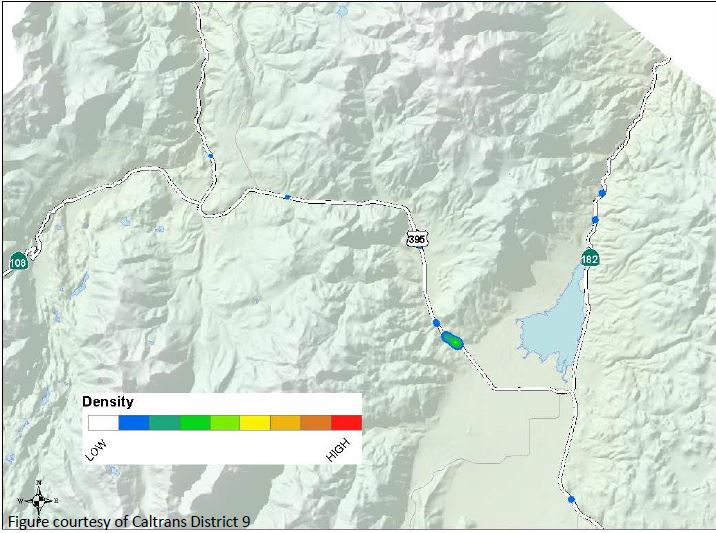
FIGURE 3: Animal Mortality Density on State Highways – South County

Additional Safety Issues
Additional transportation-related safety issues include the following:
- The potential for avalanches is a concern in community areas throughout the county, i.e., Twin Lakes, Virginia Lakes, Lundy Lake, June Lake, and Long Valley, along US 395 in the areas just north of Lee Vining, east of McGee Mountain, and at Wilson Butte between Mammoth Lakes and June Lake, and along SR 158, the June Lake Loop. In June Lake, North Shore Drive provides an alternative route into June Lake that is intended to mitigate the impacts of potential avalanches along SR 158. The LTC has recently authorized an examination of seasonal road closure policies as part of the 2014-15 proposed Overall Work Program. Of particular concern is the potential recreational access that can be provided during low-snow years, together with concerns for ensuring traveler safety.
- Increased levels of truck traffic on state highways are a safety[1] concern. US 395 and 6 are part of the National Truck Network and experience increasing truck traffic; this truck traffic can impact residential communities along these routes. In 2006, medium- and heavy-duty trucks comprised 25% of all traffic within the corridor (this and all further information on truck traffic is from Katz, 2006). Five-axle single- unit trucks made up approximately 80% of all truck traffic. The majority of southbound trucks used US 395 (61%) instead of US 6 (31%). The majority of northbound trucks used US 395 (59%) instead of US 6 (33%). Truck volumes are generally higher in the southbound direction and the average peak period for truck traffic is the midday period between 10 am and 3 pm. Safety concerns focus on the impact of oversized trucks on the safety and capacity of two-lane highway sections and the lack of paved shoulders and adequate sight distances. Narrow shoulders are a concern if vehicles must pull over for emergencies. Narrow shoulders are also less desirable for bicyclists, especially when being passed by large trucks. The recent four-laning of US 395 in various parts of the county has mitigated safety issues in those areas but concerns about truck traffic remain significant in the Tri-Valley on US 6, a two-lane road with no shoulders. The 2006 Katz study is anticipated to be updated in the near future to provide current truck traffic data and projections.[2]
- Recreational vehicle (RV) traffic creates the same safety concerns as trucks. Recreational vehicle traffic decreased from 13.4% of all traffic in the county in 1989, to 3.2% in 2000, to 1.7% in 2011 (Caltrans, US 395 Origination and Destination Report, Year 2011). A contributing factor to reduced RV use may have been the increase in average California gas prices in 2011.
- Hazardous materials spills are a concern throughout the county. The potential for such accidents is highest on Highways 395 and 6, where truck traffic is greatest. Trucks haul a variety of commodities through Mono County, with the greatest number hauling miscellaneous manufacturing products, general freight, food and similar products, farm products, and empty containers (Katz, 2006). Approximately 7% of truck traffic carries petroleum and coal products or chemicals (Katz, 2006). The Mono County Integrated Waste Management Plan contains policies to address hazardous waste spills. The Mono County Emergency Operations Plan (EOP), prepared by the Office of Emergency Services, also addresses emergencies resulting from hazardous materials spills.
- Hospitals in Mono County have limited capacity for multi-casualty incidents, and may require transport of the victims to facilities outside the county. Many accident victims with critical injuries are also transported to facilities outside the county. Access to certain areas of the County may be limited seasonally or due to weather, fire, or other such events.
Existing Regional/Interregional Transportation System
Overview
Mono County is a rural county located on the eastern side of the Sierra Nevada. The county has an area of 3,103 square miles and in 2013 had an estimated total population of 14,625 persons. The county has one incorporated area, the town of Mammoth Lakes, which had an estimated population of 8,410 in 2015. The county's other communities are scattered throughout the area, primarily along Highways 395 and 6.
Approximately 94% of the land in the county is owned by public agencies; approximately 88% is federally owned and is managed by the USFS and the Bureau of Land Management. The limited private land base restricts the growth potential for permanent residents but also provides the foundation for the county's tourist-based economy. The spectacular scenery in the county and the many varied recreational opportunities provide a tremendous recreational draw, especially for people from Southern California.
The transportation system in Mono County is typical of many rural counties. Private automobiles are the primary mode of moving people: trucks are the primary mode of moving goods. Throughout the county, the transportation system is a key support system that sustains the social, economic and recreational activities in the county. The terrain, the weather and the lack of a sufficient population base have limited other modes of regional transportation. These factors continue to limit the development of alternative regional transportation systems in the county.
Highway System
The state and federal highway system provides major access to and through Mono County, connecting communities in the county and providing access to and from the county.
US 395 is the major transportation route in the county. It connects the Eastern Sierra with Southern California and with the Reno/Tahoe region in northern Nevada. US 395 is also Main Street in Lee Vining, Bridgeport, Walker, Coleville, and Topaz, and provides access to the immediately adjacent communities of June Lake, Crowley Lake, McGee Creek, Long Valley, Sunny Slopes and Tom’s Place.
US 6, from the Inyo County line north of Bishop to the Nevada state line, connects the Tri-Valley communities of Benton, Hammil, and Chalfant to Bishop and Inyo County. US 6 is also Main Street in the Tri-Valley communities.
SR 89 provides access from US 395 to Monitor Pass and is closed in the winter.
SR 108 provides access from US 395 west to Sonora Pass and is closed in the winter.
SR 120 provides access from US 395 west to Tioga Pass at Yosemite National Park and east to Benton. The western segment is closed in the winter and the eastern segment may also be closed briefly. Within Yosemite, the road is under the jurisdiction of the National Park Service and is labeled Highway 120 (rather than State Route 120).
SR 158, the June Lake Loop, provides access from US 395 to the community of June Lake and is Main Street throughout the June Lake Loop. A segment of the loop is closed in the winter.
SR 167 provides access from US 395 to the Nevada State Line, north of Mono Lake, and to Mono City.
SR 168 provides access from US 395 at Big Pine in Inyo County north via Westgard Pass to Oasis in the southeast corner of Mono County.
SR 182 provides access from its junction with US 395 in Bridgeport northeast to the Nevada state line and provides the Main Street access to a portion of the community of Bridgeport.
SR 203 provides access west from US 395 to Mammoth Lakes to Mammoth Mountain Ski Area, serving a portion of the town as Main Street and ending near Minaret Vista Point at the Madera County line.
SR 266 provides access through Oasis in the southeast corner of the county.
SR 270 provides access east from US 395 to near Bodie State Historic Park and is closed in the winter.
US 395 is the principal route to and through Mono County. It is the only direct route to and through the county for the shipment of goods and materials. It is also the only route suitable for emergency purposes and the principal route to the county's many recreational and tourist attractions.
US 395 extends approximately 120 miles from northwest to southeast Mono County. It provides regional transportation connections to Reno and Lake Tahoe to the north, the Bay Area and the Central Valley to the west, and the greater Los Angeles area to the south. In 2014, US 395 carried annual average daily traffic (ADT) volumes of ranging from 3,550 vehicles at the Nevada state line at Topaz to 8,300 vehicles traveling southbound at the junction with SR 203. Peak month ADT volumes varied from 11,500 at the northbound junction with SR 203 to 4,600 at Sonora Junction (SR 108).
US 395 in Mono County is identified as a regionally significant part of the Interregional Road System (IRRS), as a lifeline route and as part of the National Truck Network on the National Highway System (NHS), which authorizes use by larger trucks and provides access to facilities off the route. The majority of US 395 in Mono County is also identified as a freeway/expressway.
US 6 also provides regional transportation connections in Mono County. It extends over 30 miles in Mono County – toward Bishop in the south and Nevada to the north and east. In 2014, annual ADT volumes on US 6 varied from3,500 vehicles at the junction with US 395 in Bishop to 890 vehicles at the northbound junction with SR 120 in Benton.
US 6 is a popular alternate route north when poor weather affects conditions on US 395. US 6 is identified as part of the National Truck Network on the National Highway System (NHS) and is on the eligible Interregional Road System (IRRS).
SR 120 extends approximately 75 miles through Mono County, from Tioga Pass in Yosemite National Park east to Benton. Other routes that connect to US 395 include: SR 89 (Monitor Pass), SR 108 (Sonora Pass), SR 167 (to Hawthorne, Nevada), SR 158 (the June Lake Loop), SR 270 (to Bodie), SR 182 (from Bridgeport to Yerington, Nevada), and SR 203 (to Mammoth). SR 168 and SR 266, connecting Big Pine in Inyo County and Nevada, cross the extreme southeast corner of the county.
Tioga Pass (SR 120), Sonora Pass (SR 108), Monitor Pass (SR 89) and SR 270 to Bodie are all closed during winter, as is the northern portion of SR 158, SR 203 from four miles east of the Mono County boundary with Madera County, and the portion of SR 120 between US 395 and Benton. During periods of heavy snowfall, SR 167 and the southern portion of SR 158 may also be closed. The LTC is examining seasonal road closure policies, and will seek local input on policy development. Of particular concern is the potential recreational access that can be provided during low-snow years, together with concerns for ensuring traveler safety. Figure 4 shows the existing highway system in the county.
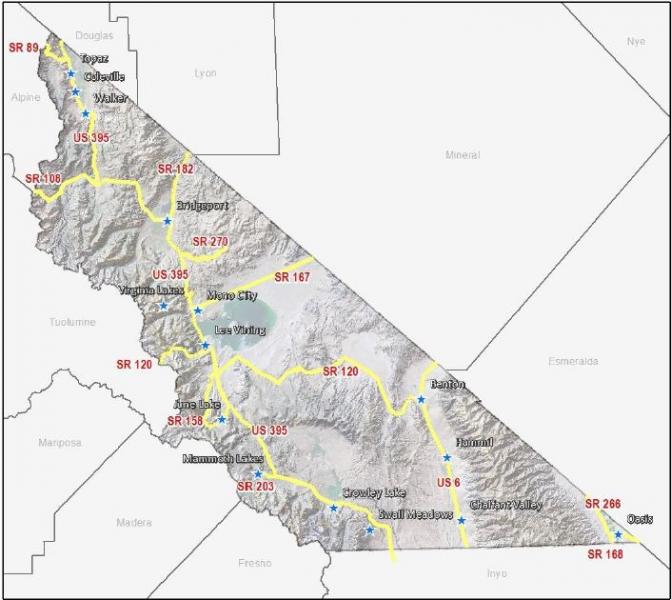
Interregional Travel Demand and Corridor Needs
US 395
US 395 is, and will remain in the long-term, the major access to and through Mono County and the major transportation route in the area. It connects the Eastern Sierra with Southern California and with the Reno/Tahoe region in Northern Nevada. The primary needs for US 395 throughout Mono County are maintaining four lanes from the Inyo/Mono county line to Lee Vining; allowing for passing lane improvements to the conventional two-lane highway north of Lee Vining; safe winter access countywide; adding adequate shoulders as a priority to enable safe pedestrian and bike use, as well as increased motorist safety including potential separated-grade wildlife crossings; improved system safety and maintenance; and the development of sufficient revenue sources to meet these needs.
US 6
US 6, from the Inyo County line north of Bishop to the Nevada state line, provides regional/interregional transportation connections and is a trucking route between Southern California, Reno, and the western mountain states (Washington, Idaho, Montana). Caltrans has identified the primary purpose of the route as interregional traffic (largely trucks). The route is currently a maintenance-only route with some improvements planned for the future as traffic volumes increase and for multi-modal safety, including on-going shoulder-widening projects. The major local concerns about US 6 are safety during the periodic dust storms that occur in the area and speeds through community areas. Dust from plowed fields and from the deposits from flash floods blows across the highway, decreasing visibility. Some local landowners are working with the Great Basin Unified Air Pollution Control District to develop plans to mitigate dust problems from agricultural fields. Since the area is subject to flash floods, little can be done about dust resulting from flood deposits. An ITS dust sensor warning system to alert drivers in advance of arriving at dust storm locations might also be considered. Vehicles traveling at high speed through community areas are also a concern, both for local traffic trying to access the highway and for pedestrian safety. Vehicle speed-feedback signs have recently been installed, and there is currently interest in pursuing a Safe Route to School access across US 6 in Benton.
State Routes 120, 167, 182, 108, and 89
The remaining state highways in the county provide interregional access east and west from US 395 to Nevada and to the western side of the Sierra. State Routes 120, 108, and 89, which cross the Sierra in high mountain passes, are closed in winter. The main concern on these routes is continued adequate maintenance, including timely road openings following winter closures and intermittent access during low-snow years.
Mountain Passes
There is some interest in attempting to keep the mountain passes (Tioga, Sonora, and Monitor) open as long as possible, including opening the passes as soon as practical, in order to increase access from the west and provide an economic boost to local communities. The County coordinates with Caltrans and Yosemite National Park to keep Tioga Pass open as long as possible. Residents in communities near Sonora and Monitor passes are also interested in keeping those passes open as long as possible.
Average Daily Traffic Volumes
Table 5 shows Average Daily Traffic (ADT) volumes on Mono County Highways in 2009 and 2014. Between 2009 and 2014, traffic volumes increased on many of the County’s highways, particularly on the county’s most heavily traveled routes (i.e., US 395, US 6, and SR 203).
[1] According to comments by Caltrans District 9 in Dec. 2015, truck traffic safety issues have not been identified based on system data.
[2] Note: The Mono County Board of Supervisors adopted slightly different language in the Mono County General Plan Circulation Element for this bullet point. See the “2015 Circulation Element Errata Sheet.”

Table 5 Notes:
- These are estimated figures.
- The peak month ADT is the average daily traffic for the month of heaviest traffic flow.
- Annual average daily traffic is the total traffic volume for the year divided by 365 days. Some routes are regularly closed for one month or more during winter; ADT figures for those routes reflect travel when the route is open. Routes regularly closed during the winter include the following:
SR 89 – Monitor Pass, Jct. US 395 to Jct. SR 4, 17.5 miles.
SR 108 – Sonora Pass, six miles east of Strawberry to seven miles west of Jct. US 395, 35 miles.
SR/Highway 120 – Tioga Pass, Crane Flat to five miles west of Jct. US 395, 55 miles.
SR 120 – Mono Mills Road, two miles east of Jct. US 395 to six miles west of Jct. US 6, 37.6 miles.
SR 158 – June Lake Loop, Powerhouse to north Jct. US 395, 8.6 miles.
SR 203 – Mammoth Lakes Road, Mono/Madera county line to one mile east.
SR 270 – Bodie Road, Jct. US 395 to Bodie, 9.8 miles.
- Reflects traffic turning into Mammoth. Counts on 395 going north from 203 are lower.
- Reflects traffic turning into June Lake. Counts on 395 going north from 158 are lower.
- Reflects traffic from SR 120 north on 395 toward Lee Vining.
- Reflects traffic going north out of Bridgeport.
- Reflects traffic going north from the Sonora Junction
SOURCE: Caltrans 2009 and 2014 Traffic Volumes on California State Highways.
Specialized Needs
Recreational Travel
Mono County experiences a great deal of recreational travel, both to and through the county. Most of that traffic occurs on US 395. In the summer, additional traffic occurs on State Routes 120, 108, and 89, which provide access to the area from the west side of the Sierra. Recreational traffic creates specific problems for the local transportation and circulation system, due both to the amount and type of that traffic. Winter ski weekends, particularly during peak holiday periods, result in a congested traffic pattern, both in communities and on the highway, which simulates rush-hour traffic patterns found in more urban areas. Recreational events during the summer may also create congested traffic patterns, particularly in community areas.
Recreational travelers have special needs, such as turnouts/vista points, rest areas, and information about local recreational areas, interpretive information, lodging, and travel routes. Recreational travelers also create safety concerns on local and state highways and roads; sightseers often travel slowly, disrupting the traffic flow, and may stop along the road to enjoy the view or take photos, creating a hazardous situation. Recreational vehicles (RVs) travel slowly on the many steep routes in the area, disrupting traffic flow, particularly in areas where the road is only two lanes. In community areas, RVs often have difficulty parking or use more than their share of limited parking spaces. RVs account for 1.7% of the traffic in Mono County on US 395, a decline from a high of 13.4% in 1989 and 3.2% in 2000 (Caltrans, US 395 Origination and Destination Report, Year 2011).
Results from the 2011 US 395 Origination and Destination Report showed some changes since the prior two reports, i.e.:


Many of the needs of recreational travelers have been addressed by recently completed or ongoing projects. The four-laning of US 395 to Lee Vining has eliminated many of the problems resulting from slow-moving vehicles. Transportation enhancement projects related to the Eastern Sierra Scenic Byway have provided turnouts and information for travelers. The June Lake, Mono Basin, and Bodie Hills Transportation Plans address parking in community areas and transportation linkages between communities and recreational areas.
Disabled Persons
The Americans with Disabilities Act (ADA) requires public and private transportation projects to comply with the ADA. This requires that transportation facilities are accessible to disabled persons; e.g., pedestrian facilities, parking areas, turnouts, kiosks, etc. must be wheelchair- accessible. All transit services must also comply with the requirements of the ADA. The ADA requires the availability of wheelchair lift-equipped fixed-route buses and door-to-door service for disabled persons who cannot use the fixed-route service. ESTA buses are equipped with wheelchair lifts and also provide door-to-door demand-responsive service.
Goods Movement
Goods movement to and through Mono County occurs on the interregional highway system; i.e., US 395 and US 6. There are no railroads in the county and no air freight services. As noted previously, US 395 in Mono County is identified as part of the National Truck Network on the National Highway System (NHS), which authorizes use by larger trucks and gives them access to facilities off the route. US 395 provides regional transportation connections and truck access between Southern California and Reno, Nevada.
US 6, from the Inyo County line north of Bishop to the Nevada state line, provides interregional transportation connections and is a trucking route between Southern California and the western mountain states (Washington, Idaho, Montana). It is also identified as a part of the National Truck Network, and Caltrans has identified the primary purpose of the route as interregional traffic (largely trucks).
In 2006, medium- and heavy-duty trucks comprised 25% of all traffic within the corridor (this and all further information on truck traffic is from Katz, 2006). Five-axle single-unit trucks made up approximately 80% of all truck traffic. The majority of southbound trucks used US 395 (61%) instead of US 6 (31%). The majority of northbound trucks used US 395 (59%) instead of US 6 (33%). Truck volumes are generally higher in the southbound direction and the average peak period for truck traffic is the midday period between 10 am and 3 pm. The 2011 Origination and Destination Report conducted by Caltrans found that tractor trailers totaled 9.1% of total vehicles, a decrease from 11.5% in 2000.
Local Corridor Needs
Overview
Local corridor needs include state highways that serve primarily local traffic (i.e., they do not provide interregional connections), County roads, city streets, and public roads operated by various other local, state, and federal agencies. Table 6 shows the mileage of maintained public roads in Mono County. Local corridor needs in the town of Mammoth Lakes are discussed later in this chapter under the heading Town of Mammoth Lakes.

State Route 203
SR 203 provides access from US 395 to Mammoth Lakes, to Mammoth Mountain Ski Area, and continues as a road owned and operated by the USFS to Reds Meadow and Devils Postpile in the summer months. Congestion on 203 in Mammoth Lakes and between town and the ski area continues to be a problem in winter, resulting in adverse air-quality impacts, primarily from resuspension of road dust and cinders and auto emissions. Traffic is also heavy during certain periods in the summer. Congestion, and the resulting air-quality impacts, is the major concern on SR 203.
State Route 158
SR 158, the "June Lake Loop,” provides access from US 395 to the community of June Lake. There are operational and safety concerns on this route, particularly in the Village and Down Canyon areas of June Lake. These concerns focus on easing congestion in the Village by providing alternate routes; providing for alternatives to the automobile; and providing safer routes for non-motorized forms of transportation.
County Roads
The county currently has 684.42 miles of County-maintained roads (County Road System Maps are included in Appendix E). Of that maintained mileage, 179.07 miles are paved, 168.47 miles are plowed in the winter, and 197.87 miles traverse National Forest lands. Although most of the County roadway system is already established, there remains a need for new facilities. These needs are generally addressed in the community policy section (e.g., June Lake) in order to complete the circulation system, provide for emergency access, avoid congestion and provide for continued growth. The main access to all communities in the county is state highways, i.e., US 395, SR 158, and US 6.
In addition to the County roads, there is an extensive network of private and federally controlled roads in the county, many of them unimproved. The federal roads, on lands managed by the USFS and BLM, are mostly unmaintained dirt roads that receive limited use from logging trucks and off-highway vehicles (OHVs). The USFS and the BLM have developed management plans for OHV use. The private roads in the county are mostly in community areas; many of them are substandard roads that do not meet the county Roadway Standards and as a result have not been accepted into the county Roadway System.
Substandard roads are a particular problem in June Lake. In 1981, the Mono County Public Works Department recognized the Loop's existing constraints to roadway construction and developed a special set of arterial/commercial and collector/residential road standards tailored to meet those constraints. These standards permit lower design speeds and narrower roads than in other areas of the county.
Major development projects have been able to comply with these standards, however the costs of upgrading older roads will continue to preclude their improvement and ultimate acceptance into the County maintenance program. This is true throughout the county. Property owners on private roads will continue to bear all maintenance costs, as private roads do not qualify for state and federal maintenance funding.
On County roads, the primary needs for local streets and roads are snow removal, regular pavement maintenance and major rehabilitation. Heavy snowstorms, rapid freeze-thaw deterioration and heavy visitor traffic create an unusually high demand for snow removal and regular annual maintenance. The Public Works Department maintains and updates annually a snow-removal priority list for County roads. The Mono County Road Department currently provides road surface and shoulder repair, signing, striping and snow removal, as well as minor and major improvements such as road surfacing and alignment improvements. Operating revenues that support these services are provided through various state and federal revenue- generating programs, including state gas taxes, vehicle code fines, timber receipts, federal and secondary funds, transportation allocations, and motor vehicle license fee taxes. Due to dwindling revenues for road maintenance, Mono County is implementing a regional asset management strategy to ensure efficient expenditure of limited resources in maintaining the local road system.
The potential impacts of large-scale future development on the County road system continue to be a major concern. Traffic volumes of future development may impact portions of the existing road system. There is a need for mitigation of future impacts to the transportation system and for a standardized means of assessing potential impacts from future projects.
Roads on Native American Lands
The transportation systems serving the Bridgeport Indian Colony and the Benton Paiute Reservation include the State Highway System, County roads, tribal roads, and roads managed by the Bureau of Indian Affairs. Transportation needs for each location include road upgrades, ongoing road maintenance, and new road construction to serve existing and proposed development (see Nelson\Nygaard, Tribal Transportation Needs Assessments).
Maintenance of the Existing Regional/Interregional Transportation System
Maintenance of the existing regional and interregional transportation system is discussed in the Action Element.
Traffic Demand, Mono County
Traffic demand projections for the unincorporated areas of Mono County are based on potential trip generation rates of projected residential land uses. The methodology used to compute those projections is explained in detail in Appendix A – Traffic Demand Projections, Unincorporated Areas. Table 7 summarizes the data presented in Appendix A.

The analysis in Appendix A notes that the estimated increases over current Average Daily Traffic (ADT) figures are not significant increases. North Shore Drive into June Lake is expected to help mitigate the larger expected traffic increase in June Lake.
Demand Management Strategies
Transportation Demand Management (TDM) refers to measures designed to reduce vehicle trips, trip lengths, and congestion. TDM encourages wider use of transit, vanpools, carpools, and other alternatives to the single-occupant automobile. TDM measures provide alternatives to large investments in new highway and transit systems, which are limited by lack of money, adverse community reactions, and other factors. TDM measures are designed to modify travel demand patterns, resulting in lower capital outlays. They may be implemented within a short time frame and evaluated quickly. Several policy issues arise in determining the extent to which TDM may be used to reduce congestion, including the effectiveness of voluntary vs. mandatory measures, and the need to apply them only to new development or to all employers of a specific size.
The transportation system in Mono County does not experience severe congestion except in limited areas, and at limited times. Due to a number of factors, some TDM measures are not particularly viable options in the unincorporated areas of Mono County at this time. Bicycling is generally not a year-round option for commuters in many areas of the county due to the long distances traveled and severe winter weather conditions. There is some potential in county communities to increase pedestrian facilities; the County is pursuing funding to convert county communities (i.e., Crowley Lake, Lee Vining, June Lake, Bridgeport, and Walker/Coleville) to more livable/walkable communities.
Mammoth Lakes is committed to becoming a multi-modal community where automobile usage is minimized due to efficient pedestrian and transit systems. The Town has downsized roads to make room for sidewalks and bike lanes, increased transit facilities, and developed park-and- ride facilities. In addition, the Town has greatly expanded its trail system for pedestrians, bicyclists, and Nordic skiers.
Due to the high number of people who work outside the community in which they live, opportunities exist for ridesharing in the county and the town. Currently, Mammoth Mountain Ski Area provides vanpooling and shuttle services for its employees, ESTA offers vanpool opportunities, County employees voluntarily carpool to Bridgeport and Mammoth, and informal park-and-ride areas are in use throughout the county (e.g., at the junction of SR 203 and US 395 and at June Lake Junction). Mammoth has a designated park-and-ride facility in the town.
The use of transit for commuter and everyday transportation demand management purposes in Mono County is somewhat limited due to the long distances traveled and the relatively small population base. Outside Mammoth Lakes, transit use within community areas is generally not a viable option. Transit service to recreational destinations, however, is a viable TDM measure in Mono County. Shuttle service to Devils Postpile National Monument and trolley service to the Lakes Basin has been in place for many years in order to reduce traffic impacts. The Yosemite Area Regional Transportation System (YARTS) provides shuttle service from Mammoth Lakes, June Lake, and Lee Vining (and other counties surrounding Yosemite National Park) to Yosemite Valley and now specifically to Tuolumne Meadows.
Recent technological advances, such as Digital 395, may also contribute to transportation demand management. As more people are able to conduct their business electronically via the Digital 395 broadband middle-mile telecommunications networks, commuter travel demand should decrease.
Parking Management
Mono County's Land Development Regulations in the General Plan generally require on-site parking in the unincorporated area, developed in compliance with standards in the Regulations. Single-family residences must provide two parking spaces and other uses must provide a specific number of parking spaces based on the intensity of the use. Most parking provided in commercial areas is uncovered, either on-street parking or parking lots. As a part of its General Plan update, the County has revised its parking standards to allow for greater flexibility in meeting parking requirements in established central business districts.
Parking standards in Mammoth Lakes are listed in Title 17 (Zoning) of the town Municipal Code. A minimum of three off-street spaces (at least 50% enclosed and at least one unenclosed space) is required for single-family residences. The parking requirements for multi-family are based on the number of bedrooms and require that 50% of the required parking is enclosed. Non-residential parking requirements are dependent on which parking zone the project is located in and the proposed land use, and has a minimum and maximum number of spaces allowed. Non-residential parking is encouraged to be located underground, behind a building, or on the interior side or rear of the site to improve the aesthetics of projects and to encourage pedestrian facility use. The Town completed a parking analysis (2014) as part of the Zoning Code update, which focused on developing parking standards that meet the needs of the community by focusing on actual observed parking demand rates while preventing the over-supply of parking. The results of the analysis were incorporated into the Zoning Code and included such items as shared parking, allowing parking requirements to be met off site, allowing parking reductions for mixed-use development, and enacting design standards that can minimize the impact that parking has on the physical environment.
Parking issues and needs include the following:
- Review of proposals for commercial business expansions has shown an inability to meet the parking regulations of commercial build-out in established central business districts in communities such as Bridgeport, Lee Vining, and June Lake. Parking regulations were recently revised to promote alternative means to meet the trip generation impacts of patrons of new or expanded commercial developments. Revised regulations allow for consideration of pedestrian, transit and bike accommodations in lieu of providing some parking spaces. Parking for buses and large trucks will continue to be a problem in some areas. Future development, particularly of recreational areas and associated commercial uses, will likely increase the demand for parking facilities.
- On-street parking is also a problem in some areas and creates safety concerns. In the winter, on-street parking may hinder snow-removal operations. In some communities, on-street parking of large trucks creates a nuisance. The Bridgeport Main Street planning project addressed these issues via an innovative reconfiguration/reduction of travel lanes and parking spaces that encourages slower traffic speeds and converted former travel lanes into a combination of parallel and back-in angle parking. Parking restrictions continue to apply in the winter during specific hours to allow for snow removal.
- Some communities would like to see the creation of community parking areas instead of requiring all businesses to develop small individual parking areas. At one time, there was also interest in Lee Vining to consider developing or designating a site for large truck parking.
- Mammoth Lakes has inadequate parking to meet current and projected future demand. The 2005 Parking Study Draft recommends encouraging shared parking, developing two smaller parking facilities for the Village, developing a public parking facility for the southern portion of the town that could also serve as a park-and-ride lot, developing a public parking lot/park-and-ride location on the north side of Main Street, developing a small parking lot on the south side of Main Street between Manzanita Road and Joaquin Road, developing a roundabout or a traffic signal on Main Street to aid pedestrians crossing to park-and-ride lots, and considering the provision of one or two small park-and-ride lots in the Mammoth Camp/Snowcreek/Starwood areas.
Environmental and Energy Impacts
Impacts Resulting from Transportation System Improvements
Environmental impacts resulting from improvements to the transportation system will be limited in Mono County since much of the system is already in place. Road development occurs primarily in developed community areas or adjacent to existing highways. Mono County RTP and General Plan policies focus development in community areas and encourage the use and improvement of existing facilities, rather than construction of new facilities. RTP policies take into account sensitive habitats that have been mapped as part of the companion EIR. General Plan policies require future development with the potential to significantly impact the environment to assess the potential impact(s) prior to project approval and to recommend mitigation measures to avoid, and to mitigate the identified impacts, both on-site and off-site. The previous requirement also applies to potential impacts to the transportation system. In addition, RTP and General Plan policies promote preservation of air quality and scenic resources.
Environmental Mitigation Measures and Enhancement Projects
Caltrans, the U.S. Forest Service (USFS), the Bureau of Land Management (BLM), the California Department of Fish and Wildlife (CDFW), the Local Transportation Commission (LTC), the County, the Town of Mammoth Lakes, and other interested agencies and organizations have been working together to incorporate environmental mitigation measures and enhancement projects into the planning process for road improvements to both state and local circulation systems. Environmental enhancement grants have been received for several projects, including the Eastern Sierra Scenic Byway and the Mammoth Lakes Trail System.
RTP policies encourage appropriate agencies such as Caltrans, the USFS, the BLM, the CDFW, the LTC, the County, and the Town of Mammoth Lakes to work together to define environmental objectives, to design transportation projects in a manner that improves both the transportation system and the surrounding community and/or natural environment, and to incorporate environmental mitigation measures and enhancement projects into the planning process for transportation improvements to both state and local circulation systems. Community areas have been assessed for habitat values and mitigation measures incorporated into policies and directives to allow for streamlined environmental processing via tiering from the RTP EIR.
Impacts to Local Wildlife from Increased Use of System
Increased use of the transportation system may result in impacts to local wildlife. Limited visibility, road speeds, migration paths and driver error result in road kills of deer, rodents, mammals and birds. Caltrans has long endeavored to solve this dilemma by designing roadways and highways in a manner that increases visibility and by limiting the amount and type of vegetation along the shoulders. They have been diligent in providing ample signing opportunities to warn the unaware driver of the deer migration paths and nearby habitats. Caltrans is continuing to assess the potential benefits of additional signing and other measures. Deer crossings under highways have proved effective in some areas, but they are costly and several miles of tall fencing are needed on each side of the crossing to be effective. They have been considered in the area north of the Sonora Junction on US 395 and are currently under consideration along US 395 south of Mammoth Lakes.
Climate Change
Potential impacts from climate change in the Eastern Sierra include flooding, a substantially reduced snowpack, related economic impacts due to declines in tourism, and impacts to ecosystems and biodiversity.[1] There is a need to assess potential related effects on the transportation system, to determine whether there are critical assets that should be protected, and then to develop and implement adaptation strategies to address those potential impacts.
Resource-Efficient Transportation System/Greenhouse Gas Reduction
Mono County had developed a Resource Efficiency Plan (REP) in order to identify the most effective and appropriate greenhouse gas (GHG) emissions reduction strategies. The plan includes: 1) a baseline GHG emissions inventory; 2) a GHG emissions forecast and reduction target; 3) policies and programs to achieve the adopted target; and 4) a monitoring program. The REP is incorporated by reference in this RTP; policies and objectives included in the Plan have been included in the policy section of this RTP. Policies addressing issues related to climate adaptation including flooding, reduced snowpack (and water availability), economic issues, and ecosystems and biodiversity, are contained in the Mono County General Plan Land Use Element and Conservation/Open Space Element.
Community Needs and Issues
This section outlines transportation concerns that have been identified by communities and Regional Planning Advisory Committees as being important issues in their communities.
Antelope Valley (Topaz, Coleville, Walker)
- The priority concern in the area is safety improvements on US 395 and Eastside Lane. Residents would like to see turn lanes at heavily used areas on US 395, such as the high school in Coleville, and possibly at the intersections with Larson Lane, Cunningham, and Topaz Lane. On Eastside Lane, the safety concern is the first turn on Eastside north of its intersection with US 395.
- Residents of the Antelope Valley consider their existing community road system, much of which is unimproved private roads, to be adequate. However, existing private roads that are functioning as public roads should be brought up to standard.
- Residents question the need for four-laning US 395 in the Antelope Valley, especially since Nevada presently has no plans for four lanes. Residents would prefer that the route remain two lanes with operational improvements such as shoulder widening, fences and underpasses for deer, and potentially some landscaping. Residents are also interested in retaining the scenic qualities of US 395 between communities.
- There is a great deal of interest in a loop bike route throughout the Valley for use by touring bicyclists. There is some interest in providing facilities for pedestrians and equestrians along a similar loop route. There is some interest in providing mountain biking opportunities along the West Walker River, for example, from the Sonora Bridge to Walker, along the river and/or parallel to Burcham Flat Road.
- Residents of the area would like greater enforcement of vehicles passing in unsafe areas throughout the Valley.
- There is a need to consider the installation of call boxes where cell service is lacking or where it is unlikely cell service would ever be successful due to topography.
Swauger Creek/Devil's Gate
- Restricting fence design to facilitate the migration and movement of wildlife, with particular attention given to deer migration routes, Bi-State sage-grouse impacts, and protection from highway traffic.
- Establishing a speed limit of 25 mph on all secondary roads.
- Limiting development of new secondary roads to those necessary for access to private residences; minimizing the visual impact of roads, using construction practices (drainage, culverts, road bases and finishes) that minimize dust and erosion problems; and prohibiting construction on designated wet meadow areas.
Bridgeport Valley
- Residents of Bridgeport, working with consultants and Mono County, recently completed a Main Street Revitalization Plan for US 395 through Bridgeport. That plan addresses many of the concerns outlined below.
- Residents of Bridgeport are concerned about pedestrian and bicyclist safety along Highways 395 and 182 from the Evans Tract to the dam at Bridgeport Reservoir and State line. The residents recommend as priority items a bike lane on SR 182, and widening the shoulder along Highway 395 from the Evans Tract to SR 182.
- Other safety concerns include enforcement of the speed limit through the town and the design of several intersections, including the SR 182/395 junction, the Emigrant Street junction with US 395, and the Twin Lakes Road junction with US 395 south. The number of deer kills on Twin Lakes Road from the start of the Hunewill Hills to Twin Lakes is also a concern.
- Parking is a problem on Main Street and around the County buildings, especially during the months with the most visitors and when court is in session. There is some interest in providing additional off-street parking for county employees, people attending court, and visitors to the area, possibly next to the Probation Department or on empty lots on Emigrant Street.
- There is interest in developing a bike lane connecting Bridgeport and Twin Lakes, either by widening the shoulder or by creating a separate bike path that parallels the existing roadway.
- There is interest in eventually developing local bike trails and/or loops, and hiking/pedestrian trails, in Bridgeport and the surrounding recreational areas.
- There is a need to consider the installation of call boxes where cell service is lacking or where it is unlikely cell service would ever be successful due to topography.
Bodie Hills[2]
- Issues in the Bodie Hills include improving transportation facilities and upgrading parking facilities, particularly for buses, at Bodie State Park. The Bodie Planning and Advisory Committee (which is no longer active) has recommended the use of unique and historically compatible modes of travel to Bodie, such as reactivating the old railroad grade from Mono Mills to Bodie, providing for equestrians and horse-drawn wagons and carriages in the state park, and establishing a trail system in the Bodie Hills that provides for equestrian, cycling and pedestrian use.
- Transportation improvements into the park and in the area surrounding the park are also needed. Recommendations include paving the Bodie Road up to the cattle guard, having it accepted into the State Highway system at the edge of the Bodie Bowl and designating SR 270 as a scenic highway with turnouts and interpretive displays. Paving Cottonwood Canyon Road to Bodie is recommended to reduce dust. If visitation continues expanding beyond the carrying capacity of Bodie State Park and to accommodate wintertime visitors, an interagency visitor center and office complex in the Bridgeport town site is recommended. There is some interest in a satellite parking facility and shuttle service outside the Bodie Bowl.
Mono Basin[3]
- Maintain the small-town quality of life for residents.
- Increase tourism opportunities – develop Lee Vining as a destination rather than a quick-stop highway town.
- Improve visitor services.
- Maintain and increase the attractiveness of the community.
- There is an opportunity to enhance the visual appearance of Lee Vining along US 395. Enhancements may include: landscaping, raised pedestrian crossings with variations in pavement texture/appearance, street furniture, revised parking configurations, and provisions for the convenient loading and unloading of tour buses.
- The Caltrans and Mono County road maintenance facilities detract from the appearance of the Lee Vining commercial district. There is an opportunity, if these facilities are relocated, to redevelop those properties in a manner that contributes to an attractive Main Street appearance. There is also opportunity to coordinate road maintenance facility needs of other entities, such as Mono County and the USFS, with the relocation of the Caltrans shop. If these facilities are not relocated, which Caltrans indicates is infeasible in its comments on the Draft EIR, there is a need to continue enhancing their appearance through landscaping, solid fencing, painting, etc. and provide connectivity to public facilities to the north and east.
- There is an opportunity to balance competing needs through reengineering the five-lane section of US 395 through Lee Vining. Competing needs include: convenient parking for business patrons; slower traffic, bike lanes and pedestrian facilities for residents; traffic flow in front of businesses; and convenient interregional travel for motorists traveling through Mono County.
- The community is interested in developing visual interest and gateway-design elements at the north and south entrances to Lee Vining.
- The community is concerned about balancing community goals, such as pedestrian safety and comfort, roadway aesthetics, and community economics with the need to move traffic safely and efficiently along US 395.
- There is a desire for pedestrian improvements throughout Lee Vining and adjacent areas. These improvements may include:
- Safe pedestrian crossings across US 395 in Lee Vining. Improvements to slow traffic may include: variations in pavement surface, raised intersections, reconfigured traffic lanes, flashing caution lights, and crosswalk landmarks.
- In accordance with state laws and procedures, post and enforce slow speed limits along US 395 within Lee Vining to minimize conflicts with pedestrians crossing the highway. Speeds in Mono City should also be lowered to minimize conflicts within the residential neighborhood.
- Additional pedestrian trails to and from local activity nodes, such as the Mono Basin Visitor Center and Mono Lake.
- There is need for bikeway improvements throughout the Mono Basin. There are opportunities to include wider shoulders adequate for bike use as part of scheduled road projects and to provide other improvements for cyclists.
- Lee Vining lacks adequate parking facilities for visitors and buses in the summer months. Much of the existing commercial district lacks sufficient area for on-site parking. Trucks parked throughout the community with idling engines cause air and noise pollution and detract from the attractiveness of the community. Potential solutions to these issues include the following:
- Restrict truck parking and engine idling in certain areas of Lee Vining and consider siting a truck parking facility in the region.
- Parking standards tailored to meet Lee Vining's unique conditions have recently been adopted.
- Acquire land and develop one or more community parking areas for the Lee Vining business district. The existing Caltrans and County road shops, when vacant, could serve as community parking areas.
- Design parking facilities to enhance the appearance of the business district. Design standards should ensure that future parking areas are well landscaped, sited in scale with adjacent structures, and appropriately buffered from adjacent sensitive land uses.
- There is a need to consider future expansion of Lee Vining when determining community parking needs.
- SR/Highway 120, both west through Yosemite and east to Benton, is closed in the winter. There is local interest in keeping both sections of the highway open longer and in maintaining SR 120 east to Benton for winter access. There is a need to consider different approaches to increasing funding and responsiveness to maintenance needs on Highway 120 through Yosemite, including:
- Organizational options, such as Caltrans assuming maintenance responsibility.
- Establishing a Tioga Pass Authority to maintain the road.
- Using Park fees for road maintenance.
- There is a need to provide safe access around avalanche hazards on US 395 just north of Lee Vining. An avalanche bypass road north of Lee Vining would funnel traffic through the Mono Basin Visitor Center and could also improve access to the tufa area just north of the visitor center.
- Local transit services could be expanded and improved to better link Lee Vining and Mono City with other communities along the US 395 corridor. Local transit should also link Lee Vining with other eastside attractions such as Bodie, South Tufa, and the Lee Vining Airport. Transit vehicles should provide storage for bicycles and backpacks.
- Low-cost backpacker shuttles should be considered to reduce multi-day parking.
- As one of the closest public airports to Yosemite National Park, Lee Vining Airport has the potential for increased use by visitors to Yosemite. The County has recently updated the airport master plan, along with the airport land use plan, in order to coordinate improvements and land uses for the airport vicinity.
June Lake[4]
- SR 158, a two-lane County-designated scenic highway, and the June Lake Loop's major roadway, experiences traffic congestion during peak periods in the winter and summer. Winter travel is further hindered by winter weather conditions.
- Traffic congestion is expected to increase as a result of improvements to June Mountain Ski Area and associated development. Increased traffic will aggravate congestion and conflicts between vehicles and pedestrians, as well as the frequency of accidents.
- Steep slopes, sensitive environmental habitats, and a limited right of way hinder the widening of SR 158.
- Small lot configurations, building encroachments into setbacks, and fragmented ownership impede roadway improvements. The inability to provide adequate access to some private lands will limit the development potential of those lands.
- June Lake Village – the central commercial and retail district – lacks a cohesive and integrated system for traffic, parking, and pedestrian circulation. Also, Caltrans reports that the rate of accidents along SR 158 in the June Lake Village exceeds the statewide average for similar highways.
- Parking in the Loop's commercial centers and at recreational facilities is limited or restricted. The lack of adequate parking aggravates traffic flow, creates traffic safety hazards, and may constrain tourist sales revenues as well as future development. In winter, on-street parking hinders snow removal and internal circulation.
- Snow removal on SR 158 in the Village during business hours causes a perception of traffic delays and must adequately remove and manage snow in order to prevent parking problems for residents and businesses. Snow-storage sites have not been established. At times, pedestrians must share plowed roadways in the Village with vehicles, increasing traffic congestion and safety hazards.
- The limited circulation system creates both internal and external circulation problems. Restricted internal circulation could hamper firefighting or other emergency efforts. Limited external access, i.e., mobility between the Loop and US 395, could hinder evacuation efforts in the event of a major catastrophe.
- Many June Lake Loop roadways feature improper grading, shoulder improvements, setbacks, and roadway design. These features not only increase the cost of maintenance, repair, and snow removal, but also limit access for emergency service vehicles and add to erosion and traffic circulation problems.
- Sidewalks along both sides of SR 158 through the Village are the only existing pedestrian features. Sidewalks feature either an asphalt or concrete surface and vary in width from approximately 4' to 7’ on both sides. Obstructions such as stairs with handrails to individual businesses, driveways to individual businesses, portable business signs, and signposts, clutter the sidewalks.
- Field surveys with Caltrans personnel have indicated that a June Lake Village project featuring a connector road, community parking lots, and pedestrian improvements could qualify for MAP-21 or ATP funding due to its multi-modal aspect of relieving traffic congestion.
- Many roadway easements were drawn without regard for the existing topography or the feasibility of constructing future roadways. Numerous property owners abutting "unbuildable" roadway easements have applied to abandon the public's interest in existing paper roads. The Street and Highway Code establishes the procedure for the County to abandon its interest in public rights of way. Under the Code, roads eligible for abandonment must be impassable and the County must not have expended public funds on the road in the last five years. The county Board of Supervisors vacates public rights of way on a case-by-case basis after receiving a petition from adjacent property owners, noticing adjacent property owners about the proposal, and holding a public hearing on the proposed vacation. There is an opportunity to identify routes that may be vacated.
- After the County vacates the public interest in rights of way along street easements, the property under the former easement reverts to the property owners adjoining the former road easement. Street abandonment often benefits property owners adjacent to roadways by enlarging existing parcels and providing more area for development.
- The County's vacation of road rights of way could hinder future fire protection or emergency-service efforts by limiting access. Abandonments could also hinder the activities of the June Lake Public Utility District or Southern California Edison, which currently use existing roadway easements for access and for the location of sewer, water, and electrical facilities.
- The June Lake Loop lacks distinctive street signs that blend in with the mountain character of the community. As part of the 911 emergency response program, the County has started to install common street signs throughout the county. The signs are constructed out of redwood and mounted on a single 4 x 4 wooden support post. The signs are brown in color and feature white letters routed into the sign face.
- Public transportation in June Lake is limited. There is an opportunity to increase transit access to and throughout the June Lake community including the summer time YARTS Yosemite Area Regional Transportation System) stop in June Lake.
- The June Lake Loop can greatly benefit from improved and expanded pedestrian trails to improve safety, to increase pedestrian traffic in commercial areas, and to expand the range of recreational opportunities. Currently, most of June Lake's trails are on public lands managed by the USFS and provide access to destinations outside the community. There is an opportunity for pedestrian trails on private lands to link major commercial centers with residential development, lodging facilities and recreational nodes.
- Cross country ski trails, which are limited in the Loop, could link future development and provide an alternative to automobile travel.
- Potential Nordic ski trail alignments in the Loop are severely limited by avalanche dangers. Other factors limiting trails include the availability of snow on a consistent basis and the existence of private property predominantly in the flatter areas of June Lake.
Mammoth Vicinity/Upper Owens
- Maintaining the scenic corridor along US 395 and providing bike routes in the western portion of Long Valley on existing roadways.
Long Valley (Long Valley, McGee Creek, Crowley Lake/Hilton Creek, Aspen Springs, Sunny Slopes)
- Issues in the Long Valley area include maintaining the rural recreational character of the area while developing an effective and safe circulation system. Long Valley residents are interested in providing adequate emergency access, upgrading local roads to County standards, discouraging traffic in residential areas, and encouraging alternative transportation systems within the communities.
- Residents have expressed an interest in providing bike lanes in the following areas: around Crowley Lake to the Benton Crossing Road; from Long Valley to the Convict Lake Road so that bicyclists can ride off US 395; from Long Valley to Mammoth Lakes, possibly along the utility right of way; and along South Landing Road.
- One local safety issue is providing routes for pedestrians and cyclists in the Crowley Lake/Hilton Creek area, along Crowley Lake Drive and South Landing Road. The recently completed bikeway along Crowley Lake Drive from South Landing Road to the community center has increased bicycle safety in the community of Crowley Lake. Interest has also been expressed in developing improved trails along portions of the Whiskey Creek riparian corridor through portions of the community.
- Residents are also concerned about safety at the intersection of Lower Rock Creek Road and US 395. There is interest in eliminating that intersection and realigning Lower Rock Creek Road so that it terminates at Crowley Lake Drive at Tom's Place and/or developing a separate Class I bicycle path from Tom's Place to Lower Rock Creek Road.
Wheeler Crest/Paradise (Swall Meadows, Pinon Ranch)
- Residents are interested in providing an improved transportation system that protects and accesses the unique scenic, recreational and environmental resources of the area. Alternative transportation systems, both within the community area and linking the area to other communities in the region, are a major concern. Residents in Paradise are interested in providing a bicycle climbing lane on Lower Rock Creek Road from the Inyo County line to Tom’s Place.
Tri-Valley (Benton, Hammil, Chalfant)
- Residents are interested in safety and access to the rest of the county. Issues in this area include the provision of adequate and safe access to US 6 with sufficient distances between access points; safety along US 6 during hazardous conditions (primarily dust storms); the provision of rest stops along US 6; the inclusion of US 6 into the County-wide scenic highway system for its historic significance; and the provision of a bike path connecting Bishop and Chalfant, either by widening the shoulders along US 6 or by providing an alternative route along the abandoned railway lines east of US 6. Residents also believe that there is a need for an emergency services facility and an emergency landing strip in Hammil Valley.
- Safety for residents along the US 6 corridor is a particular concern. High traffic speeds through community areas combined with residential and pedestrian uses, especially children accessing school, are particular issues the communities would like to see addressed.
Oasis
- Oasis, in the extreme southeastern corner of the county, is separated from the rest of the county by the White Mountains. Access to the area is either from Nevada, or on SR 168, which connects Big Pine in Inyo County to Oasis via Westgard Pass. SR 266 connects Oasis to roads in Nevada. Oasis is an agricultural area and has no transportation needs aside from regular maintenance of the existing highway system.
Resource Sharing and Partnership Opportunities
The County, the Town, and the LTC currently participate in several resource sharing/partnership projects:
- The LTC has initiated a collaborative regional transportation planning process with Kern, Inyo and San Bernardino counties to pool STIP funds for high-priority projects for access from Southern California. The collaborative Eastern California Transportation Planning Partnership meets regularly and most recently was responsible for updating regional STIP-funding MOUs.
- The County continues to participate in YARTS along with Yosemite National Park, Caltrans, and other counties surrounding Yosemite, and YARTS is adding Tuolumne and Fresno counties to its service.
- The Town has partnered with Mammoth Mountain Ski Area and Mono County to subsidize airline service, improve Mammoth Yosemite Airport, and market airline service to Mammoth.
- RTP policies promote the development of additional resource sharing and partnership projects as the opportunity arises.
- The LTC utilizes the Mono County Collaborative Planning Team, which meets quarterly and consists of federal, state (including Caltrans), regional and local agencies, as well as two recognized Tribes, to coordinate on planning, transportation, and land management issues.
- Mono County LTC is one of 26 rural counties represented by the Rural Counties Task Force (RCTF). In order to provide a direct opportunity for small counties to remain informed, have a voice, and become involved with changing statewide transportation policies and programs, a task force was formed in 1988 as a joint effort between the California Transportation Commission (CTC) and the rural counties.
Coordination with Caltrans Systems Planning
Caltrans conducts long-range planning ("System Planning”) for all state routes at the District level. System Planning is composed of Transportation Concept Reports (TCRs)and District System Management Plans (DSMPs). The TCR is a concept, with supporting rationale, of how the route should operate and what the physical facility should look like over the next 20 years. The DSMP outlines the system management guide. Since the major roadways in Mono County are state highways, there is a need for close coordination of planning among Caltrans, the Local Transportation Commission, the County, the Town of Mammoth Lakes, and federal and state resource management agencies since much of the land crossed by highways is federal land.
In particular, there is a need for close coordination of planning between the Caltrans office of Local Development Review Planning (IGR/CEQA) and local planning departments to ensure that appropriate upgrades occur to transportation facilities based upon new development projects. Planning and environmental review for new development projects need to consider Level of Service impacts, safety upgrades, Americans with Disabilities Act requirements, and new construction standards.
There is the potential for appropriate agencies such as Caltrans, the USFS, the BLM, the CDFW, the LTC, the County, and the Town of Mammoth Lakes to work together during the planning process to define environmental objectives, to design transportation projects in a manner that improves both the transportation system and the surrounding community and/or natural environment, and to incorporate environmental mitigation measures and enhancement projects into the planning process for transportation improvements to both state and local circulation systems. These agencies should then work together to ensure that identified measures are implemented. There is the potential to obtain cooperative funding for projects. The Bridgeport Main Street Project illustrates the benefit of such coordination, where, with Caltrans assistance, the County, community and LTC obtained a grant that funded a planning process that encourages slower traffic, has increased parking and provided the basis and framework to seek ATP funding for further Main Street circulation improvements.
Cross-Jurisdictional Communications Network Needs
The County and the Mono County LTC have been working to improve communications concerning transportation projects and needs with surrounding counties and with other transportation service providers in the region.
- The County has initiated a collaborative regional transportation planning process with Kern, Inyo and San Bernardino counties to develop high-priority projects for access from Southern California. This partnership was highlighted as a model of collaboration by the CTC commissioners during the 2014 STIP hearings;
- The County continues to participate in YARTS along with Yosemite National Park, Caltrans, and other counties surrounding Yosemite; and
- The LTC has partnered with Caltrans in an outreach effort to provide local residents with easier access to information concerning transportation projects in the region in order to increase community participation in the planning process. This process includes the use of Regional Planning Advisory Committees (RPACs) that meet regularly to review land use and transportation planning issues and concerns.
Scenic Routes/Scenic Highway Designation
Many of Mono County’s scenic resources are visible from the highways and are experienced by visitors primarily from the highways. The county’s scenic resources are an important component of its environmental and economic well-being; as a result, there is a need to preserve and improve the scenic qualities of the highways and the scenic resources visible from the highways. Existing scenic highway designations in the county are limited.
State-designated Scenic Highways in Mono County include the following segments (see Figure 5):
- Route 89 between post mile 3.2 and the Alpine County line, post mile 7.6.
- Route 395, in the following sections:
- From the Inyo County line (post mile 0.0) to the junction with SR 120 west (post mile 50.7);
- From post mile 52.0 north of Lee Vining High School to south of the Evans Tract in Bridgeport (post mile 74.5);
- From the Emigrant Street junction in Bridgeport (post mile 76.8) through Walker Canyon (post mile 104.8); and
- From the junction with SR 89 (post mile 117.0) to the Nevada State line (post mile 120.5).
County-designated Scenic Highways are shown in Figure 6 and described in Appendix B. County-designated Scenic Highways are subject to Mono County General Plan policies (Conservation/Open Space Element, Visual Resource policies) and to the requirements of the Scenic Combining District in the county Land Development Regulations, both of which restrict the type of development that can occur in the scenic highway corridor.
Federally designated Scenic Byways in Mono County include the Eastern Sierra Scenic Byway project, developed via an interagency collaboration with the BLM, USFS, Caltrans and other agencies, which encompasses SR 120 in Lee Vining Canyon and US 395 from the Nevada state line in Mono County to southern Inyo County. Federal funds have been used to provide enhancement projects such as scenic byway kiosks, scenic vista points, and rest areas along the Eastern Sierra Scenic Byway. The LTC is also using a Scenic Byway Planning Grant to develop a formal plan and application to seek designation of US 395 as a National Scenic Byway.
There is some interest in providing additional turnouts and scenic vista points along scenic routes throughout the county. Additionally, there is interest in preserving agricultural and open-space lands for their scenic values. Caltrans and the County maintain several road shops adjacent to US 395 throughout the county. There is some interest in screening or relocating the existing facilities in order to reduce the visual impacts of those facilities or to allow road shop sites located in communities to be redeveloped into private businesses.
FIGURE 5: Designated State Scenic Highways
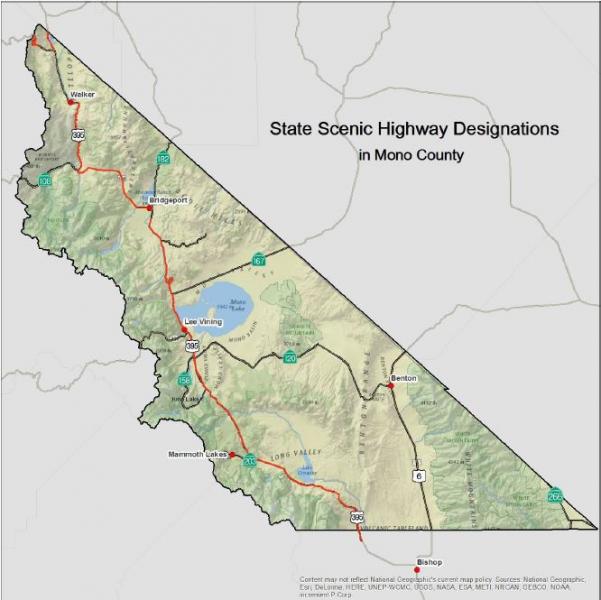
FIGURE 6: Designated County Scenic Highways
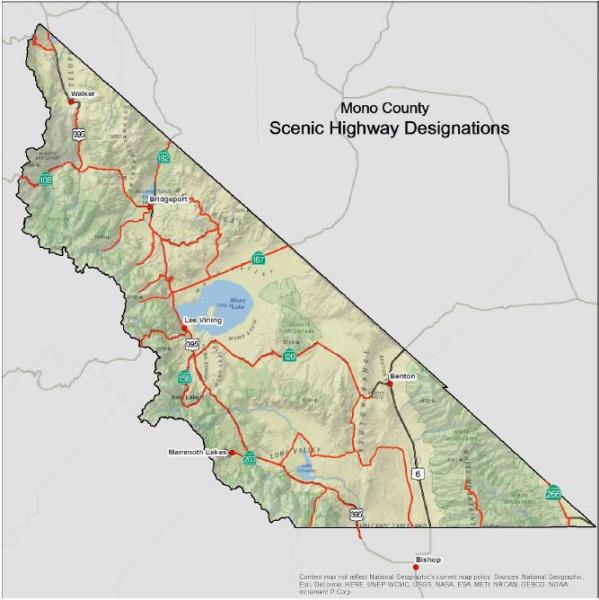
Town of Mammoth Lakes Transportation System
Road System
The major access into the town of Mammoth Lakes is provided by SR 203, which intersects with US 395, just east of the town limits. SR 203 (also named Main Street) is a four-lane road from US 395 through the majority of the developed portion of the town. SR 203 returns to two lanes north of the intersection of Main Street and Minaret Road. The highway continues from the developed area of the town to the Mammoth Mountain Ski Area, and terminates at the Mono-Madera county line. Portions of SR 203 are augmented by frontage roads. According to Caltrans' classification system, SR 203 is a minor arterial for the first 8.3 miles from US 395 through the town, and a minor collector for the westernmost 0.7 miles. Mammoth Scenic Loop, a two-lane road off SR 203, provides secondary access from the town to US 395 to the north. The Town's Road Network is shown in Figure 7.
Parking
Parking in Mammoth Lakes is largely provided in private lots. In addition to the substantial parking lots provided at ski access portals, significant private parking facilities are provided at commercial centers. There is one park-and-ride lot located on the corner of Tavern and Old Mammoth; this lot is free, located adjacent to a transit stop, and can accommodate up to 100 cars. Existing parking lots in the town are well utilized during periods of peak visitor activity. The public has noted that traffic congestion in and around the town is caused in part by a shortage of accessible private and public parking. Mammoth Lakes is completing a Parking Study to evaluate existing conditions and estimate future demand. The study contains recommendations for parking control measures for the commercial portions of the town, including park-and-ride lots.
Transit
There are currently several public and private transit operations serving the Town:
Interregional Transit
The Eastern Sierra Transit Authority (ESTA) provides regional and long-distance service along US 395 from locations in the county to Lancaster and Reno. The southern portion of the route provides connections from Lancaster to Los Angeles and Kern counties, Metrolink, Amtrak, Greyhound and the Inyokern Airport. The northern portion of the route provides access to the Yosemite Area Regional Transportation System (YARTS), Reno-Tahoe International Airport, Amtrak, and Greyhound.
Mammoth Express
ESTA operates three round trips per day between Bishop and Mammoth, five days a week, with stops at Tom’s Place and Crowley Lake. This route is intended to serve commuters.
Mammoth Fixed Routes
ESTA now operates the year-round fixed route services in the town of Mammoth Lakes, and all winter routes previously operated by MMSA. MMSA contracts with ESTA to provide service to all winter ski portals, including capital replacement costs.
Dial-A-Ride (DAR) Services
ESTA provides DAR services in Mammoth. ADA paratransit services are available in Mammoth when DAR services are not available.
Reds Meadow Shuttle
ESTA contracts with the USFS to operate a shuttle from Mammoth Lakes to Reds Meadow and Devils Postpile during the summer months.
Mammoth Mountain - June Mountain Ski Area Winter Shuttle
ESTA operates a daily winter shuttle between Mammoth and June Lake, with two round trips per day.
Vanpool
ESTA has offered a vanpool program for commuters between Bishop and Mammoth, but it was suspended due to low ridership.
Yosemite Area Regional Transportation System (YARTS)
During the summer, YARTS provides service to and from Mammoth Lakes in Mono County (and locations in Mariposa and Merced counties) on a schedule that connects with the Yosemite National Park free shuttle service.
Lodging-based Shuttles
Condominiums and hotels in Mammoth Lakes and June Lake provide this service. These shuttles provide on-demand service to the Mammoth Yosemite Airport and to the ski areas for lodging guests.
Taxi Service
Limited taxi services are offered in Mammoth Lakes on a metered, demand-responsive basis.
Non-Motorized Facilities
Biking, including organized bike races, has become an increasingly popular activity in and around the town. The General Bikeway Plan, updated in February 2014, provides a comprehensive plan for bicycle facilities, focusing on direct and convenient routing for the commuting cyclist. Figures 7A and 7B show existing and proposed bike paths in the town.
The Town of Mammoth Lakes Trail System Master Plan (MLTSMP) adopted in 2011 focuses on non-motorized facilities for alternative forms of transportation, including pedestrians, bicyclists, and Nordic skiers. The MLTSMP would connect and pass through a series of parks and open-space areas, having numerous access points in and around the town. Because of the significant existing and future traffic congestion in the town and the relatively compact development pattern, non-motorized facilities can be more than recreational facilities. A comprehensive trail system for pedestrian, cycling, and Nordic skiing will reduce auto travel, as well as provide important recreational amenities for visitors and community residents. Experience in similar resort communities has indicated a direct economic benefit from expansion of the trail system. Mammoth has already developed over several miles of multi-use paths, 80% of which have been funded with state and federal grant money.
In an effort to further develop an extensive pedestrian system, the Town adopted a comprehensive Pedestrian Master Plan in February 2014 (see Figures 7C and 7D).
Aviation
The Mammoth Yosemite Airport is an important attribute to the community. Located eight miles east of the town, the airport is an FAA-certified commercial airport, currently offering charter services. The Mammoth Yosemite Airport is owned and operated by the Town of Mammoth Lakes. Scheduled commercial air service is currently available to northern and southern California (San Francisco, Los Angeles, San Diego) and Denver, CO, with routes varying seasonally.
The Mammoth Yosemite Airport provides an important link in the statewide aeronautics system. Pilots flying the Owens Valley-Long Valley corridor along the Eastern Sierra front find the airport to be a vital means of avoiding rapidly shifting weather conditions. The airport is subject to the Federal Aviation Regulations (FAR) Part 139, which sets standards for the operation and safety of airports with small commercial carriers. Under FAR Part 139, the Mammoth Yosemite Airport is required to have established procedure manuals, as well as crash, fire, and rescue equipment.
Additionally, there are helipads located around the town that are operated by the USFS and BLM (primarily for firefighting purposes), as well as a helipad at Mammoth Hospital that is used for air ambulance services.
The Town of Mammoth Lakes is currently updating the layout plan for the Mammoth Yosemite Airport; approval is expected from the FAA shortly. This plan provides for major development and expansion of the airport terminal area, including major infrastructure improvements, aircraft support facilities, and passenger terminal. The Mono County Airport Land Use Commission adopted a Comprehensive Land Use Plan (CLUP) for the Mammoth Yosemite Airport in 1998. The CLUP establishes specific land use policies to protect the public welfare and the safety of aircraft operations.
FIGURE 7: Town of Mammoth Lakes – Road Network

FIGURE 7A: Town of Mammoth Lakes – Bicycle Network
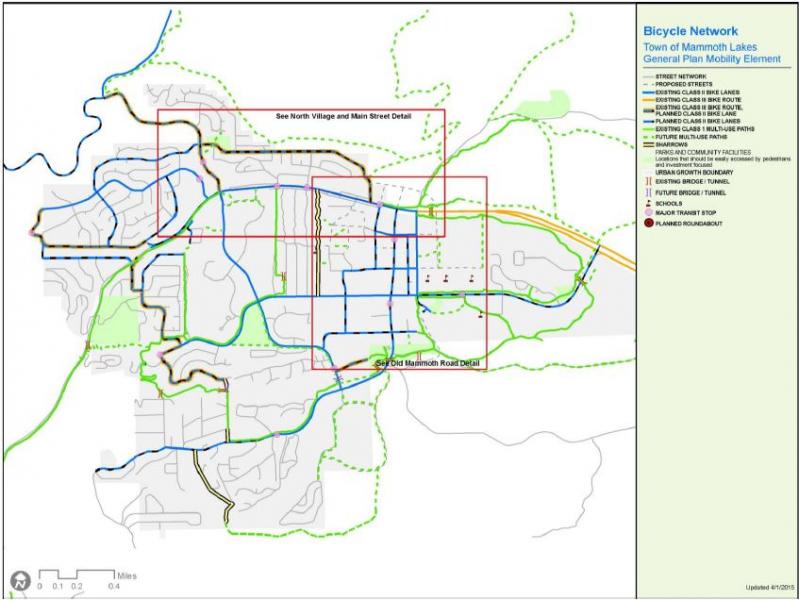
FIGURE 7B: Town of Mammoth lakes – Bicycle Network Detail
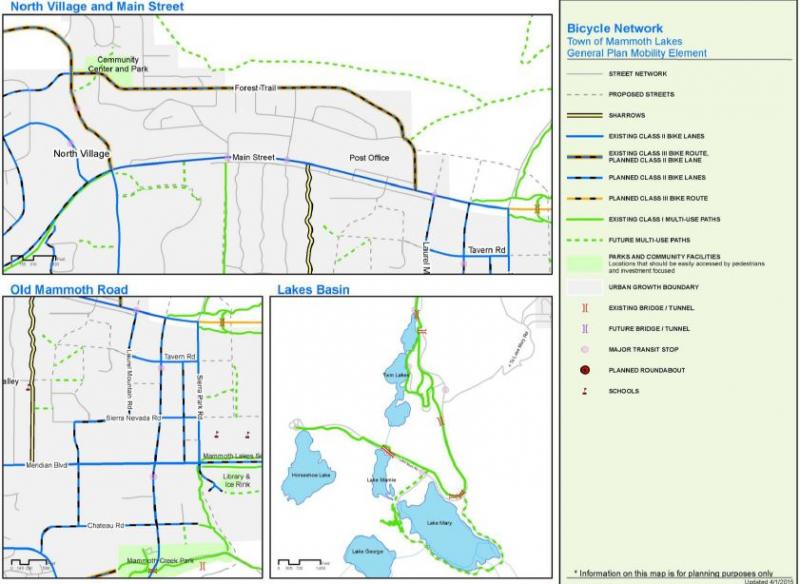
FIGURE 7C: Town of Mammoth Lakes – Pedestrian Network
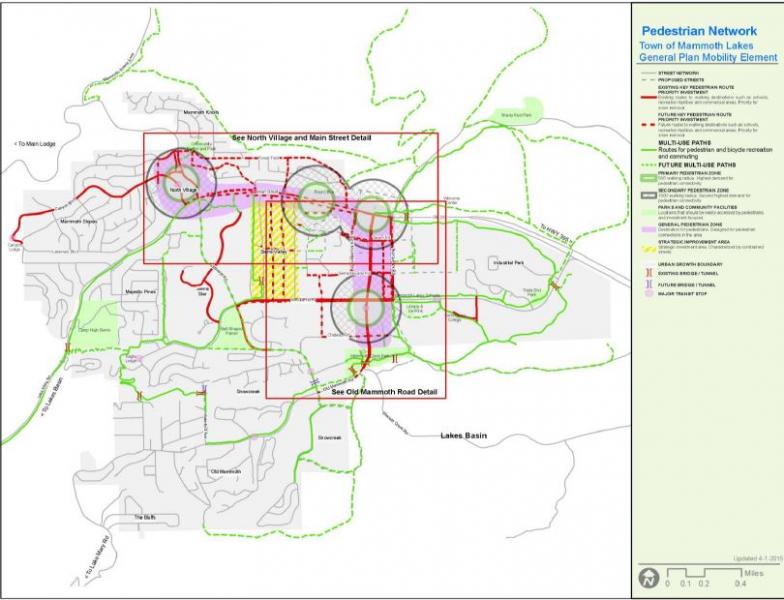
FIGURE 7D: Town of Mammoth Lakes – Pedestrian Network Detail
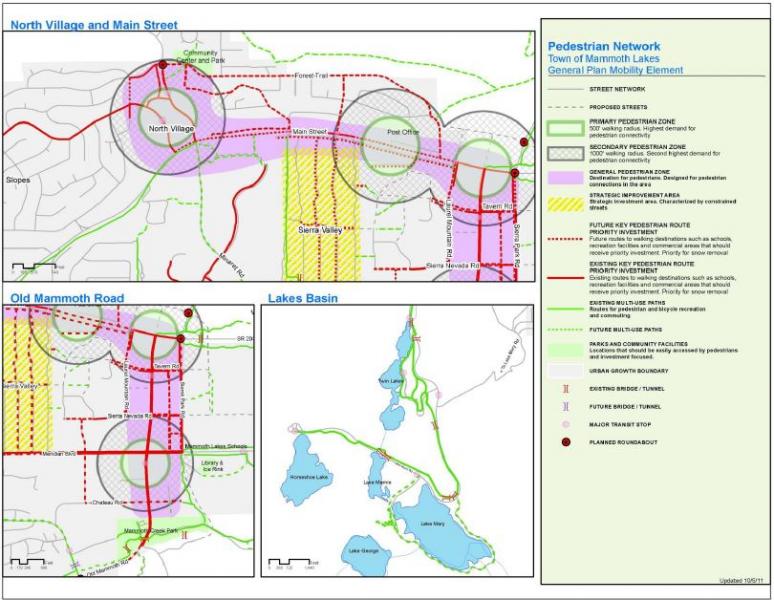
Transportation Issues
The following transportation issues are excerpts from the Town of Mammoth Lakes General Plan Revised Transportation and Circulation Element.
- SR 203 (Main Street) experiences significant traffic congestion in Mammoth Lakes and between the town and Mammoth Mountain Ski Area during the winter months. This traffic congestion adversely impacts air quality due to auto emissions, diesel fumes from buses, and re-suspended road dust and cinders. Traffic congestion is also of concern during certain periods in the summer, both along arterial streets in the town, as well as between Mammoth Lakes, Reds Meadow and Devils Postpile.
- There continues to be a reliance on the private automobile. Parking availability is inadequate in commercial activity centers during periods of peak visitor activity, which exacerbates traffic congestion and generates illegal on-street parking that may hinder snow removal and internal circulation, as noted by the Town during snow-removal operations.
- The Mammoth Yosemite Airport's ability to offer expanded services (such as commercial scheduled air service) is limited due to inadequate facilities, runways, and aircraft ramps. The lack of infrastructure improvements reduces visitor air access to the region, which in turn maintains dependency on the automobile and perpetuates traffic problems in the community.
- Traffic congestion is expected to increase as a result of improvements to the Mammoth Mountain Ski Area as well as new growth areas/developments, including North Village, Sierra Star, and Snowcreek. Increased traffic, due to these expansions and new developments, will aggravate congestion and increase conflicts between vehicles and pedestrians. However, some of the Town's arterial roadways provide traffic capacity in excess of existing or forecast future needs, unnecessarily increasing their impact on the pedestrian/bicycle environment and the overall visual quality of the community.
Travel Demand, Town of Mammoth Lakes
Existing Travel Demand
Travel demands in Mammoth Lakes are defined by resident activity as well as visitor activity. Year-round, the community's permanent population of roughly 7,500 generates travel demand patterns much like any other community of similar size, including employment trips, shopping trips, school trips, and recreational trips. In addition, the community's transportation network is impacted by the travel demand generated by visitors, which add up to roughly an additional 32,500 persons to the overnight population during the winter ski season. A summary of factors impacting existing travel demand is presented in Table 8.
Existing traffic volumes are depicted in the North Village Specific Plan Existing Plus Project Travel Impact Analysis (LSA Associates, Inc., Revised June 22, 2000). As shown, the highest traffic volumes in the community are found on Main Street between Minaret Road and Old Mammoth Road, with 15,900 to 16,400 vehicles per typical winter Saturday. The second-busiest street is Old Mammoth Road between Chateau Road and Main Street with 9,400 to 11,500 vehicles per typical winter Saturday. Traffic volumes on all other roadways are f than 10,000 vehicles per day.
TABLE 8: Factors Affecting Travel Demand in Mammoth Lakes

Existing traffic volumes are depicted in the Mammoth Lakes Transportation 2004, and 2024 [build-out year of the General Plan] Traffic Volume Results (LSC Transportation Consultants, December 7, 2004). As shown, the highest traffic volumes in the community are found on Main Street between Minaret Road and Old Mammoth Road, with 1,600 to 1,700 vehicles per hour on a typical winter Saturday. The second busiest street is Old Mammoth Road between Chateau Road and Main Street, with 1,250 to 960 vehicles per hour on a typical winter Saturday. Finally, the traffic volume along Minaret Road immediately north of Main Street is currently 1,090 vehicles per hour on a typical winter Saturday. Traffic volumes on all other roadways are less than 1,000 vehicles per hour.
Review of existing traffic conditions yields the following findings:
- Traffic activity varies substantially with season. Caltrans’ counts from the 2003-04 count season indicate that the average daily traffic on Main Street just east of Minaret Road in the peak summer month (August) of 12,688 vehicles per day slightly exceeds the peak winter month (February) volume of 12,617 vehicles per day. In comparison, the lowest monthly volume of 8,553 occurs in May and corresponds to only 67% of the traffic volume in the peak month.
- However, the average Saturday traffic volume along Main Street just east of Minaret Road in January and February was equal to 15,565 and 15,970 vehicles per day, respectively. These average winter Saturday traffic volumes are higher than the average daily traffic volumes occurring on any day throughout the week in the summer. This suggests that although overall traffic volumes are consistently higher during the summer months, winter Saturdays represent the period during which the highest traffic volumes occur.
- Reflecting historic patterns of ski area facilities and amenities, a substantial proportion of existing access to MMSA is provided via Minaret Road. This concentration of ski traffic (particularly at the end of the ski day) on a two-lane facility, with limited capacity, creates the town’s most significant recurring traffic congestion problem.
- On a peak winter day, the Mammoth Mountain Ski Area transit ridership equals approximately 14,200 passengers. This equates to approximately 6,400 skiers, assuming each skier makes one transit round trip per day and that 90% of the passengers are skiers. In addition, according to Mammoth Mountain Ski Area, during the 2003-04 ski season approximately 21,600 skiers visited the ski area on the peak day. Therefore, it is estimated that approximately 30% of the skiers access Mammoth Mountain Ski Area by public transit.
Future Travel Demand
In addition to general growth in travel resulting from increases in population and visitation, travel demand in Mammoth Lakes will be impacted by the following planned development:
- Implementation of the North Village Specific Plan;
- Completion of development at Snowcreek;
- The Sierra Star project;
- Shady Rest; and
- The Airport Facility and Service Expansion project.
A number of smaller residential and lodging projects will also increase travel demand. As part of the North Village and Sierra Star projects, access to MMSA will be substantially modified, increasing the proportion of access that is provided by portals other than Main Lodge.
The traffic model update analyses, prepared by LSC, indicate that total peak winter Saturday person trips will increase from the current level of approximately 166,000 to approximately 295,000 at build-out of the General Plan. Considering shifts in travel mode, average winter day traffic volumes on Town roadways will generally increase as follows:
- Main Street between Minaret Road and Old Mammoth Road: 24% to 55% increase;
- Lake Mary Road between Canyon Boulevard and Kelley Road: 42% to 98% increase;
- Old Mammoth Road between Main Street and Meridian Boulevard: 22% to 41% increase;
- Minaret Road between Main Street and Meridian Boulevard: 91% to 202% increase;
- Minaret Road between Main Street and Forest Trail: 44% to 61% increase;
- Minaret Road immediately north of Forest Trail: 71% increase; and
- Meridian Boulevard between Old Mammoth Road and Minaret Road: 45% to 129% increase.
Transit
Existing Transit Services
The Eastern Sierra Transit Authority (ESTA) was formed through a Joint Powers Agreement (JPA) in October 2006 to replace Inyo-Mono Transit as the transit provider in the Eastern Sierra. Its members are Mono County, Inyo County, the Town of Mammoth Lakes, and the City of Bishop. As a transit operator, ESTA provides a variety of local and regional transit services, including demand-response, fixed-route, deviated fixed route, intercity connections to multiple communities in the Eastern Sierra, and regional service to Reno, NV, and Lancaster, CA.
ESTA provides transit services in Mono County and regionally. ESTA recently adopted the Inyo-Mono Counties Coordinated Public Transit-Human Services Transportation Plan Update (April 4, 2014). This document provides extensive information on existing transit services in the region, a transportation needs assessment for the region, and an implementation plan for providing coordinated services throughout the region. That plan is incorporated by reference in the RTP.
The following transit services are currently available in Mono County:
ESTA TRANSIT SERVICES
Interregional Transit
ESTA provides regional and long-distance service along US 395 from locations in the county to Lancaster and Reno. The southern portion of the route provides connections from Lancaster to Los Angeles and Kern counties, Metrolink, Amtrak, Greyhound and the Inyokern Airport. The northern portion of the route provides access to the Yosemite Area Regional Transportation System (YARTS), Reno-Tahoe International Airport, Amtrak and Greyhound.
Mammoth Express
ESTA operates three round trips per day between Bishop and Mammoth, five days a week, with stops at Tom’s Place and Crowley Lake. This route is intended to serve commuters.
Mammoth Fixed Routes
ESTA now operates the year-round fixed-route services in the town of Mammoth Lakes, and all winter routes previously operated by MMSA. MMSA contracts with ESTA to provide service to all winter ski portals, including capital replacement costs.
Dial-A-Ride (DAR) Services
DAR services are provided in Walker and Mammoth. ADA paratransit services are available in Mammoth when DAR services are not available.
Reds Meadow Shuttle
ESTA contracts with the USFS to operate a shuttle from Mammoth Lakes to Reds Meadow and Devils Postpile during the summer months.
Mammoth Mountain - June Mountain Ski Area Winter Shuttle
ESTA operates a daily winter shuttle between Mammoth Lakes and June Lake.
Vanpool
ESTA has offered a vanpool program for commuters between Bishop and Mammoth Lakes, but it was suspended due to low ridership.
OTHER TRANSPORTATION SERVICES
Yosemite Area Regional Transportation System (YARTS)
During the summer, YARTS provides service to and from Mammoth Lakes, June Lake and Lee Vining in Mono County (and locations in Mariposa and Merced counties) to Yosemite Valley, and more recently to Tuolumne Meadows as a high-country alternative to relieve congestion in Yosemite Valley, on a schedule that connects with the Yosemite National Park free shuttle service.
Lodging-based Shuttles
Condominiums and hotels in Mammoth Lakes and June Lake provide this service. These shuttles provide on-demand service to the Mammoth Yosemite Airport and to the ski areas for lodging guests.
Taxi Service
Limited taxi services are offered in Mammoth Lakes on a metered, demand-responsive basis.
Mono County Senior Services
Mono County Social Services runs the Senior Services program, and provides transportation services for seniors who cannot ride ESTA buses due to physical limitations. The agency takes seniors shopping, to the doctor, or to obtain other services, locally or long distance. Senior trips go to destinations such as AARP conventions, Reno, or Los Angeles. Senior Services runs a meals-on-wheels program and helps distribute government surplus food throughout the county.
Inyo-Mono Association for the Handicapped (IMAH)
IMAH provides respite care and adult day-care services for older adults and developmentally disabled residents. IMAH provides transportation for clients to and from programs as well as to work, using six vehicles it owns.
Toiyabe Indian Health Project
The Toiyabe Indian Health Project provides transportation for Native Americans and their families for shopping, medical and other necessary purposes. Based in Bishop, the project provides transportation in both Inyo and Mono counties.
School Buses
The county's dispersed population and the location of its public schools require some students to travel many miles to and from school. Both the Eastern Sierra Unified School District and the Mammoth Unified School District provide bus services for their students.
Charter Services
There are no other interregional transit services other than private charter lines. The majority of private charters originate in Southern California and less frequently from the Bay Area and Las Vegas. The majority of charter buses stop in Mammoth Lakes. According to the Mammoth Lakes Visitors Bureau, approximately 20 to 30 buses per day serve Mammoth Lakes in the summer months, averaging approximately 40 persons per bus, and approximately 10 to 15 buses arrive per day in the winter months, averaging 40 persons per bus.
Transit Dependent Populations
Transit needs may be assessed in terms of those segments of the population that are dependent on some form of public transportation. In Mono County, these are generally young people, seniors, disabled persons, or low-income persons. Table 9 shows population projections for young people and seniors. The percentage of young people is projected to remain relatively stable over the next 20 years while the senior population is projected to rise approximately 100% over the next 20 years. The senior population often has mobility concerns that require specialized transportation.

The current Inyo-Mono Counties Coordinated Public Transit-Human Services Transportation Plan (2014) prepared for ESTA notes the following concerning transit-dependent populations in Mono County:
- The greatest number of persons over age 65 in Mono County lives in Mammoth Lakes (550);
- Mammoth also has the greatest number of persons living below the poverty level (1,058), as well as a high number of seasonal workers;
- There are 75 households without a vehicle in Mammoth and 53 in June Lake;
- Data on residents with disabilities is not yet available from the 2010 Census;
- Most employment in Mono County is within the tourism sector related to the ski resort, or to county government. Major employers in Mono County (more than 200 employees) include Mammoth Hospital, Mammoth Mountain Ski Area, and Mono County.
- In Mono County, the median household income is $60,469. Around 2.4% of households receive Supplemental Social Security, 1.2% received cash assistance, and 4.3% receive SNAP benefits;
- Nearly 40% of Mono County employed residents work in Mammoth Lakes. Another 11.3 work in Crowley Lake. Approximately 7% commute to Bishop and another 5.3% commute to Bridgeport. Almost 75% of employees working in Mammoth Lakes commute from elsewhere, largely Bishop, Crowley Lake, Chalfant and June Lake. There is a high level of commuting between Bishop and Mammoth Lakes, with a greater number of commuters traveling from Bishop to Mammoth Lakes.
- Population projections prepared by the California State Department of Finance forecast a very significant growth in older adults who will require access to medical and social services. The senior population (65+) is forecast to increase by 30% between 2010 and 2020, and by 20% between 2020 and 2030. Between 2020 and 2030, much of the increase will be in residents age 75+.
Transit issues and needs include the following:
- The Eastern Sierra Transit Authority Short-Range Transit Plan is incorporated as part of the Mono County RTP (see Chapter I, Planning Process). That plan provides greater detail concerning transit needs, facilities, and services in Mono County. The Mammoth Lakes Transit Plan is also incorporated as part of the Mono County RTP and provides greater detail concerning transit needs, facilities, and services in Mammoth Lakes.
- The Inyo-Mono Counties Coordinated Public Transit-Human Services Transportation Plan Update is incorporated by reference and provides great detail about transit needs, facilities, and services in Mono County and the Eastern Sierra. That plan identifies a number of issues and opportunities for the continuing provision of transit services in the Eastern Sierra, including:
- Coordination of existing services;
- Opportunities to increase coordination among service providers;
- Barriers to coordination (geographical, staffing, cost of fares, restrictions on the use of certain small vehicles owned and operated by social-services agencies, lack of funding);
- Opportunities to eliminate duplication of services, thereby maximizing limited transportation resources; and
- Opportunities to plug gaps in service identified by human service agencies in the area.
- The current principal method of transportation to and through Mono County is the highway system. Alternative methods of moving people and goods to and through the county are limited. There is no rail service. The existing airports, because of their high-altitude location and the often severe weather conditions in the area, are limited in the amount and type of service that they can accommodate.
- There is a continuing need for increased transit services to reduce congestion and related air quality impacts, particularly in Mammoth Lakes and potentially in June Lake.
- Transit-dependent populations in Mono County include young people, seniors, and low-income persons. Over the next 20 years, the population of young people is projected to remain relatively stable while the senior population is projected to increase significantly. Estimates show the number of persons living in poverty to be relatively stable. Although low-income persons traditionally are transit dependent, social-services providers indicate that they tend to be less so in Mono County where the need for a car is greater than in more urbanized areas.
- There are a significant number of commuters in Mono County, particularly between Mammoth Lakes and Bishop.
- The June Lake and the Bodie Hills area policies both encourage the development of transit shuttle services in their respective areas.
Non-Motorized Facilities
Non-motorized issues and needs include the following:
- The County completed a Trails Plan, including a General Bikeway Plan, in 1994 and updated both plans in 2015 (see Appendix G for the Trails Plan). These plans provide comprehensive planning for non-motorized facilities in the unincorporated areas.
- The overall purpose of the Mono County Trails Plan is to establish trail systems that facilitate multi-modal travel and recreation within, around and between unincorporated communities in the county. The plan addresses regional routes that provide access to communities throughout the county and to major recreational areas and existing trail systems, and community routes that provide access throughout communities and to surrounding recreational areas.
- The Trails Plan is intended to expand upon and implement policies in the Mono County General Plan, associated Area Plans, and the RTP, and to coordinate with the applicable plans of Federal land management agencies. The Plan focuses primarily on the development of facilities for recreational users, both residents and visitors, and conceptualizes the opportunity to create an Eastern Sierra Regional Trail system. This proposed system would provide a regional non-wilderness trail system close to 300 miles long in Inyo and Mono counties. Ninety percent of the system would be on existing trails, old railroad alignments, wagon roads, and abandoned roads; 10% of the system would require new construction. This project has been developed to a conceptual level and requires further development, including community and agency outreach to refine alignments, projects and programs.
- The Mammoth Lakes General Bikeway Plan (2014), Mammoth Lakes Pedestrian Master Plan (2014), Mammoth Lakes Trail System Master Plan (2011), and the Municipal Wayfinding Master Plan (2012) are incorporated as part of the Mono County RTP. Those documents provide comprehensive planning for non-motorized facilities in the town of Mammoth Lakes.
- There is a growing need for additional trail systems throughout the county, both within and between community areas. There is the potential to link existing trail systems, which are predominantly on public lands, to newly developed trail systems on private and county lands in community areas. State planning law (Section 65302 (e) et seq. of the Government Code) requires every city and county to consider a trail system in its open space element. The law also requires every city and county to consider the feasibility of integrating its trail system with appropriate segments of the state system.
- Most bicycle travel in the region now occurs on streets and highways without special bike facilities. This will probably be true in the future as well, particularly as commuting by bicycle increases in popularity in community areas. In some instances, some street systems may be fully adequate for safe and efficient bicycle travel, and signing and striping for bicycle use may be unnecessary. In other cases, signing and/or striping can serve as a means to alert motorists of the presence of bicyclists that may be using the roadway.
- In past RTPs and Circulation Elements, the Mono County LTC adopted the policy that the most important effort that could be undertaken to enhance bicycle travel would be improved maintenance of existing roads that are used regularly by bicyclists. This effort requires increased attention to the shoulder portion of roadways where bicyclists are expected to ride. Caltrans has indicated that it has put increased sweeping into its maintenance budget and has received good feedback.
- The consideration of bicycle needs in construction projects and in safety and operational improvements is also important. Through the Mono County Trails Plan the County road system has been reviewed to determine the immediate needs of bicyclists in terms of increasing safety for riders and requests by users for bicycle lanes. Many rural highways are used by touring bicyclists and locals for recreational travel and travel between communities. The development and maintenance of paved roadway shoulders with a wider 8-10 inch edge-line stripe would significantly improve the safety and capacity for bicyclists.
- In January 2000, the Mono County LTC voted to support the following requests from the Sierra Cycling Foundation for bike route signing in Mono County on state highways and county routes:
- US 395 north and south from Tom’s Place to SR 158;
- June Lake Loop (SR 158) in both directions;
- SR 120 to Benton in both directions;
- US 395 north of June Lake Junction to Lee Vining in both directions;
- SR 203 from US 395 to Mammoth Mountain Ski Area in both directions;
- Upper Rock Creek Road from Tom’s Place to Mosquito Flat in both directions;
- Lower Rock Creek Road from Tom’s Place to the Inyo County line in both directions;
- Benton Crossing Road to SR 120 in both directions;
- Crowley Lake Drive to Sherwin Creek Road in both directions; and
- Owens River Road in both directions.
- With the exception of Upper Rock Creek Road, all routes have been identified in the RTP and Mono County General Plan Circulation Element as Regional Bike Routes. Caltrans wants to ensure that bike route signage on state highways is coordinated with bike route signage on other county routes. They intend to install signs as soon as they verify that routes proposed for bike route signage are appropriate for bicycle usage.
- There is a need for improved and expanded pedestrian facilities in community areas throughout the county, both to improve safety and to increase access to commercial core areas in communities. Safe Routes to Schools routes can be developed in additional areas. The community issues section of this document identifies those areas where improved pedestrian facilities are needed, such as the June Lake Village. The Livable Communities planning process is developing planning principles, included in this RTP, to convert communities in the county to more walkable communities. The focus is on Crowley Lake, Lee Vining, June Lake, and Bridgeport.
- Active Transportation Program funding provides an opportunity to develop and fund coordinated systems for non-motorized users. There may be an opportunity to target some of the lower-income areas of communities, if they qualify as disadvantaged communities.
The unincorporated area of Mono County, outside of the town of Mammoth Lakes, has few existing dedicated bicycle facilities. The following section on bicycle needs in the unincorporated area of Mono County is an excerpt from the Mono County Bicycle Transportation Plan (Draft, 2014):
Existing Bicycle Routes and Signage
Although cycling is an increasingly popular activity in Mono County, the County lacks facilities specifically for bicyclists. Most cycling occurs on roadways where the shoulder may or may not be wide enough to accommodate bicyclists safely. Mountain bike use occurs throughout the county on dirt roads, which generally are not marked as bike trails. The following are the sections of local roads with markings/signage for bike use:
- Bike Route along Crowley Lake Drive and South Landing Road from Tom’s Place to Crowley Lake;
- Bike Route along Pearson Road in Crowley Lake;
- North Shore Drive Bike Route in June Lake;
- Share the Road signs along Benton Crossing Road;
- Share the Road signs along SR 158 in June Lake;
- Bicycle/pedestrian bridge over the East Walker River in Bridgeport;
- Recently designated bike lane on Main Street (US 395) in Bridgeport; and
- Eastside Lane Bike Route in the Antelope Valley
It is the policy of the Local Transportation Commission that when rehabilitation work is planned for local/state highways, that non-motorized users be consulted for the addition of bike/pedestrian facilities prior to construction.
Existing Rest Facilities
Rest facilities (e.g., restrooms, drinking water, public phones, and air for tires) and parking facilities (for vehicles and bicycles) are available in most communities at the community center, private facilities in communities, schools, county parks, and USFS facilities. Caltrans maintains the Crestview Safety roadside Rest Area (US 395).
Outside of communities, rest facilities and parking facilities are available at USFS facilities (campgrounds and recreational areas), and at private recreational areas (e.g., Twin Lakes, Brown's Campground on Benton Crossing Road, etc.). There are few rest facilities on the many dirt roads in the county used by bicyclists. Most of those roads are on public lands and the applicable land management policy for those areas is generally to keep them as undeveloped recreational areas.
The Eastern Sierra Scenic Byway provides interpretive kiosks and some rest facilities along the length of US 395 in Mono County and along SR 120 between Yosemite National Park and US 395.
Existing Parking Facilities
Bike racks are located at the following locations:
- June Lake Library and Community Center;
- USFS Mono Basin Visitor Center in Lee Vining;
- Behind Mono Mart in LV for employees;
- County Annex building in BP;
- Lee Vining High School;
- Lee Vining Community Center; and
- Town of Mammoth Lakes in various locations
Changing Facilities
No facilities specifically exist for bicycle riders to change clothing (changing facilities) except for restrooms adjacent to the bike racks mentioned above.
Transport Facilities/Public Transit Connections
All Eastern Sierra Transit buses have bike racks. The transit system recently installed shelters in various communities throughout the county; however, the shelters will not be equipped with bike racks.
Bus shelters have been installed at the following locations:
- Crowley Lake Drive, just north of Tom’s Place store;
- Community Center in Crowley Lake;
- Benton, US 6 in front of the school;
- Lee Vining, near the Mono Vista RV park and in front of the Caltrans Yard and on SR 120 at the Mobil Mart YARTS stop;
- Mono City, on US 395;
- Walker, US 395 southbound at Mule Deer Road and northbound across from Mule Deer Road;
- Coleville, US 395 southbound just south of the school;
- Bridgeport, on Emigrant Street next to the County Park tennis courts; and
- Town of Mammoth Lakes along Main Street and Meridian Boulevard
Mono County Bicycle Users
The unincorporated area of Mono County, outside the town of Mammoth Lakes, has few existing dedicated bicycle facilities. With job centers and school locations often outside their community, it is not practical for most people to commute to work on bicycles or for many students to commute to school using bicycles. Both students and workers must often drive many miles to their destination, to a community other than the one in which they reside. Extreme weather conditions also make it difficult to bike year round; snow and ice in many parts of the county limit winter biking opportunities, while extreme heat and dust storms decrease summer biking opportunities in a few other areas.
There is growing interest in commuting by bicycle within communities. Generally, traffic congestion is limited, and air quality impacts from automobile use are minimal in the county. Most Mono County communities are small, with relatively flat topography.
The 2009-13 American Community Survey indicated 2.5% of workers ride bicycles to work, and 14% walk.
Recreational Use/Bicycling Events
Recreational biking is an increasing tourist attraction in the county, both on county roads and highways and on unpaved roads on public lands. Opportunities for recreational bicycling are abundant. Many of the County’s paved roads have little traffic and lead to a variety of scenic recreational destinations. The local cycling community currently produces several large-scale bike events on roads within the county (the High Sierra Fall Century/Gran Fondo, Everest Challenge, Pamper Pedal, and several others). The Sierra Cycling Foundation/Eastside Velo has indicated that organizers would like to attract more large-scale biking events to the county.
Safety and Education Programs
Several entities within Mono County conduct bicycle safety and educational programs.
- The Mono County Health Department sponsors bicycle safety activities throughout the year in conjunction with other County and Town agencies. A limited number of bicycle helmets are available for children whose families cannot afford to buy one.
- The Mammoth Lakes Police Department has an ongoing program of bicycle safety and education primarily oriented toward elementary school-aged children. The program includes a yearly “Bicycle Rodeo” for all grades, bicycle inspection, bicycle safety handouts, and bicycle registration. The Bicycle Rodeo focuses on riding safety and instruction, helmet use, traffic-sign recognition, bicycle lane use, handling crosswalks, hand signals, etc. Bicycles are checked for safety features such as seats, handlebars, brakes, and tires; a special sticker is issued validating inspection. The program is conducted on a yearly basis. Safety handouts are also available for younger children in the first and second grades.
- Sierra Cycling Foundation’s mission is to promote cycling and improve cycling conditions in the Eastern Sierra. The group advocates bicycle safety and education of cyclists as well as motor-vehicle operators, strongly supports the “share the road” concept, and continually strives to add more miles of “share the road” signs. Eastside Velo provides bicycle safety information and suggested routes and rides for cyclists visiting and living in the Eastern Sierra and emphasizes bicycle-safety training for children, mandatory helmet laws, and safer road conditions by working with public works and planning departments in Inyo and Mono counties, the Town of Mammoth Lakes, the City of Bishop, Eastside Velo and Caltrans, District 9.
Types of Bikeways
The Caltrans Highway Design Manual identifies four types of bicycle facilities:
- Shared Roadway (No bikeway designation).
- Class I Bikeway (Bike path). Separate right of way for bicyclists. Generally should serve corridors not served by streets or highways.
- Class II Bikeway (Bike lane). Utilizes the shoulder area of roads. Signing and striping separate areas for bicyclists and motorists.
- Class III Bikeway (Bike route). Similar to a Class II Bikeway, except that the shoulder area is shared with vehicles.
Most of the facilities in the county are Shared Roadways. There is a short Class II Bikeway along Crowley Lake Drive in the vicinity of Aspen Springs as well as in downtown Bridgeport. There are also marked mountain bike routes on dirt roads in the western end of Long Valley. Caltrans District 9 generally pursues 8-foot shoulders on highways when feasible for safety, which also facilitiates bike use, and has initiated a District 9 multi-modal plan to provide additional direction for District 9 facilities.
Selection of the appropriate type of bikeway to meet an identified need is dependent on many factors, including safety, demand, and connection to other bike facilities. The Caltrans Highway Design Manual contains criteria to help determine whether designation of a bikeway is appropriate and, if so, which type is most suitable. The relative cost of various types of facilities is also a consideration.
In Mono County, shared roadways (with a 4-foot paved shoulder and 8- to 10-inch edge stripe) will continue to be the most feasible type of bikeway in most areas. Relatively low bicycle demand may make it infeasible to designate bikeways; environmental considerations and maintenance costs may make it difficult to develop separate bike paths.
The Bicycle Transportation Plan contains a list of overall needs related to biking in unincorporated Mono County, which was developed by local bicycling groups, along with lists of specific needs for community areas.
Town of Mammoth Lakes – Non-Motorized Facilities
In Mammoth Lakes, non-motorized facilities for the use of pedestrians, bicyclists, equestrians and Nordic skiers have been comprehensively planned. Because of the significant existing and future traffic congestion in Mammoth Lakes, non-motorized facilities can be more than recreational facilities. A comprehensive system of walking, bicycle and Nordic trails will reduce auto travel and provide important visual and activity amenities for visitors and community residents. The Town continues to implement its plans for non-motorized facilities by improving and linking additional portions of its trails system.
Active Transportation Program
The Active Transportation Program (ATP) was created by Senate Bill 99 (Chapter 359, Statutes 2013) and Assembly Bill 101 (Chapter 354, Statutes 2013) to encourage increased use of active transportation modes, such as biking and walking. The goals of the Active Transportation Program are to:
- Increase the proportion of trips accomplished by biking and walking;
- Increase the safety and mobility of non-motorized users;
- Advance the active transportation efforts of regional agencies to achieve mandated greenhouse gas reduction goals;
- Enhance public health, including reduction of childhood obesity through the use of programs including, but not limited to, projects eligible for Safe Routes to School Program funding;
- Ensure that disadvantaged communities fully share in the benefits of the program; and
- Provide a broad spectrum of projects to benefit many types of active transportation users.
Ten percent of all ATP funding is awarded to small urban and rural areas with populations of 200,000 or less. Twenty-five percent of the funding in this category must benefit disadvantaged communities. Another 50% of all ATP funding is awarded competitively on a statewide basis. Twenty-five percent of the funding in that category must benefit disadvantaged communities as well.
Funding is available for a variety of project types, including infrastructure and non-infrastructure projects, e.g.:
- Development of new bikeways and walkways that improve mobility, access, or safety for non-motorized users;
- Improvements to existing bikeways and walkways, which improve mobility, access, or safety for non-motorized users;
- Elimination of hazardous conditions on existing bikeways and walkways;
- Preventative maintenance of bikeways and walkways with the primary goal of extending the service life of the facility;
- Installation of traffic-control devices to improve the safety of pedestrians and bicyclists;
- Safe Routes to School projects that improve the safety of children walking and bicycling to school;
- Safe routes to transit projects, which will encourage transit by improving biking and walking routes to mass transportation facilities and school bus stops;
- Secure bicycle parking at employment centers, park-and-ride lots, rail and transit stations;
- Bicycle-carrying facilities on public transit;
- Establishment or expansion of a bike-share program;
- Recreational trails and trailheads, park projects that facilitate trail linkages or connectivity to non-motorized corridors, and conversion of abandoned railroad corridors to trails;
- Education programs to increase bicycling and walking, and other non-infrastructure investments that demonstrate effectiveness in increasing active transportation;
- Development and publishing of community walking and biking maps, including school route/travel plans;
- Components of open-streets events directly linked to the promotion of a new infrastructure project; and
- Development of a bike, pedestrian or active transportation plan.
Disadvantaged Communities
A portion of Active Transportation Program funding must go to Disadvantaged Communities. For a project to contribute toward the Disadvantaged Communities funding requirement, the project must clearly demonstrate a benefit to a community that meets any of the following criteria:
- The median household income is less than 80% of the statewide average based on census tract level data from the American Community Survey;
- An area identified as among the most disadvantaged 10% in the state according to latest versions of the California Communities Environmental Health Screening Tool (CalEnviroScreen) scores; or
- At least 75% of public school students in the project area are eligible to receive free or reduced-price meals under the National School Lunch Program. Applicants using this measure must indicate how the project benefits the school students in the project area or, for projects not directly benefiting school students, explain why this measure is representative of the larger community.
If a project applicant believes a project benefits a disadvantaged community but the project does not meet the criteria identified above, the applicant may submit a quantitative assessment of why the community should be considered disadvantaged. There are currently no communities in Mono County that meet the criteria for qualification as a disadvantaged community. Standardized state data often do not capture Mono County’s small, rural communities well.
Aviation
Three public airports are located in Mono County: Mammoth Yosemite Airport, Lee Vining Airport, and Bryant Field (Bridgeport Airport). In addition to the airports, there are several helipads located throughout the county. The following information on airports in the county is from the California Aviation System Plan (CASP), 2013 Inventory Element.
Mammoth Yosemite Airport
Mammoth Yosemite Airport, located eight miles east of Mammoth Lakes, is an FAA-certified commercial airport offering charter services. It is owned and operated by the Town of Mammoth Lakes. The airport provides convenient access for recreation, tourism, and charter services, as well as emergency access for medical and firefighting activities. Mammoth Yosemite Airport has 130 hangars and 80 tie-downs. Eight single-engine planes and two multi-engine planes were based there in 2012.
In 2012, the airport reported 8,000 aircraft operations, with 26,196 enplanements and 39,596 total passengers. Of the 8,000 aircraft operations, 129 were air carriers, 1,759 were air taxis, 2,048 were general aviation local flights, 4,029 were general aviation itinerant flights, and 35 were military flights. Total passenger traffic (combined passenger counts reflecting both enplaned and deplaned counts) rose from 53,541 in 2011 to 54,386 in 2012.
The Mammoth Yosemite Airport provides an important link in the statewide aeronautics system. Pilots flying the Owens Valley-Long Valley corridor along the Eastern Sierra front find the airport to be a vital means of avoiding rapidly shifting weather conditions. The airport is subject to the Federal Aviation Regulations (FAR) Part 139, which sets standards for the operation and safety of airports with small commercial carriers. Under FAR Part 139, the Mammoth Yosemite Airport is required to have procedure manuals, as well as crash, fire, and rescue equipment.
Limited year-round commercial air service is available to Southern California, and more direct flights are available in the winter.[1] That service is subsidized by Mono County, the Town of Mammoth Lakes, and Mammoth Mountain Ski Area. The Town of Mammoth Lakes has formed a public/private partnership with Mammoth Mountain Ski Area (MMSA) to develop the airport. The Town is developing the airport, including widening and lengthening the runway and taxiways, airline ramps, a new terminal, and other safety improvements. MMSA is providing a revenue guarantee for commercial airline service into the airport. The short-term capital improvement program for Mammoth Yosemite Airport, including improvements and maintenance projects, is included in Chapter 5, Action Element.
Lee Vining Airport
Lee Vining Airport, located in Lee Vining, is designated as a "Limited Use-Recreational Access" facility serving the general aviation public. It is owned and operated by Mono County. The airport provides convenient access for recreation and tourism, as well as emergency access for medical activities.
The airport has three hangars and seven tie-downs; currently no aircraft are based there. The airport has a pilot-activated lighting system and a navigational beacon but no aviation fuel is available. The airport is located at an elevation of 6,802 feet. In 2012, the airport reported 2000 aircraft operations; all 2000 were general aviation itinerant flights.
Recent improvements at the airport included replacing the runway with a properly graded one that is 4,940 feet long and 60 feet wide and installing paved overruns at both ends of the runway. Future improvements include a full-length parallel taxiway, lighting enhancements, perimeter fencing and a card access control gate, and an automatic weather observation system. The short-term capital improvement program for Lee Vining Airport, including improvements and maintenance projects, is included in Chapter 5, Action Element.
Bryant Field (Bridgeport)
Bryant Field, located in Bridgeport, is designated as a "Community – Recreational Access" facility serving the general aviation public. It is owned and operated by Mono County. The airport provides convenient access for business and tourism, as well as emergency access for medical and firefighting activities.
The airport has no hangars and 18 tie-downs; currently no aircraft are based there. The airport has a pilot-activated lighting system, a navigational beacon, and aviation fuel available. The airport is located at an elevation of 6,468 feet. The existing runway is 4,239 feet long and 60 feet wide. A parallel taxiway serves about 2/3 of the runway length; extension of the taxiway is limited by the proximity of Bridgeport Reservoir. In 2012, the airport reported 500 aircraft operations; 200 were general aviation local flights, 300 were general aviation itinerant flights. On occasion, the Marine Corps Mountain Warfare Training Center requests special permission to use the airport for training exercises.
Relatively recent safety improvements at the airport include lighted runway distance signs, lighted airport signs, Runway End Identifier Lights (REIL) on runway 34, Precision Approach Path Indicators (PAPI) on Runway 34, lighting vault renovations, and an Automatic Weather Observation System (Superawos). The short-term capital improvement program for Bryant Field, including improvements and maintenance projects, is included in Chapter 5, Action Element.
Helipads
In addition to the airports, there are several helipads in the county. One is operated by the U.S. Marine Corps at its Mountain Warfare Training Center at Pickel Meadow. Others are operated by the USFS and BLM, primarily for firefighting purposes. Helipads located at Mammoth Hospital in Mammoth and at Mono Medical Center in Bridgeport are used for air ambulance services.
Airport Planning Documents
Airport Master Plans guide the future growth and development of an airport and identify improvements needed to respond to aviation demand over a 20-year time frame. Master Plans and Airport Layout Plans were last revised for Bryant Field and the Lee Vining Airport in 2006, and for Mammoth Yosemite Airport in 2000.
Comprehensive Land Use Plans (CLUPs) are adopted by the Airport Land Use Commission (ALUC). These plans have two primary purposes: 1) to provide for the orderly growth of each public use airport and the area surrounding the airport within the jurisdiction of the ALUC, and 2) to safeguard the general welfare of the public within the vicinity of the airport. CLUPs were adopted for Bryant Field and the Lee Vining Airport in June 2006, and for the Mammoth Yosemite Airport in October 1998.
Aviation Forecasts and Trends
Aircraft activity in Mono County is primarily general aviation activity; i.e., aircraft used for firefighting, emergency services, charter service, business or recreational use. As shown in Tables 10 and 11, general aviation aircraft activity will continue to play an important role in Mono County and the Eastern Sierra region. Aviation services and the existing airport infrastructure are necessary for the movement of people and light cargo, firefighting, and emergency medical purposes. For visitors, the air services provide the only alternate mode of transportation into Mono County (other than driving). For residents, air services permit rapid communication with business, governmental and medical centers throughout other areas of the state and rapid emergency medical transportation when necessary.
Although Mammoth Yosemite Airport is an FAA-certified commercial service airport providing charter service, plans are in the works to develop the facility for regularly scheduled passenger service. Mammoth Yosemite Airport is also the only airport in Mono County that provides air cargo service.

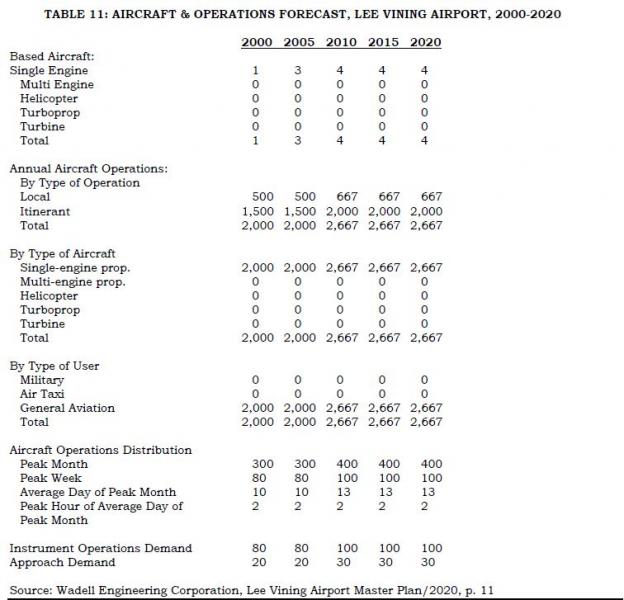
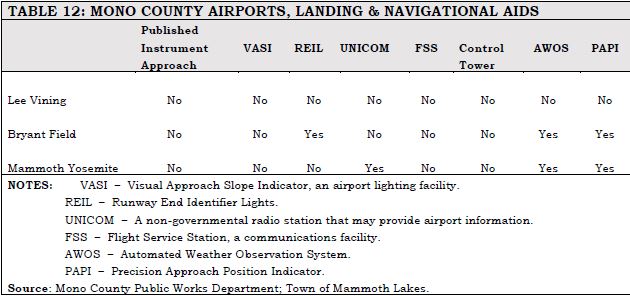
Aviation issues and needs include the following:
- No transportation terminals in the county exist aside from the terminal at the Mammoth Yosemite Airport. Use of that facility is discussed in the Mammoth Yosemite Comprehensive Land Use Plan (CLUP) and the Airport Master Plan. The three airports in the county are important for both residents and visitors. For visitors, the air services provide the only alternate mode of transportation into Mono County. For residents, the air service permits rapid communication with governmental, business, and medical centers in the western part of the state and rapid emergency medical transportation when necessary.
- Land use at all airports in the county is governed by the Airport Land Use Commission (ALUC). The Commission has adopted Comprehensive Land Use Plans (CLUPs) for the airports in the county.
- Expansion of commercial airline service, general aviation operations, and transit connections is considered to be an integral element in alleviating surface transportation problems in the town of Mammoth Lakes. Continued improvement of the Mammoth Yosemite Airport facilities and creation of revenue-generating airport businesses will be necessary before the airport can assume its full role in expanding air transportation services.
- The Town of Mammoth Lakes has formed a public private partnership with Mammoth Mountain Ski Area (MMSA) and Mammoth Lakes Tourism (MLT) to bring commercial air service to the community. The Town operates the airport and provides facilities and equipment that support commercial air service. The Town also seeks funding from the Federal Aviation Administration and other entities to fund capital improvements at the airport. MMSA and MLT secure revenue guarantee contracts with airlines that bring air service to the airport by guaranteeing the airline a minimum return on investment. Without these contracts, air service would not be possible in our area. Currently, the Town is working with the FAA to construct a new terminal building at the airport. A new terminal facility will enhance the ability of the Town and its partners to attract air carriers from a verity of markets. It is expected that the new terminal building and associated ramp and infrastructure will cost approximately $32 million with the FAA picking up approximately 90% of the cost.
- The California Aviation System Plan (CASP) identifies all the airports in the county as ones considered to be the Eastern Sierra’s highest priority facilities in terms of system capacity and safety enhancement. The CASP suggests needed safety improvements at all of the county’s airports.
- Operational and safety improvements are planned at Bryant Field and the Lee Vining Airport; the short-term capital improvement programs for Bryant Field and the Lee Vining Airport include these operational and safety improvements (see Chapter 5, Action Element).
Sustainable Communities Strategy
Metropolitan Planning Organizations (MPOs) are required to incorporate a Sustainable Communities Strategy (SCS) into their RTP in order to provide a process for meeting emissions-reducing goals for each region. The SCS is meant to integrate land use and transportation planning, programs, and projects as a means of reducing greenhouse gas emissions (GHGs). An SCS follows smart-growth planning concepts that seek to integrate development with housing and transportation near jobs, shopping, and schools.
The SCS focuses on the following areas:
- Identifying the general location of uses, residential densities, and building intensities within the region;
- Identifying areas within the region sufficient to house all the population of the region, including all economic segments of the population over the course of the planning period of the regional transportation plan taking into account net migration into the region, population growth, household formation and employment growth;
- Identifying areas within the region sufficient to house an eight-year projection of the regional housing need for the region;
- Identifying a transportation network to service the transportation needs of the region;
- Considering the best practically available scientific information regarding resource areas and farmland in the region;
- Considering the state housing goals;
- Utilizing the most-recent planning assumptions, considering local general plans and other factors;
- Establishing forecasted development patterns for the region, which, when integrated with the transportation network and otachieve, if there is a feasible way to do so, the greenhouse gas emission reduction targets;
- Providing consistency between the development pattern and allocation of housing units within the region; and
- Allowing the regional transportation plan to comply with Section 176 of the federal Clean Air Act.her transportation measures and policies, will reduce the greenhouse gas emissions from automobiles and light trucks to
Mono County, since it is not an MPO, is not required to develop and implement an SCS as part of the RTP. However, the County has taken a proactive stance toward achieving reductions in GHG emissions. Due to the unique physical and land ownership characteristics of land throughout the county, the County has long sought to integrate development within existing communities and to work with the existing transportation system. Mono County and the Town of Mammoth Lakes continue to proactively focus on providing for additional growth within existing communities and on developing a multi-modal transportation system that serves the needs of residents and visitors while at the same time protecting natural resources and reducing greenhouse gas emissions.
The topics to be addressed in an SCS are currently addressed either in the general plans for Mono County and the Town of Mammoth Lakes, or in the Resource Efficiency Plan, discussed previously in this Section. In addition, the County has other plans that support efficient regional development including the draft Mono County Regional Blueprint (Appendix F) and the Eastern Sierra Landownership Adjustment Project. The draft Mono County Regional Blueprint is a collaborative planning process that addresses regional growth management and a coordinated approach to transportation planning. The Blueprint includes a long-range vision, guiding principles, and an implementation strategy that are consistent with the Mono County and Town of Mammoth Lakes general plans and that can be implemented through the general plans. It focuses on providing a “safe, convenient and efficient multi-modal transportation system that enhances regional connectivity and community mobility.”
The Eastern Sierra Landownership Adjustment Project (LAP) notes that “the communities in the Eastern Sierra are uniquely protected from over-development even as they are sometimes constrained from logical and sustainable growth,” due largely to the lack of privately owned land. The Vision Statement of the LAP focuses on providing a regional growth strategy:
“Federal and state agencies, Inyo and Mono counties, local tribes, interested citizens, organizations, and private landowners will collaborate to explore and develop options to create a landownership pattern in the Eastern Sierra that better complements collaborative regional goals while preserving private property rights – focusing on opportunities to concentrate development around existing communities and infrastructure; provide workforce housing; maintain agricultural opportunities; protect water and other natural resources and open space; and consolidate agency lands.”
These planning efforts are directly compatible with the California Transportation Plan (CTP) 2040 update currently under way. The CTP is a statewide, long-range transportation plan to meet our future mobility needs and reduce greenhouse gas (GHG) emissions, and was initiated in conjunction with the California Interregional Blueprint. The CTP’s Vision is based on sustainability:
California's transportation system is safe, sustainable, universally accessible, and globally competitive. It provides reliable and efficient mobility for people, goods, and services, while meeting the State's greenhouse gas emission reduction goals and preserving the unique character of California's communities.
The Vision is supported by six goals:
- Improve multi-modal mobility and accessibility for all people;
- Preserve the multi-modal transportation system;
- Support a vibrant economy;
- Improve public safety and security;
- Foster livable and healthy communities and promote social equity; and
- Practice environmental stewardship.
[1] 2014-2015 flights included San Francisco and San Diego in California; Las Vegas, Nevada; and Denver, Colorado.
[1] See Addressing Climate change Adaptation in Regional Transportation Plans, pages 80-84, http://www.dot.ca.gov/hq/tpp/offices/orip/climate_change/documents/FR3_C... . February 2013.
[2] Original source document: Bodie Hills Multi-modal Plan (date).
[3] Original source document: Mono Basin Multi-modal plan (date).
[4] Original source document: June Lake Multi-modal Plan (date).
[1]Via searches on the American Fact Finder (U.S. Census website) at http://factfinder.census.gov/faces/nav/jsf/pages/index.xhtml and at http://factfinder.census.gov/faces/tableservices/jsf/pages/productview.x...
[2] 2014-2015 Mammoth Lakes PM10 and Meteorological Summary, Great Basin Unified Air Pollution Control District. http://www.townofmammothlakes.ca.gov/DocumentCenter/View/5292 , cited May 13, 2015.






























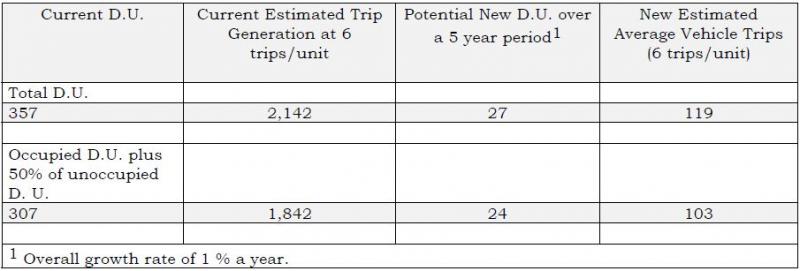

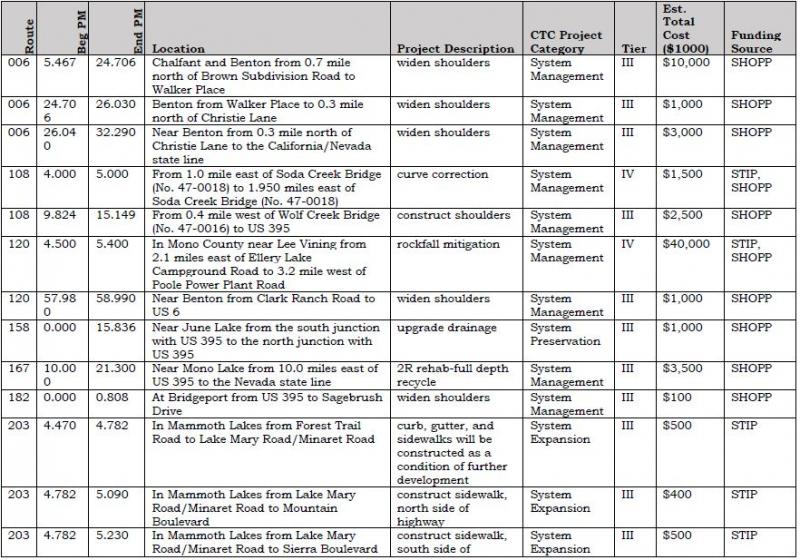



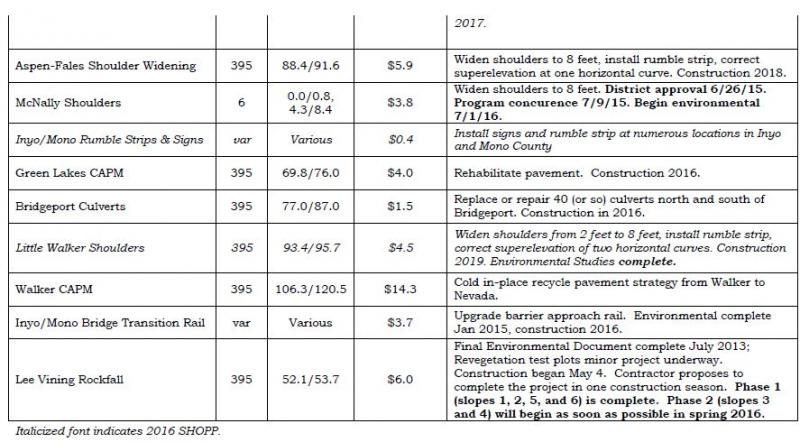
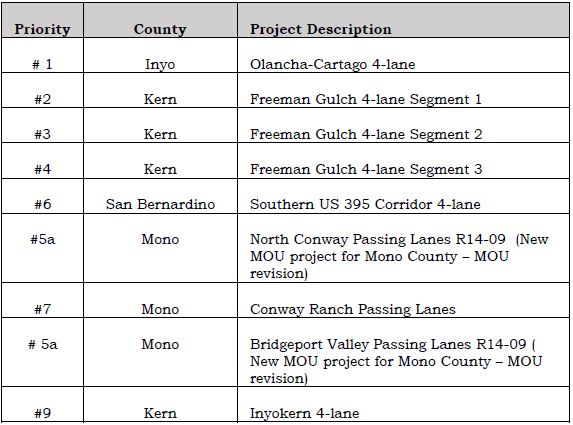

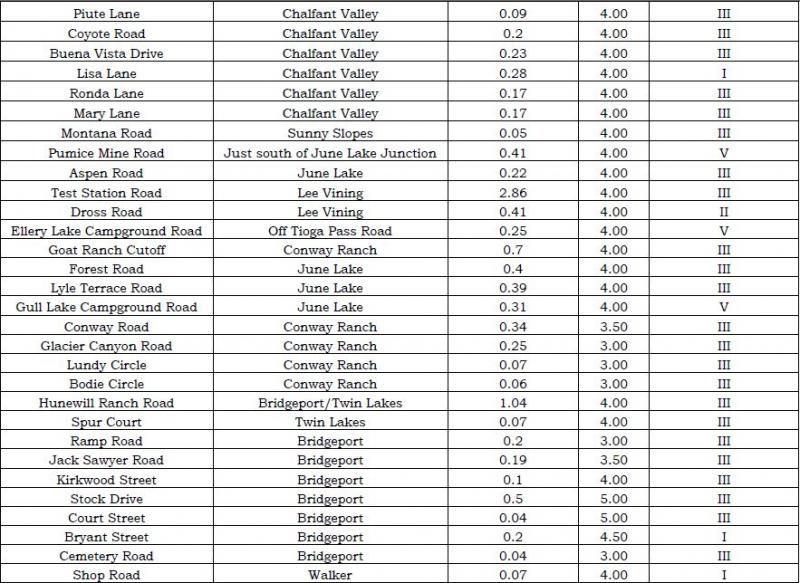
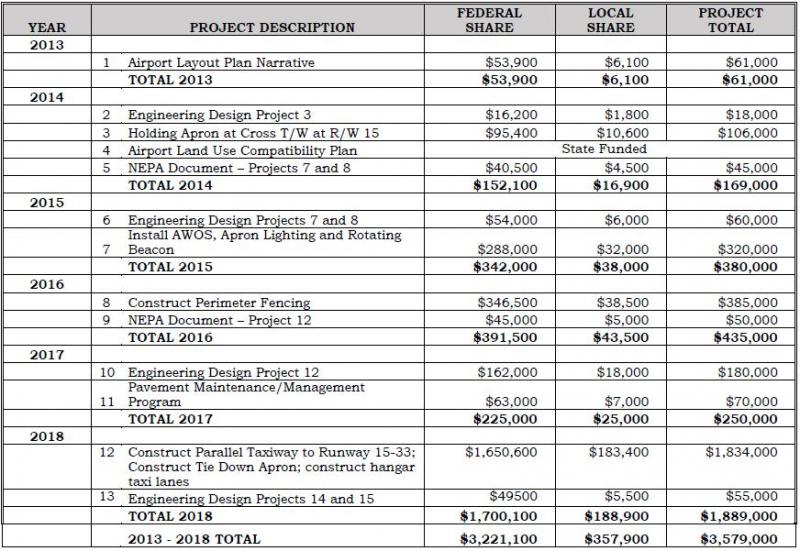

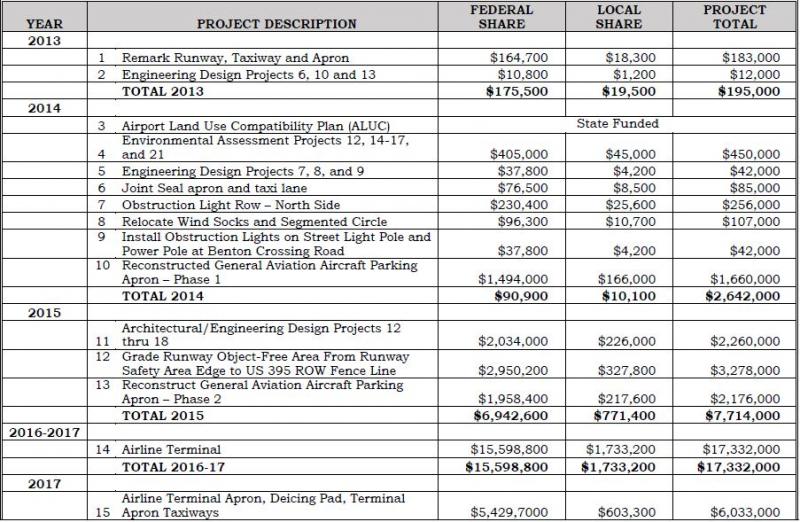
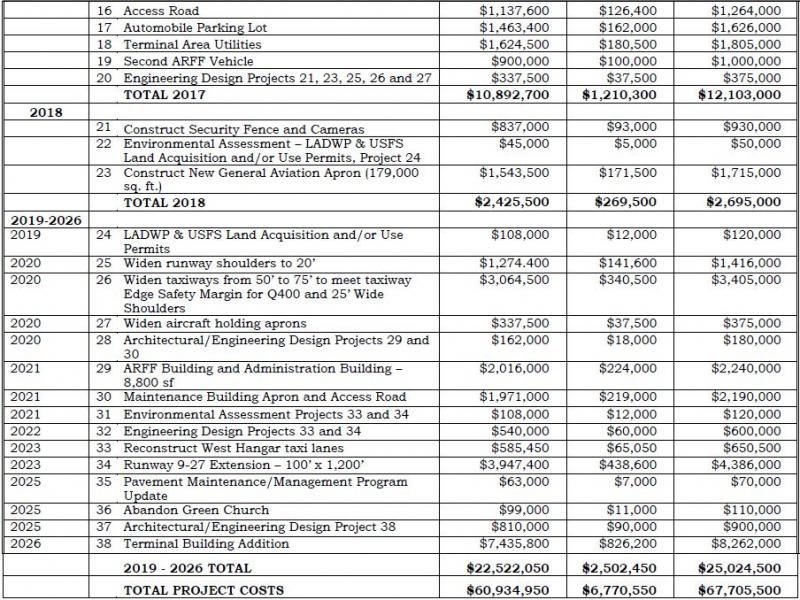
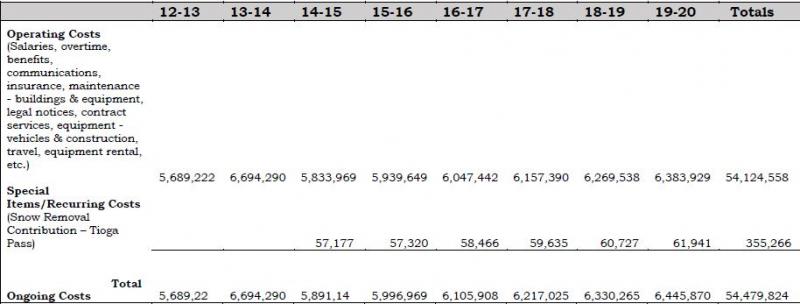
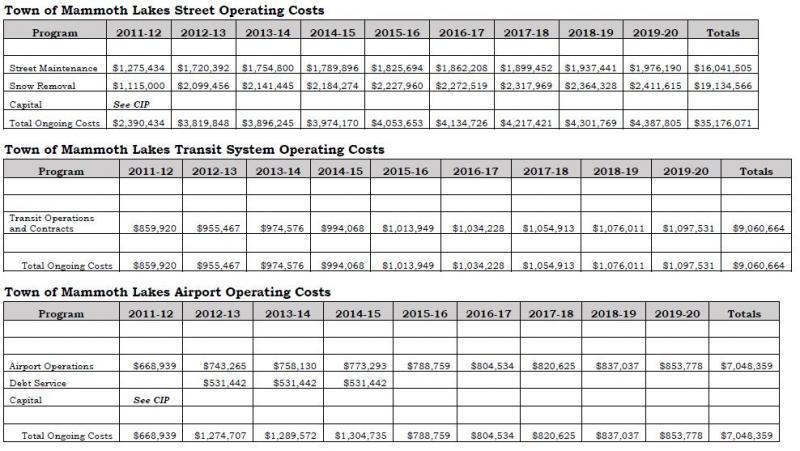




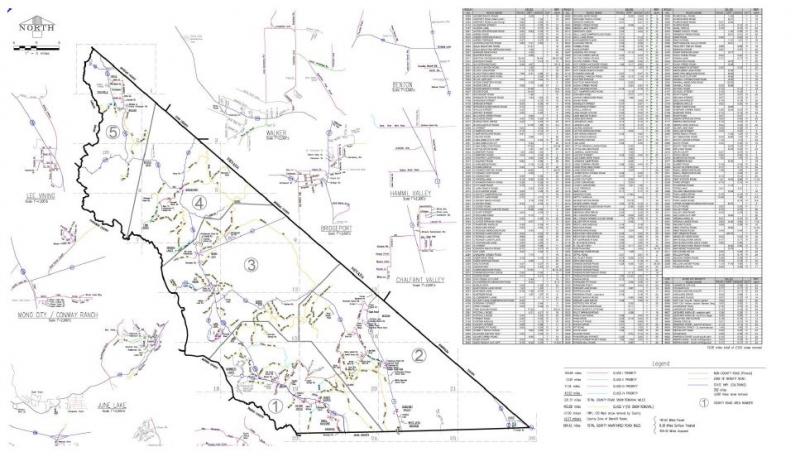
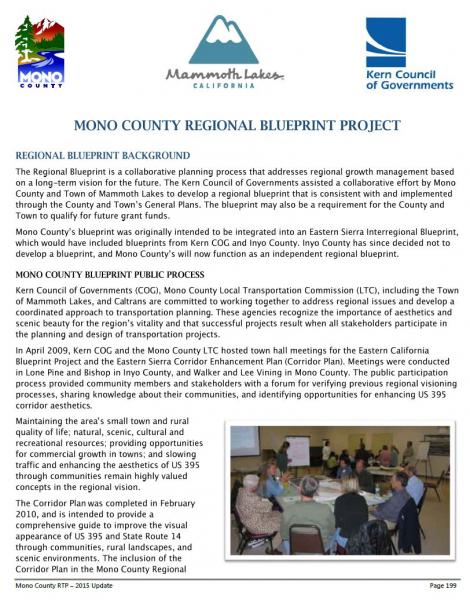

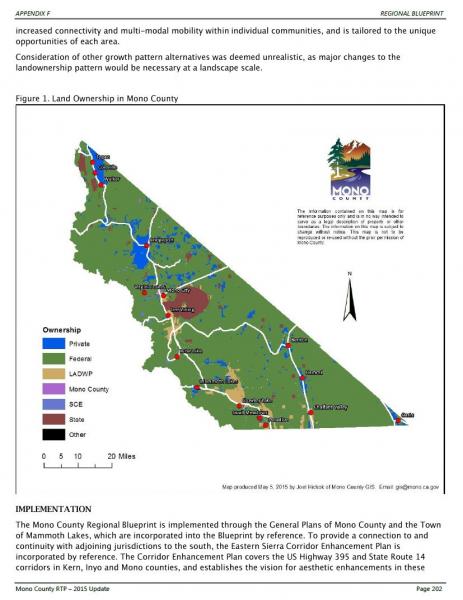
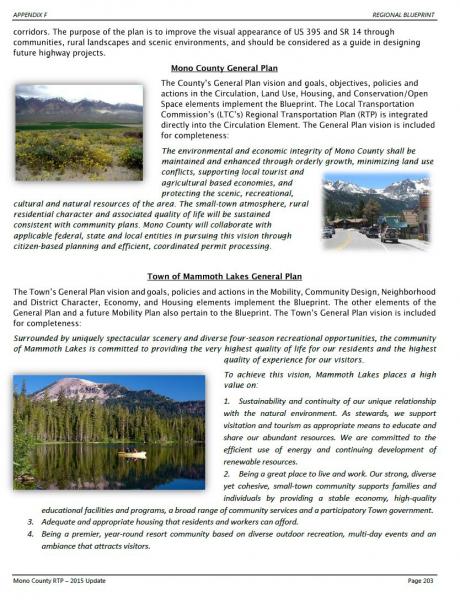
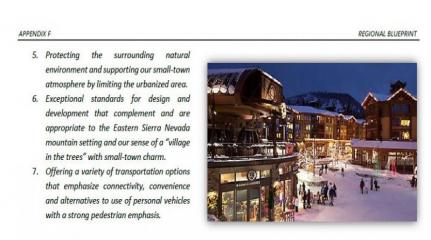
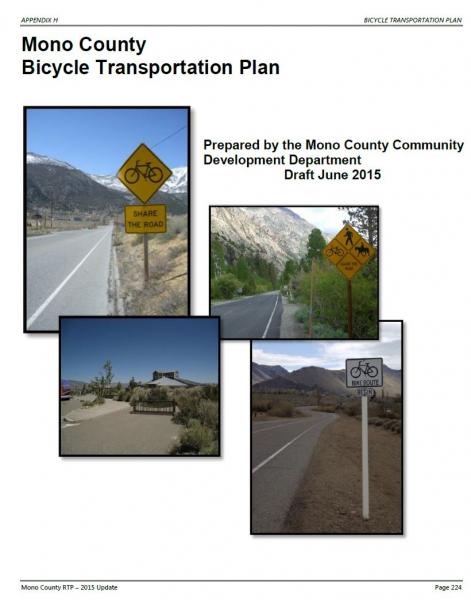
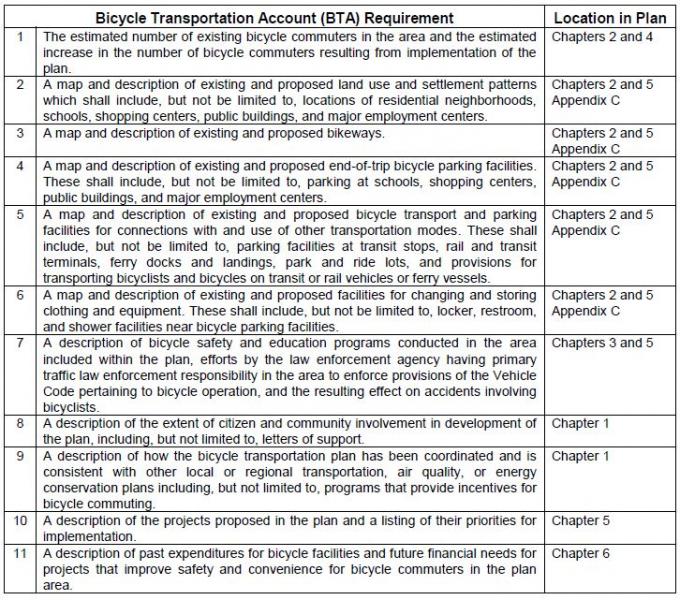
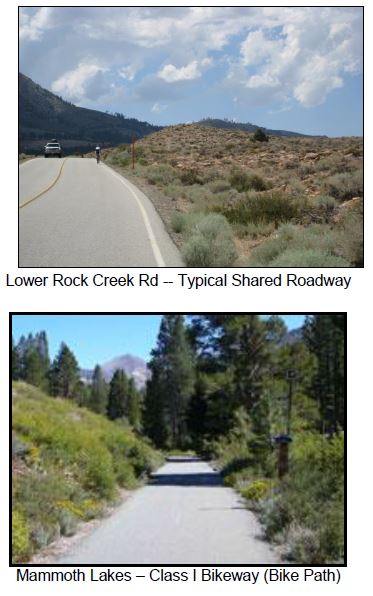
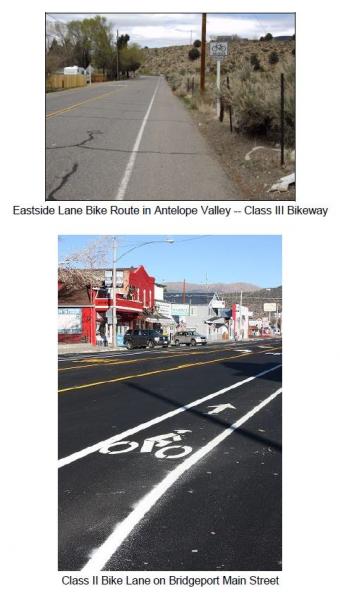
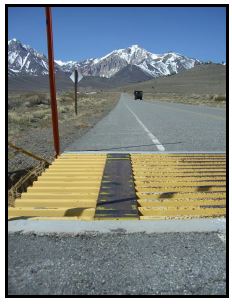



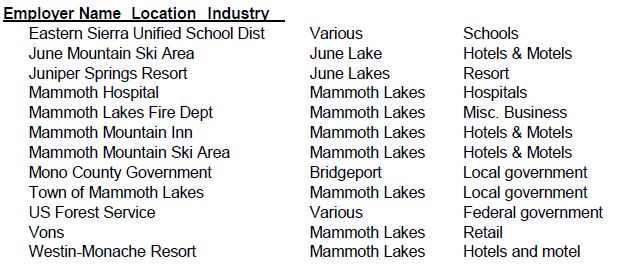
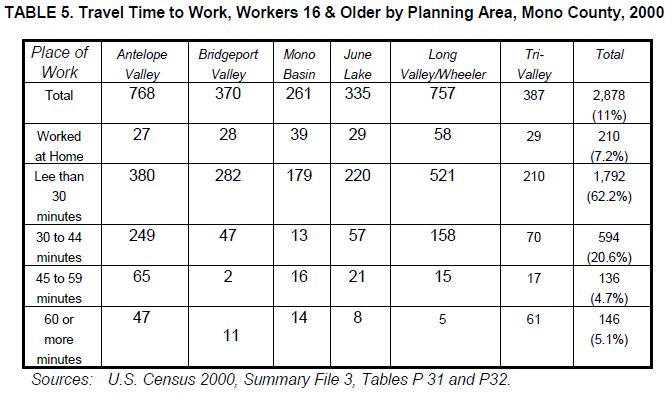
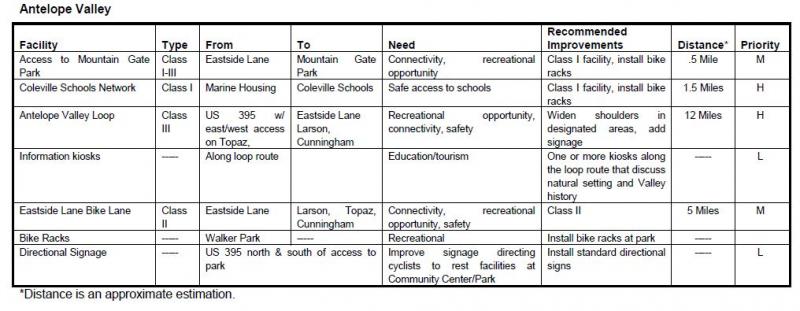
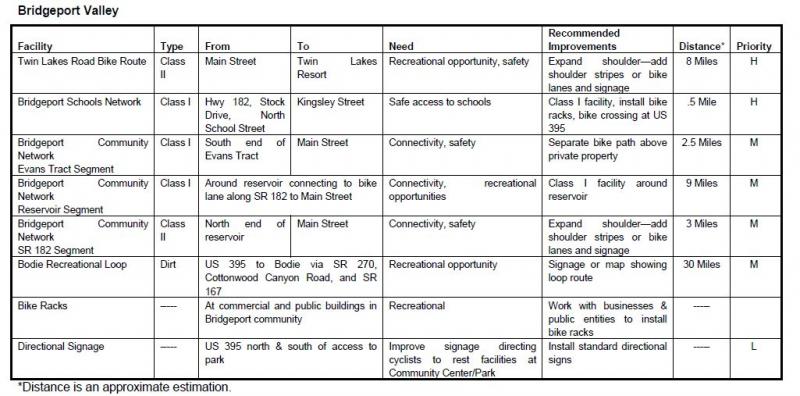
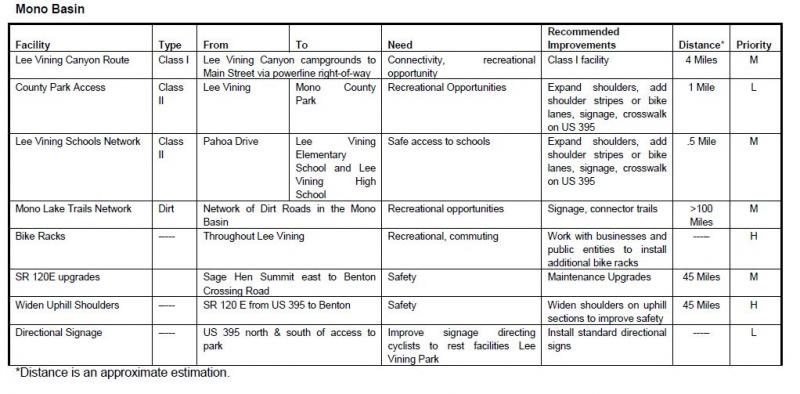
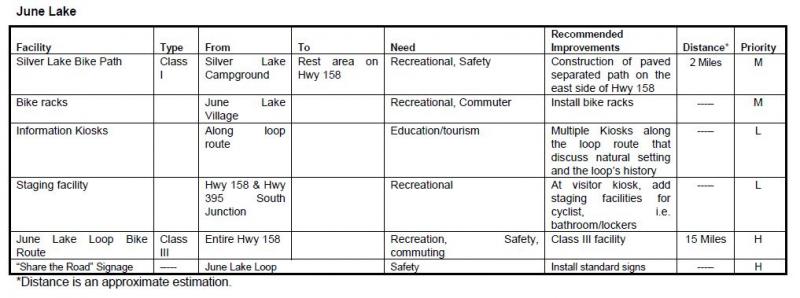


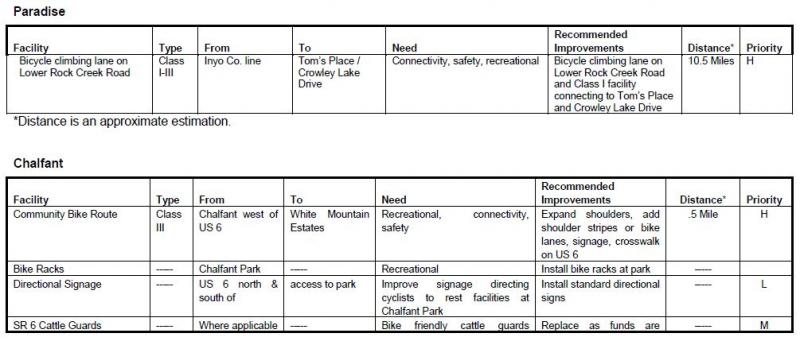




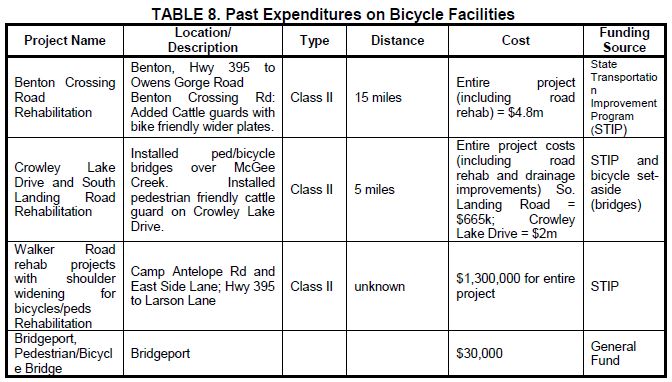


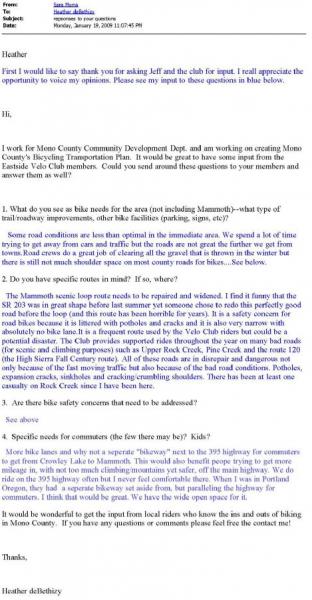

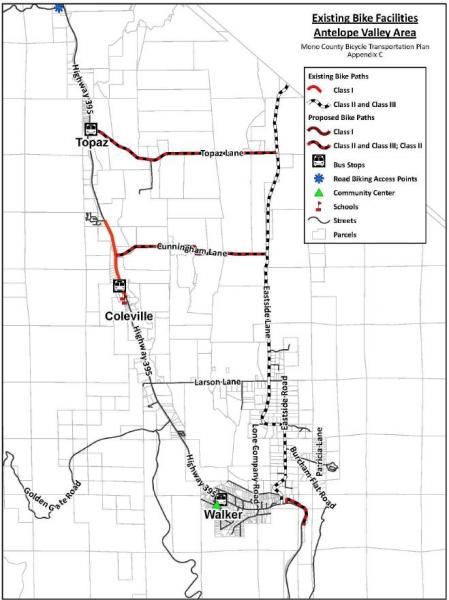
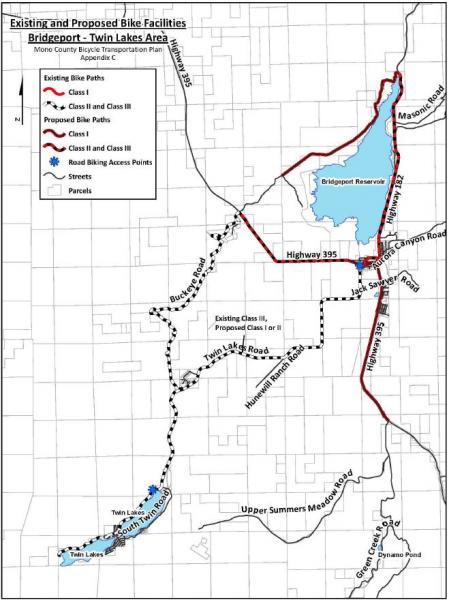
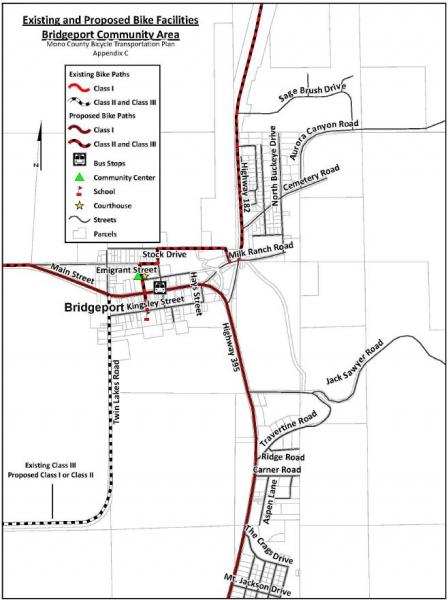
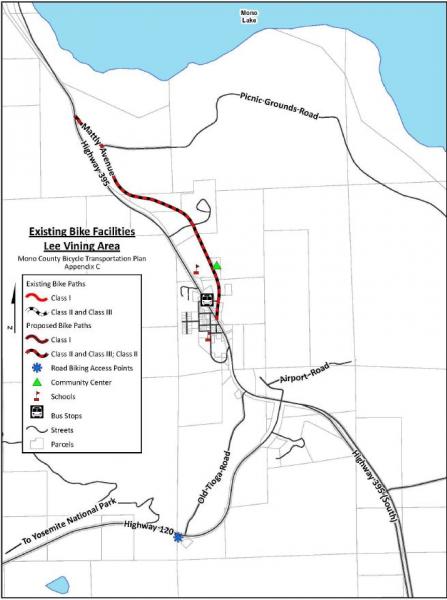
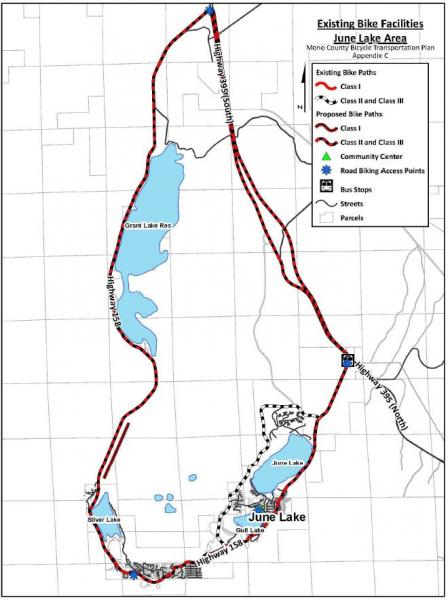
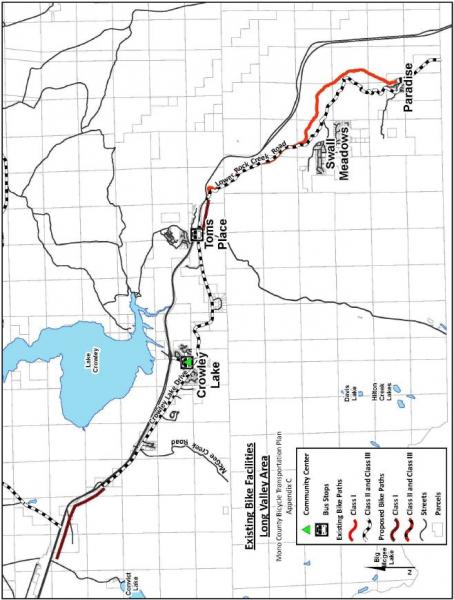
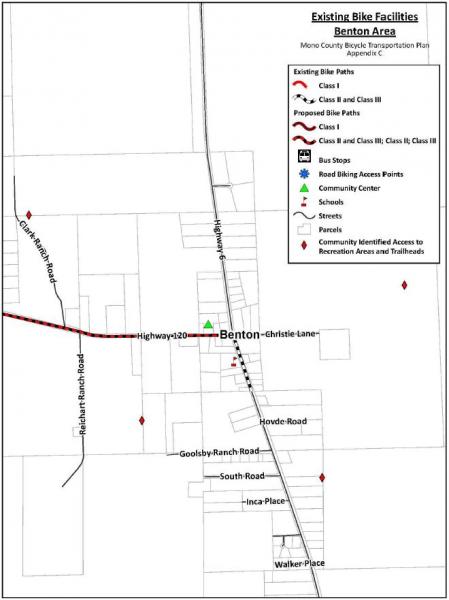
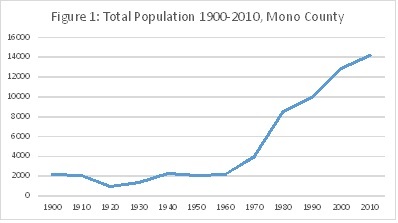








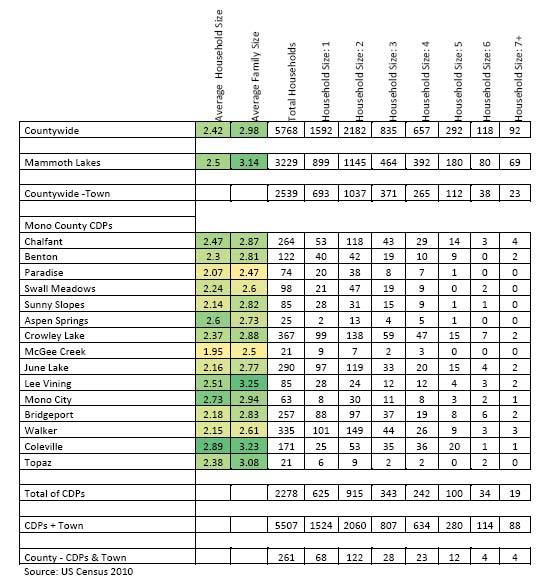


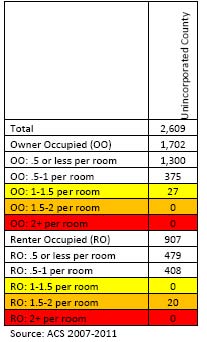




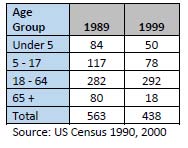
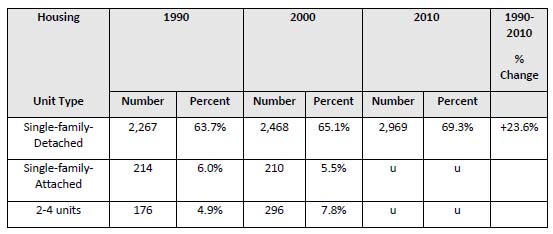
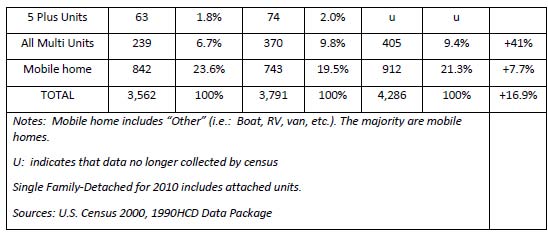



 .
.



